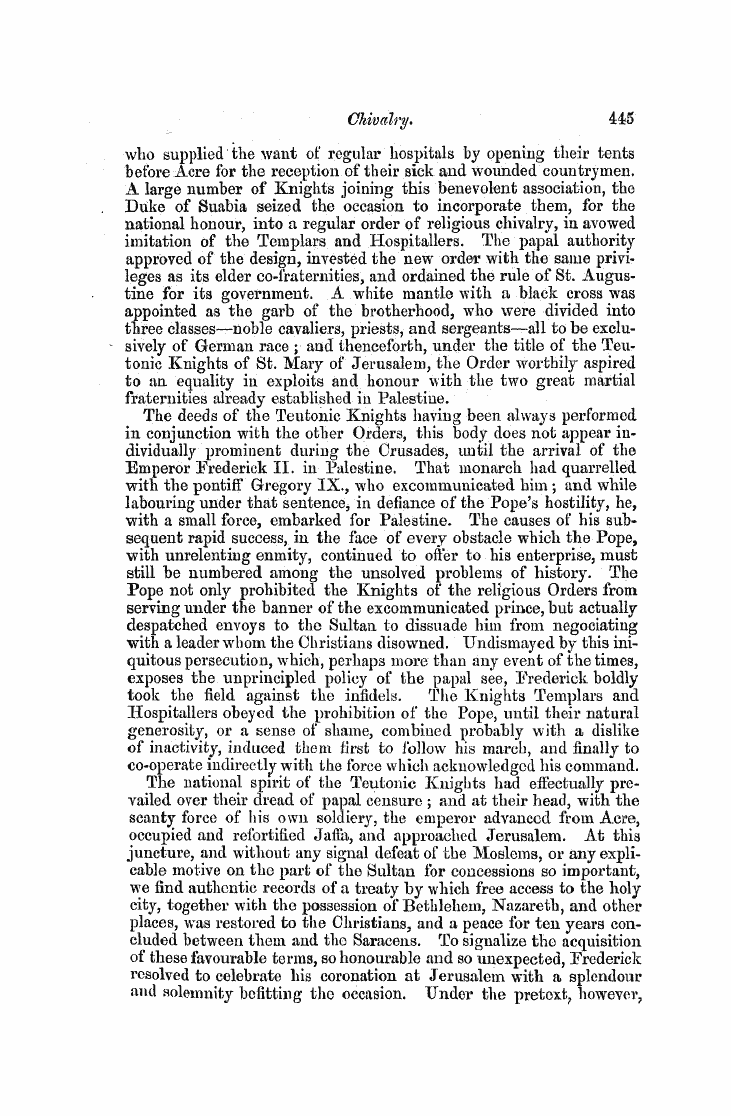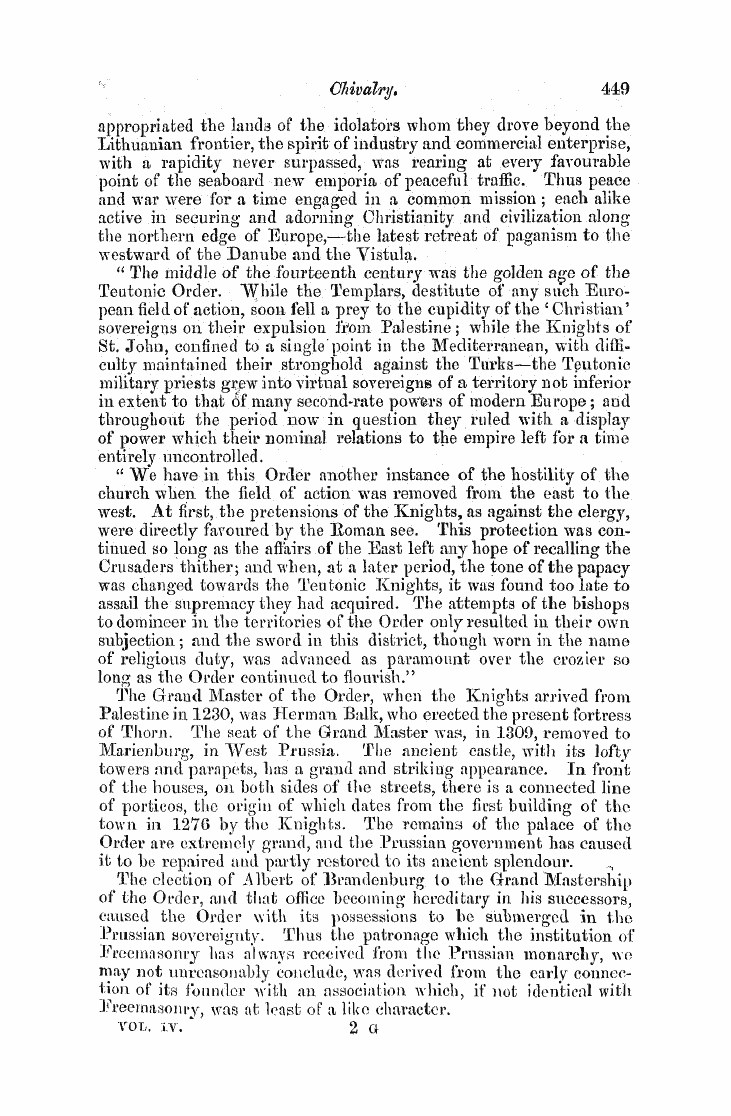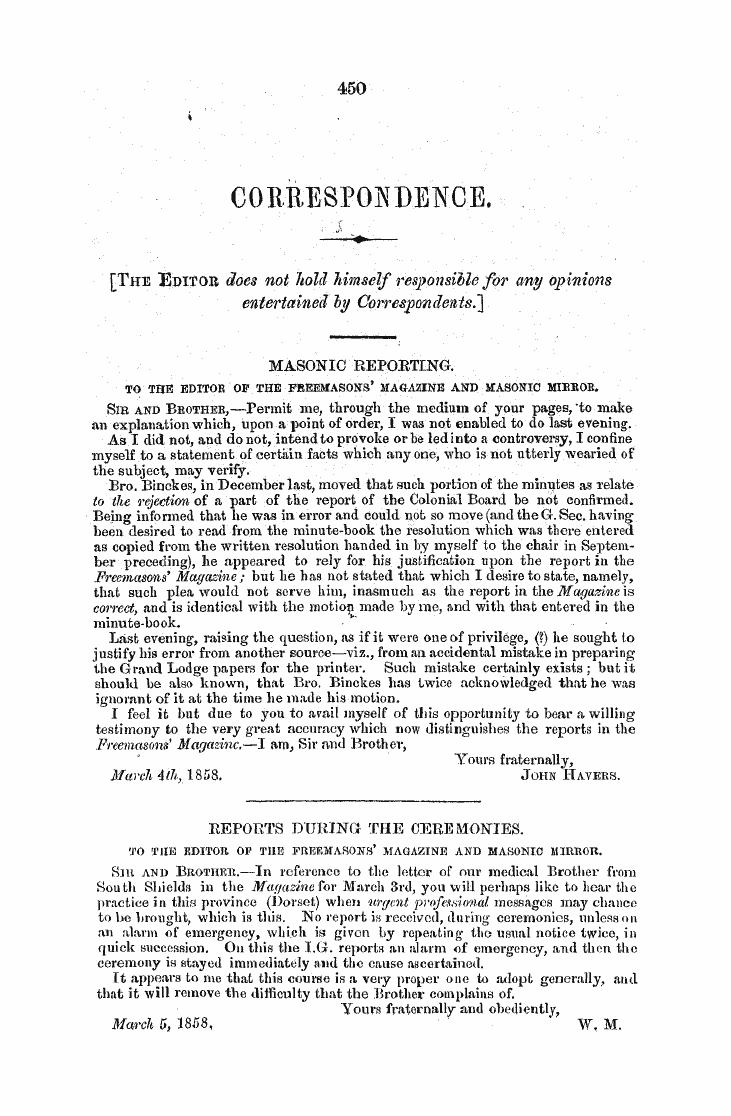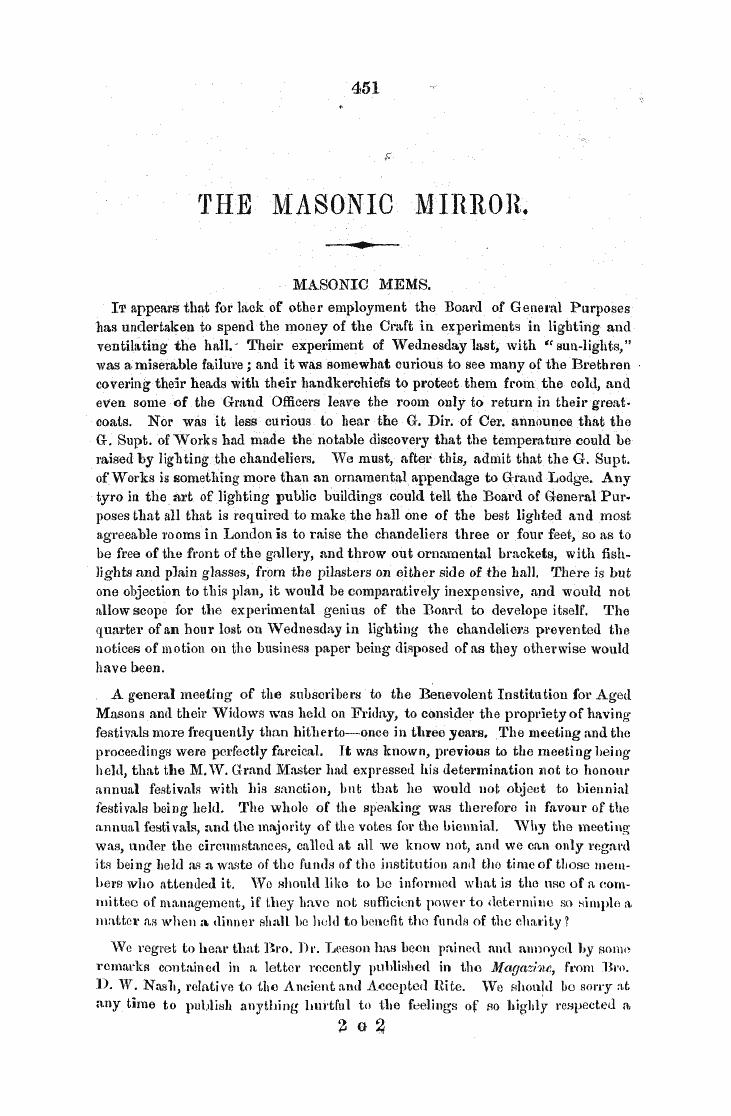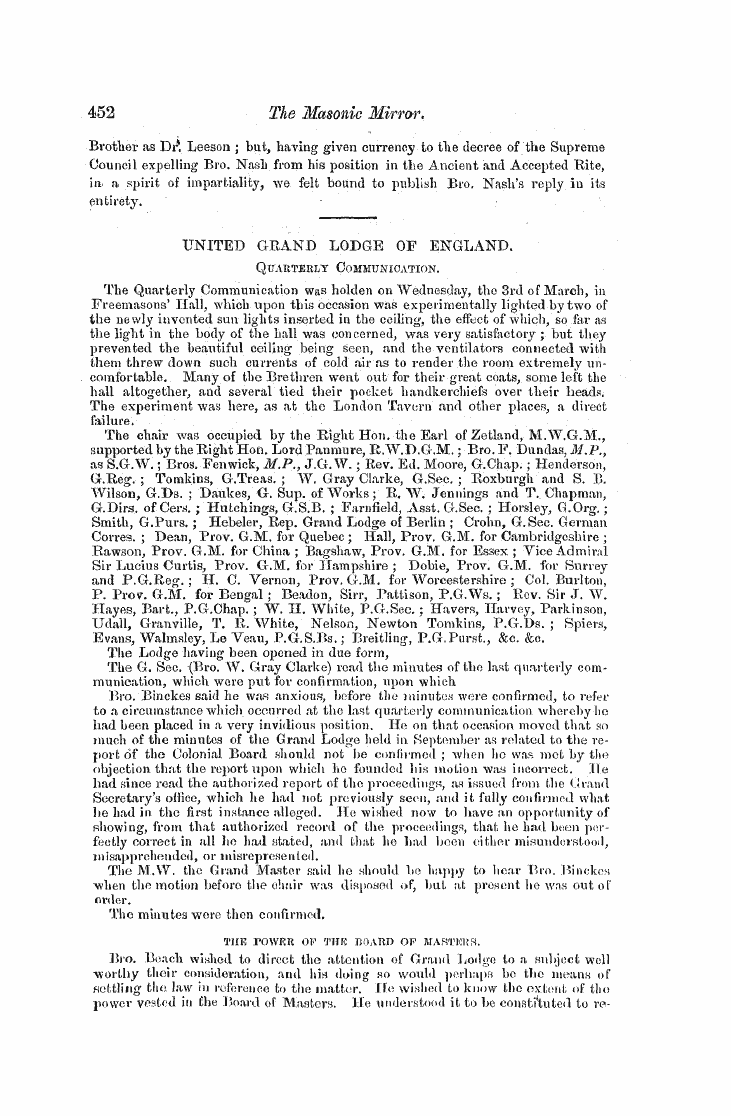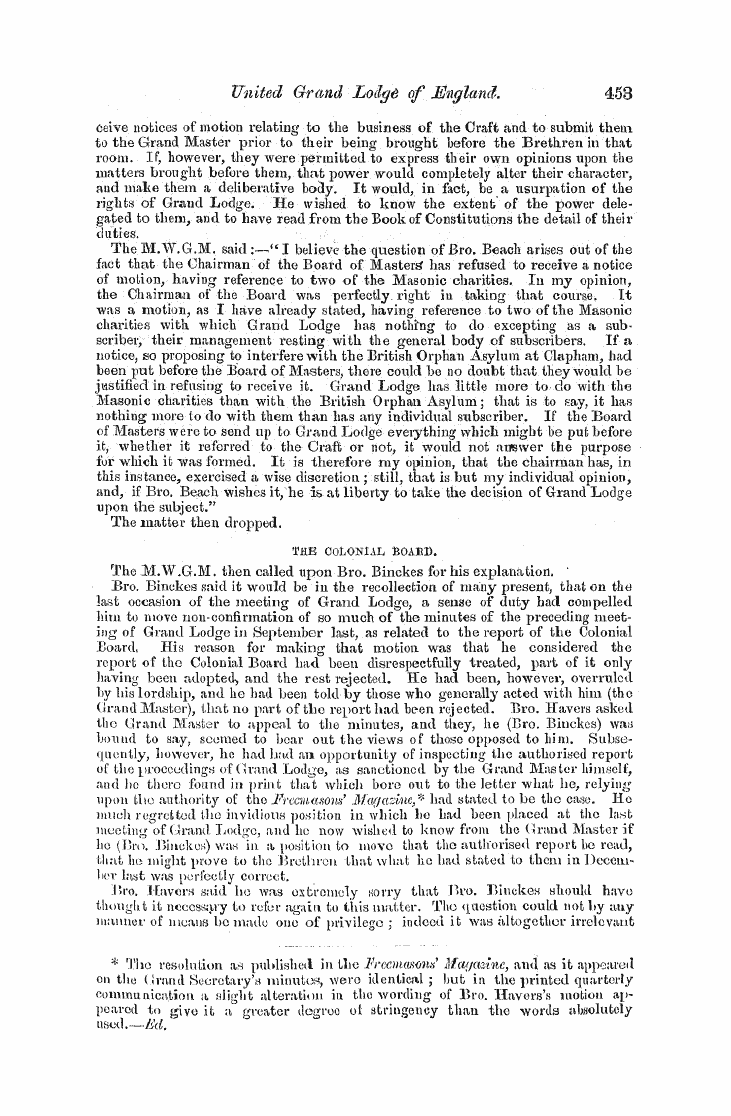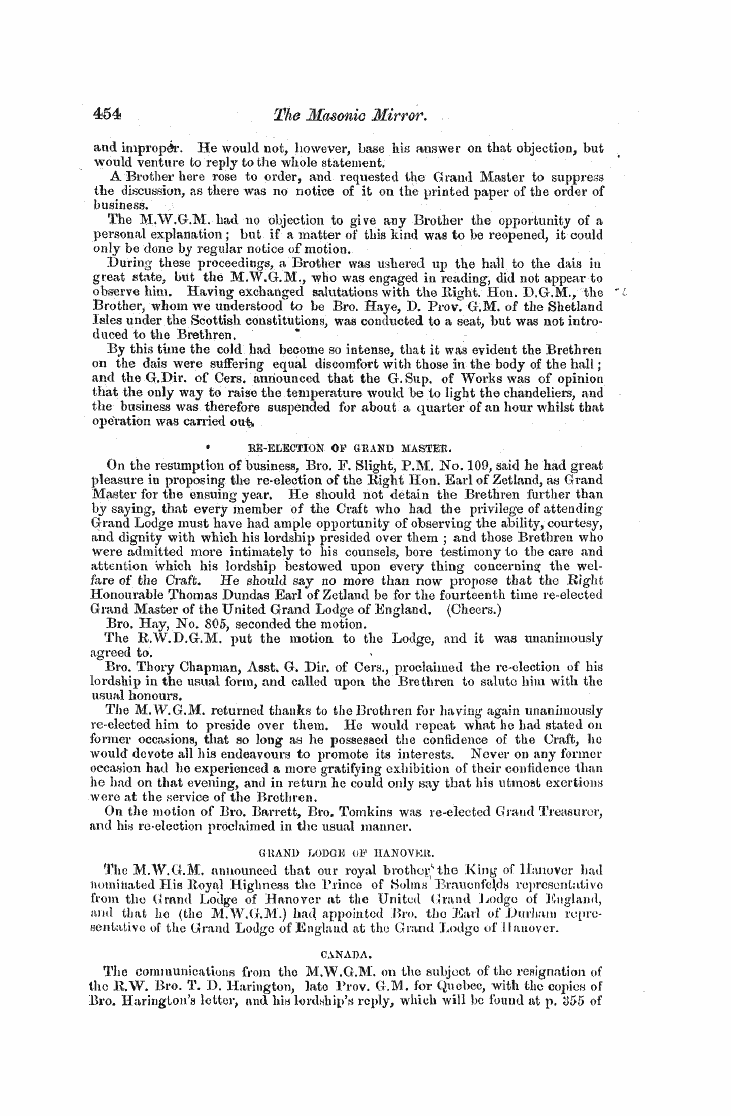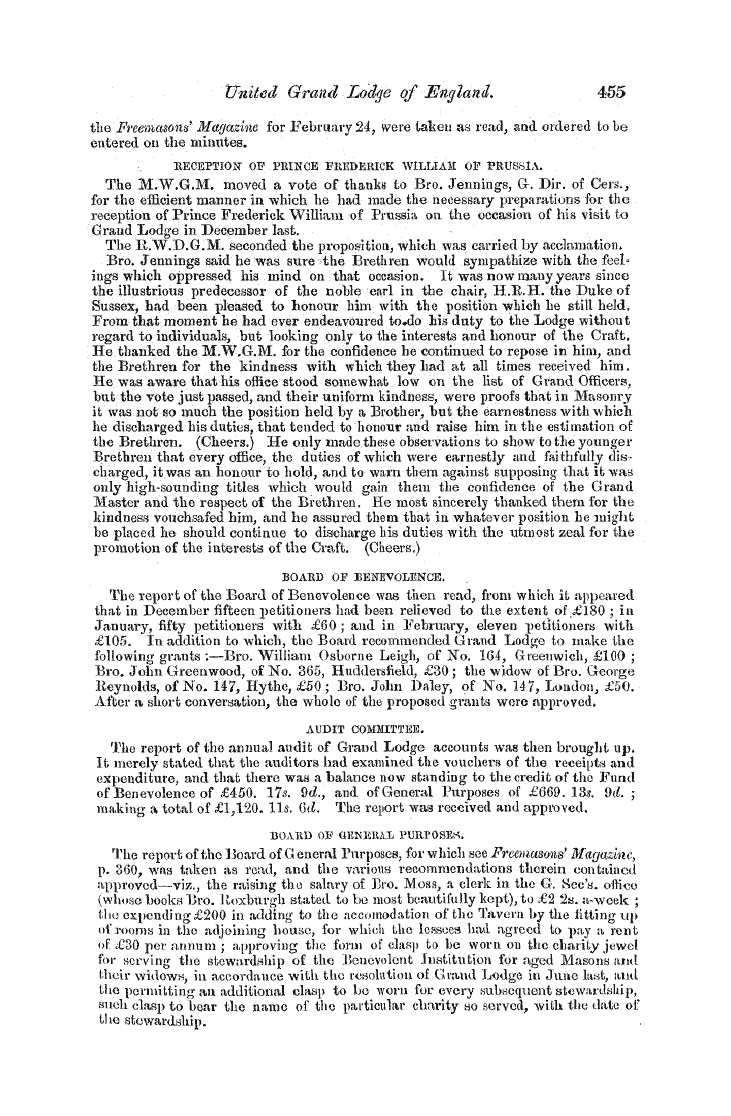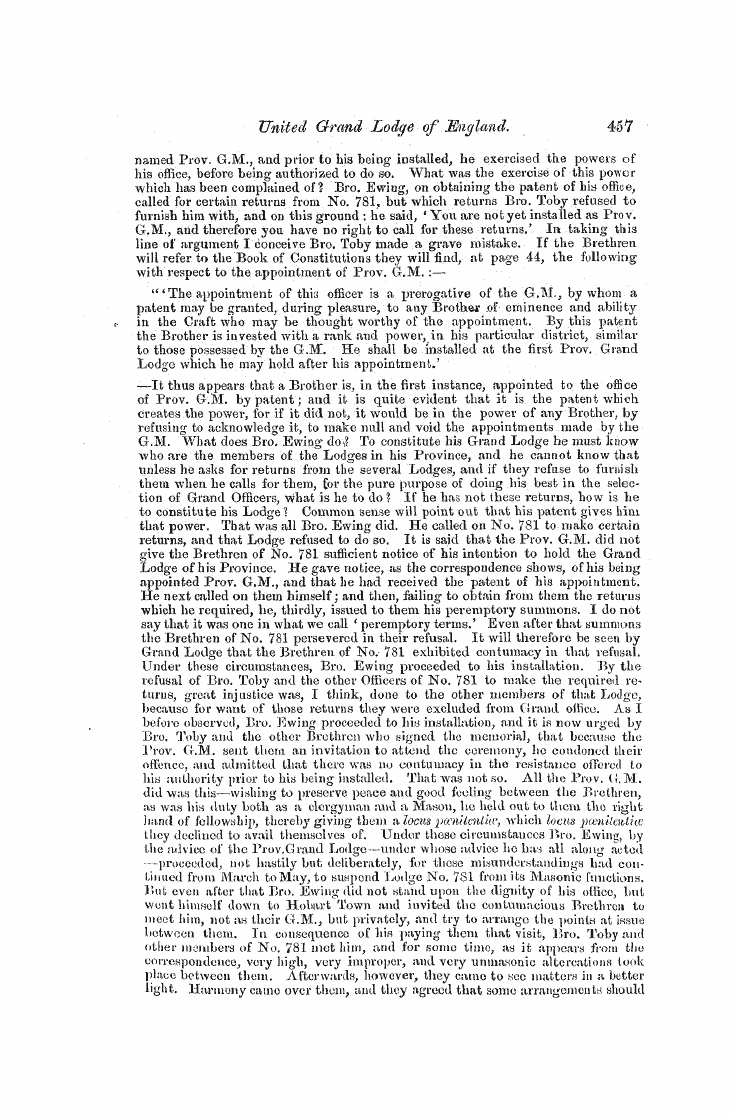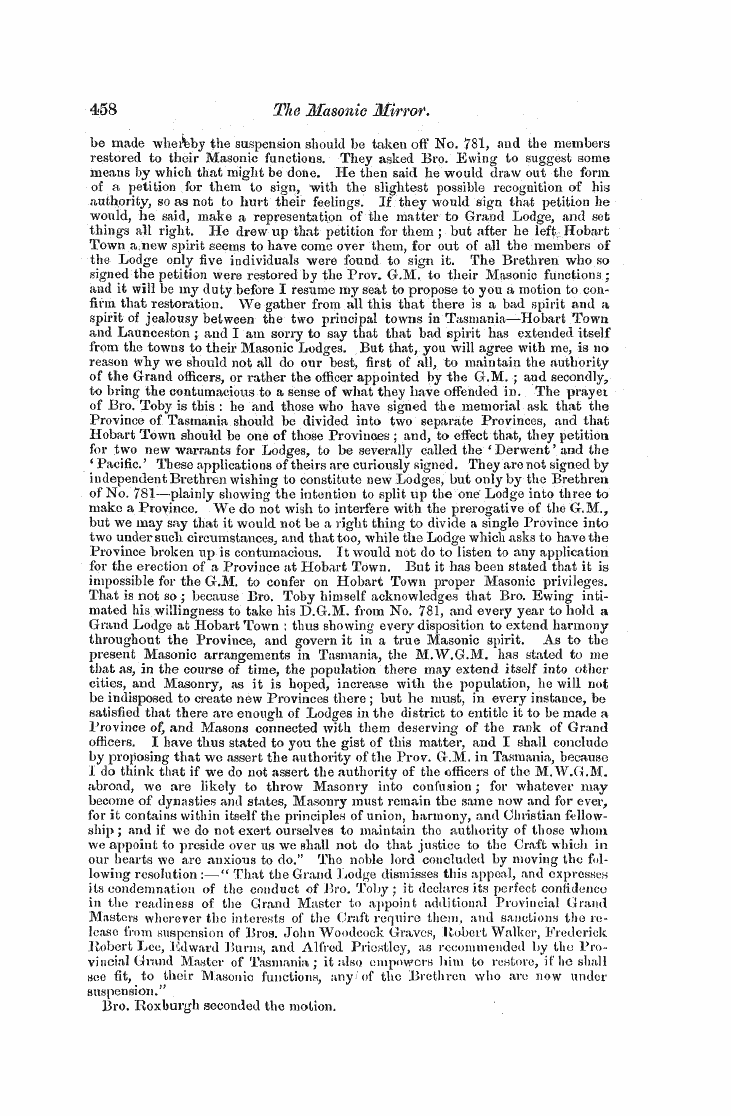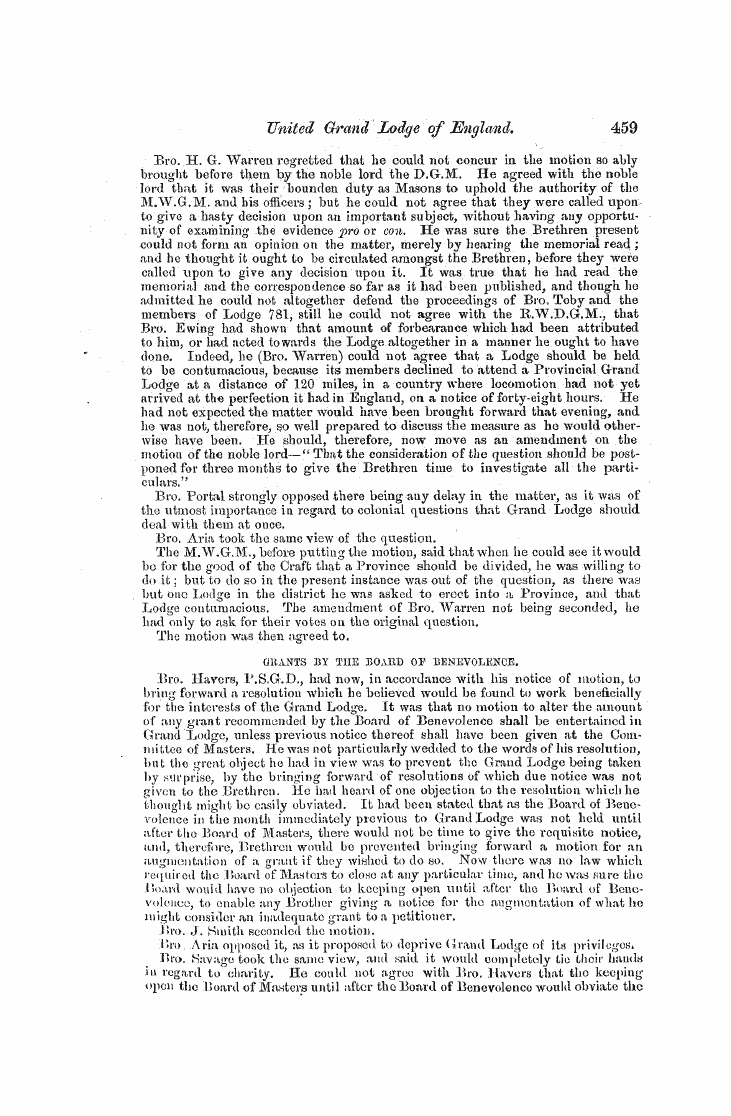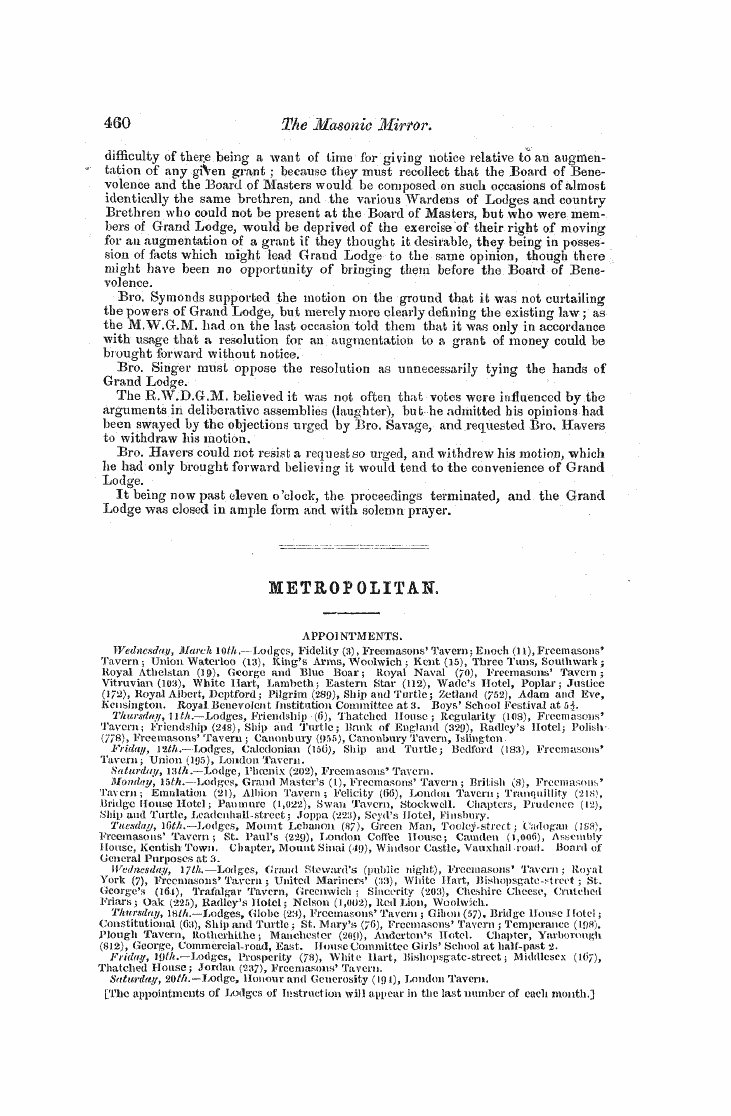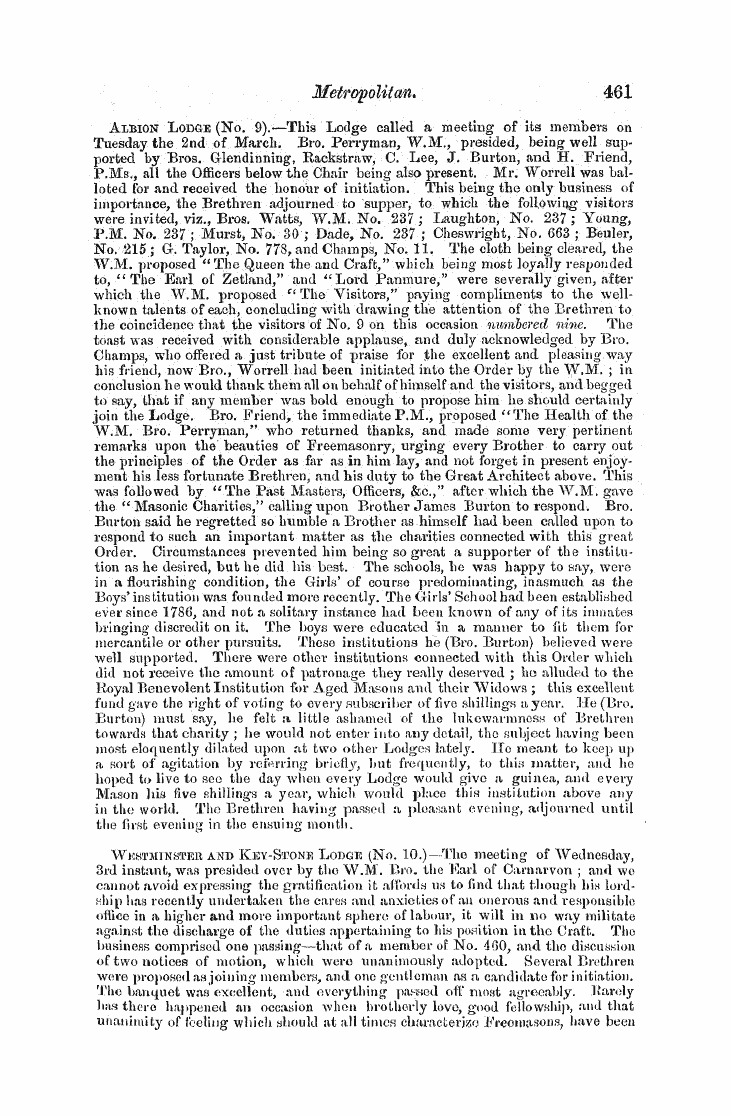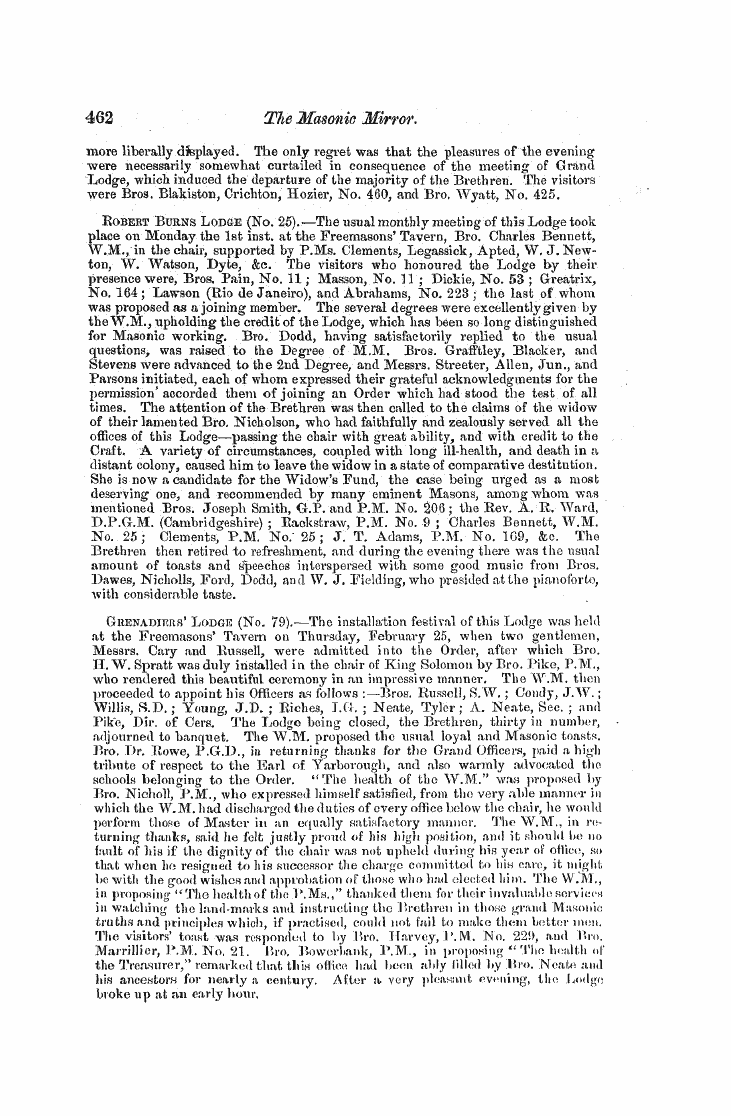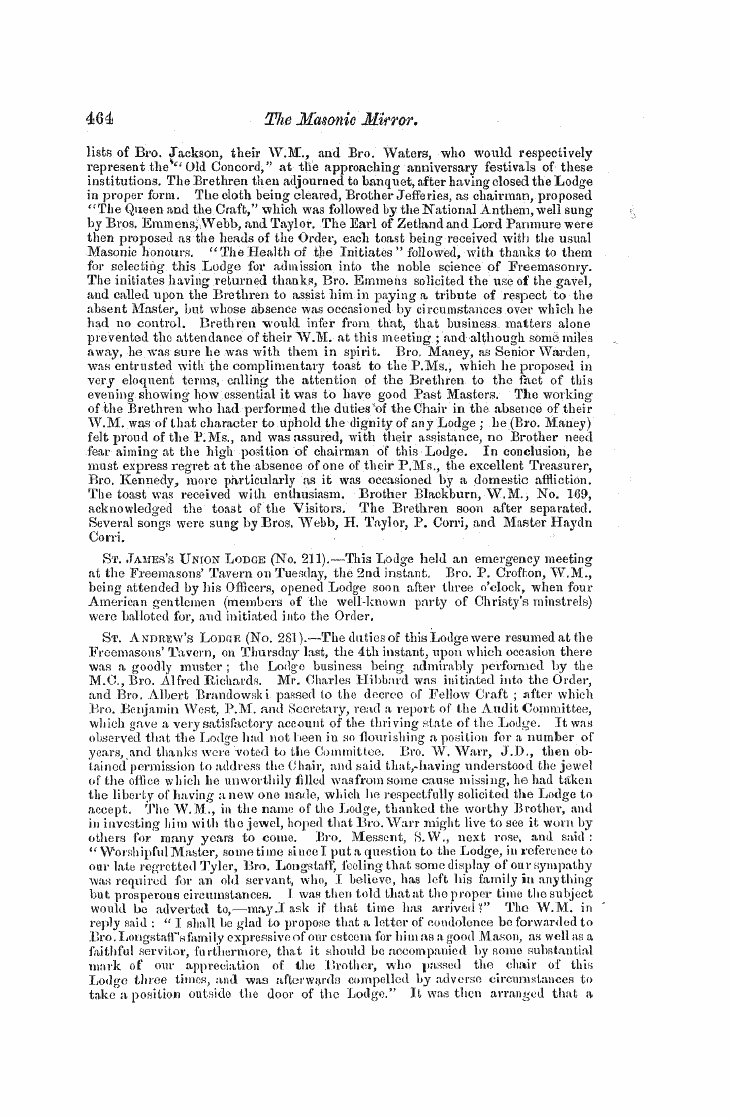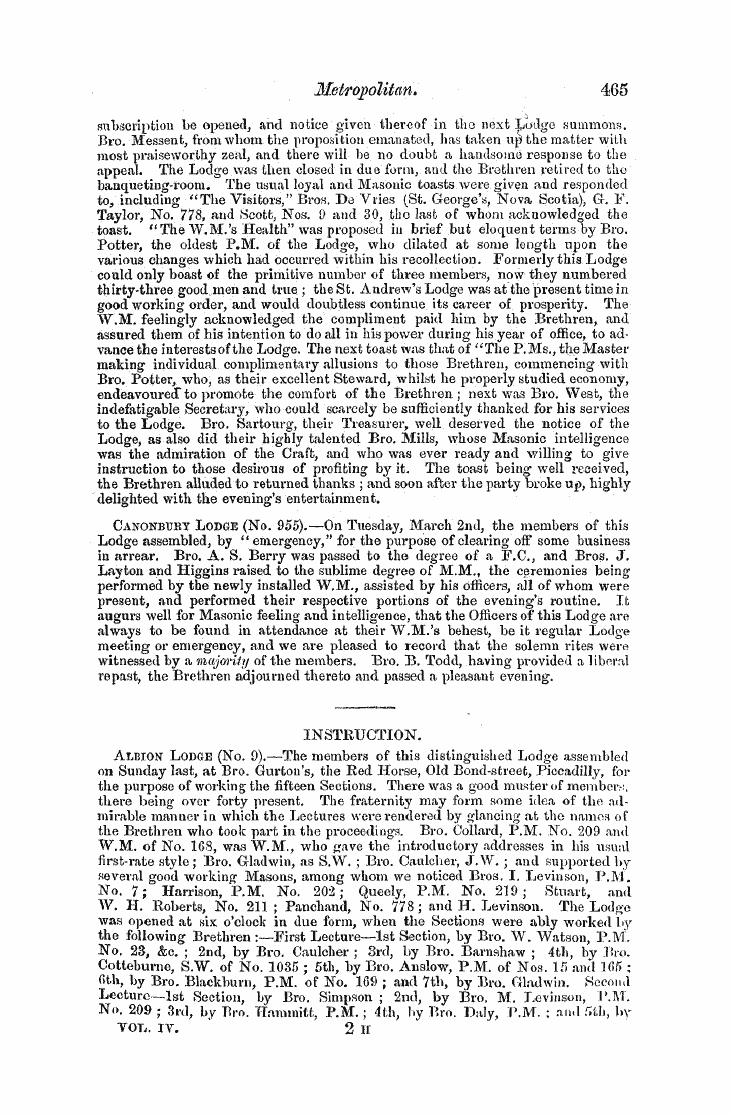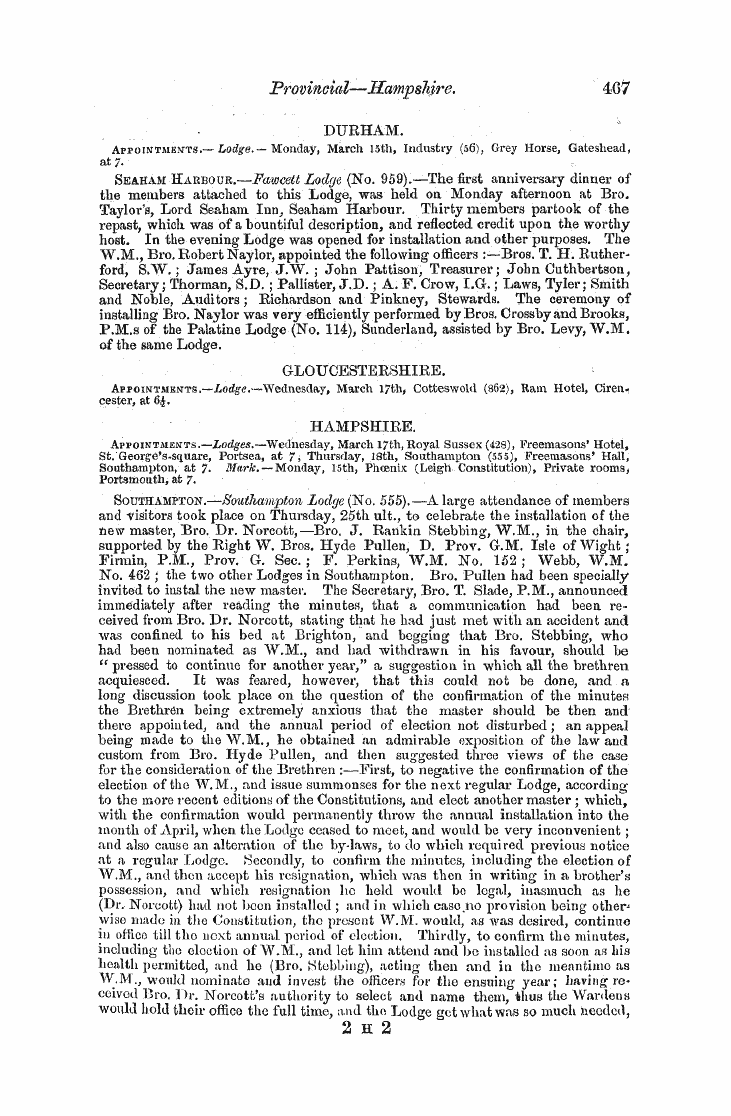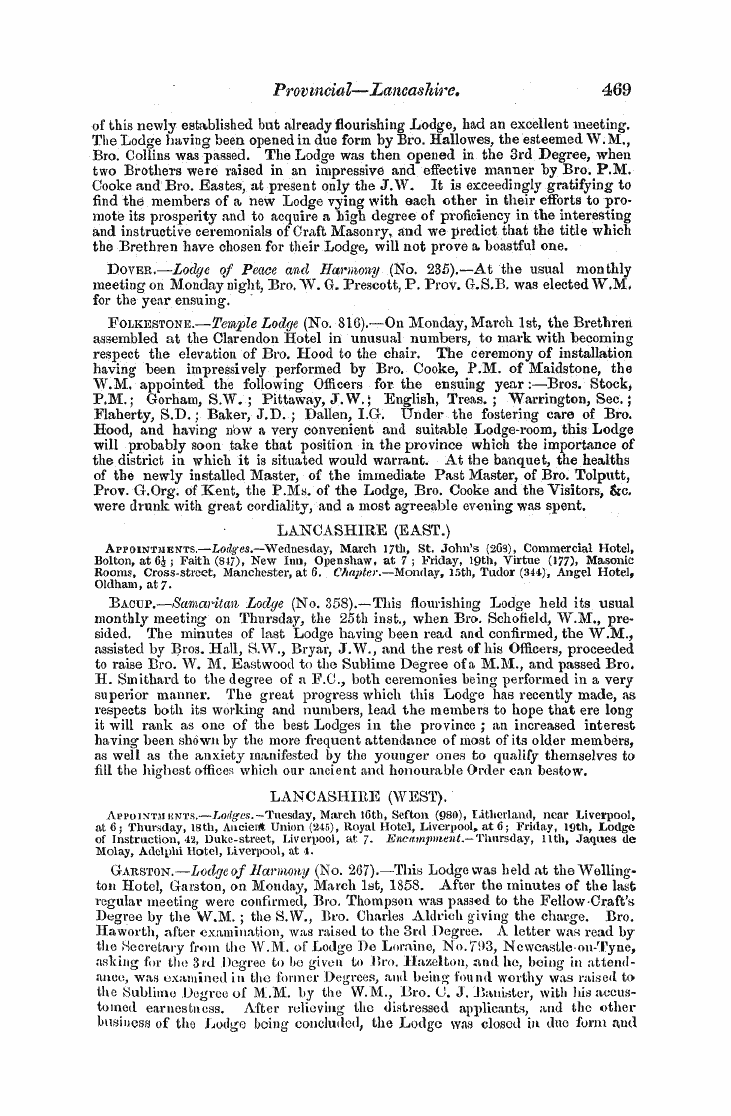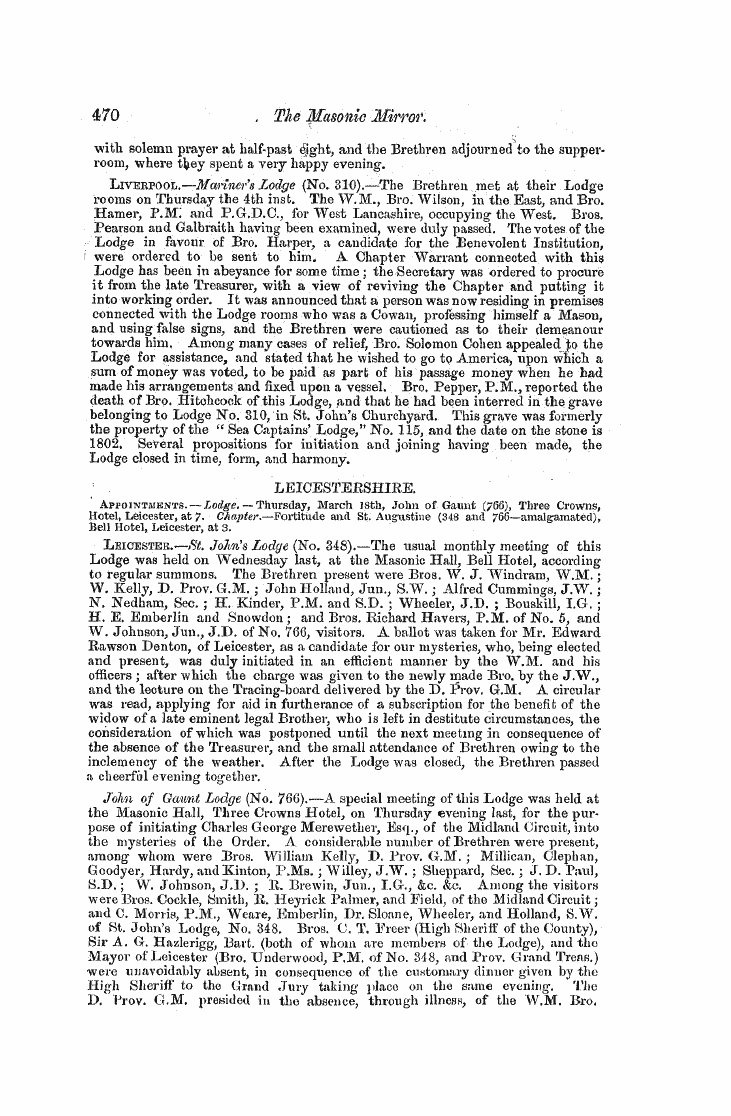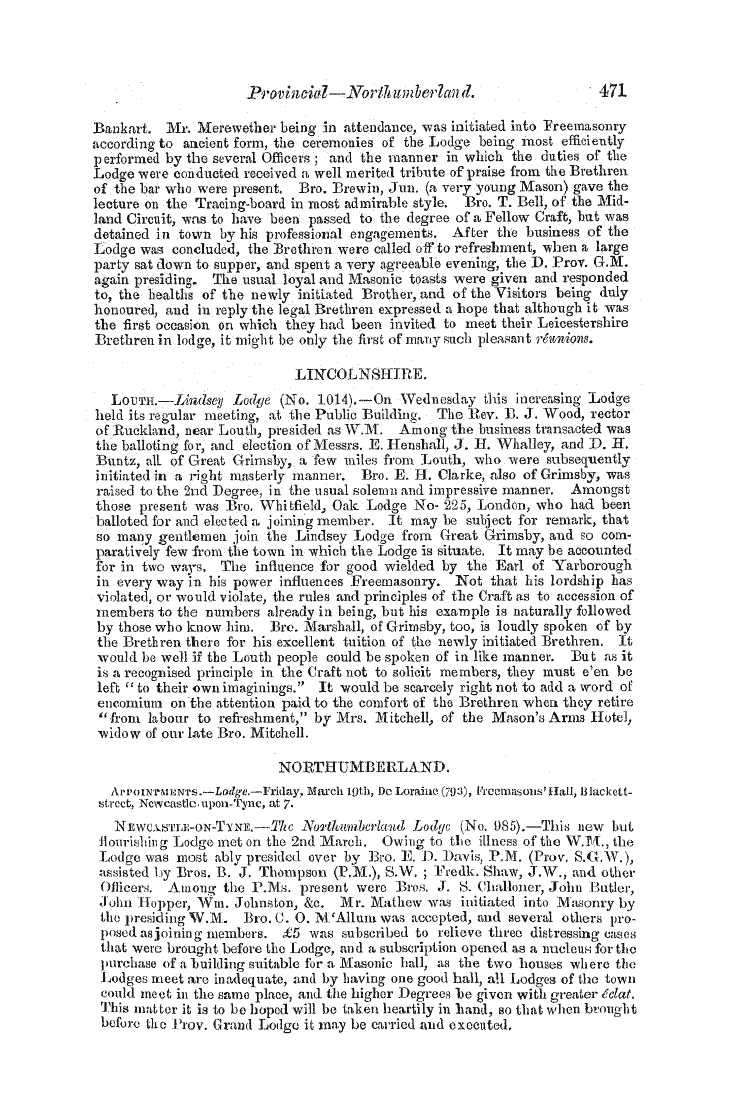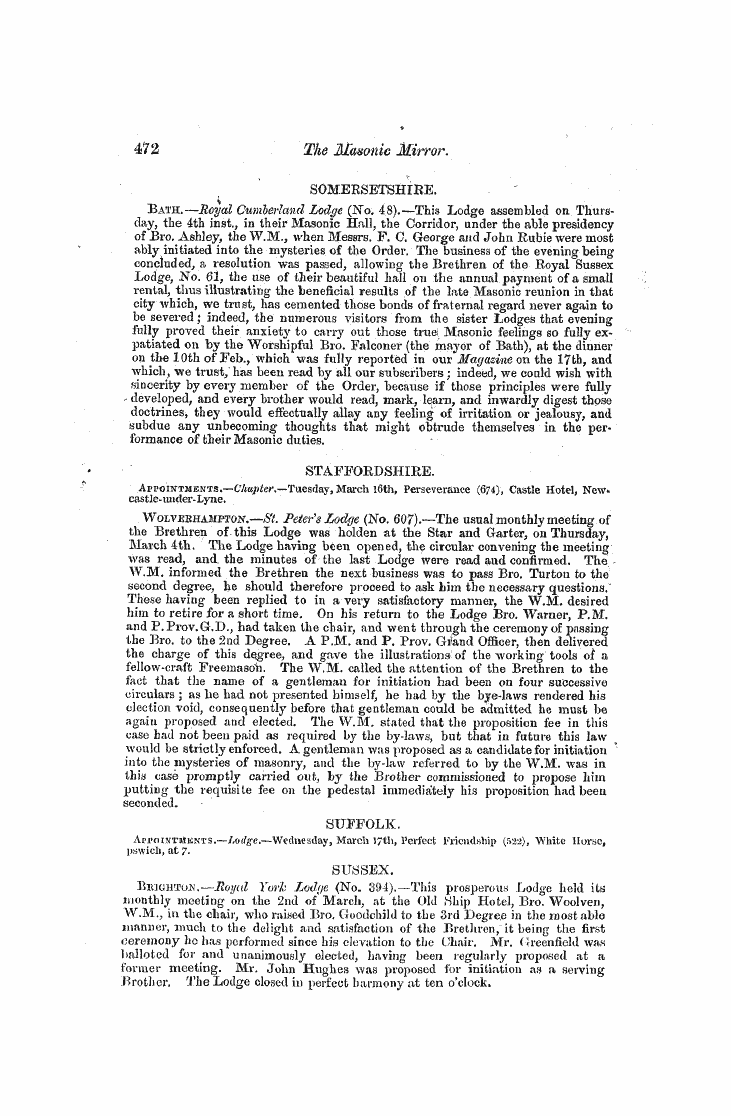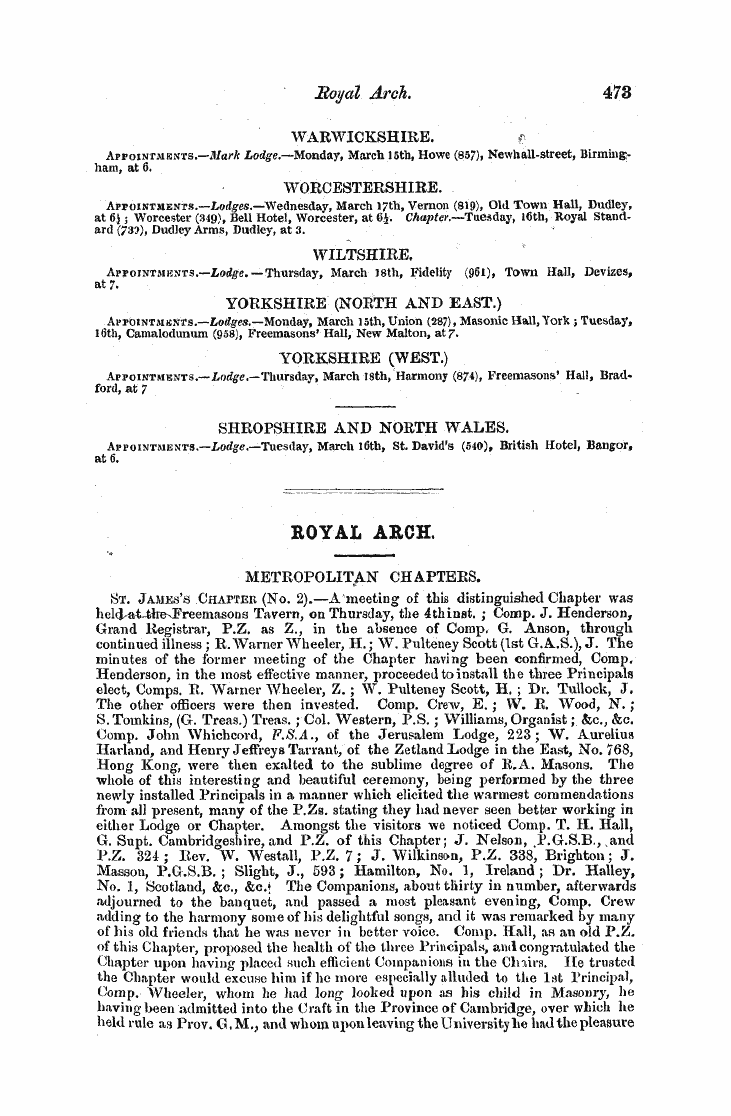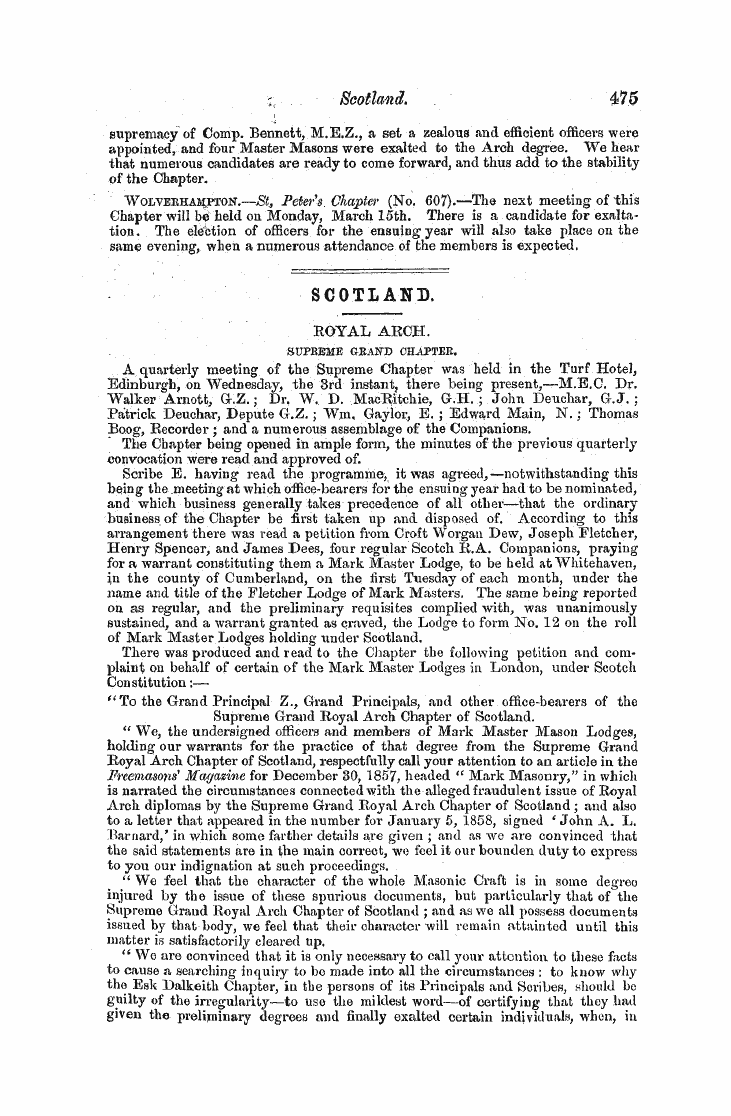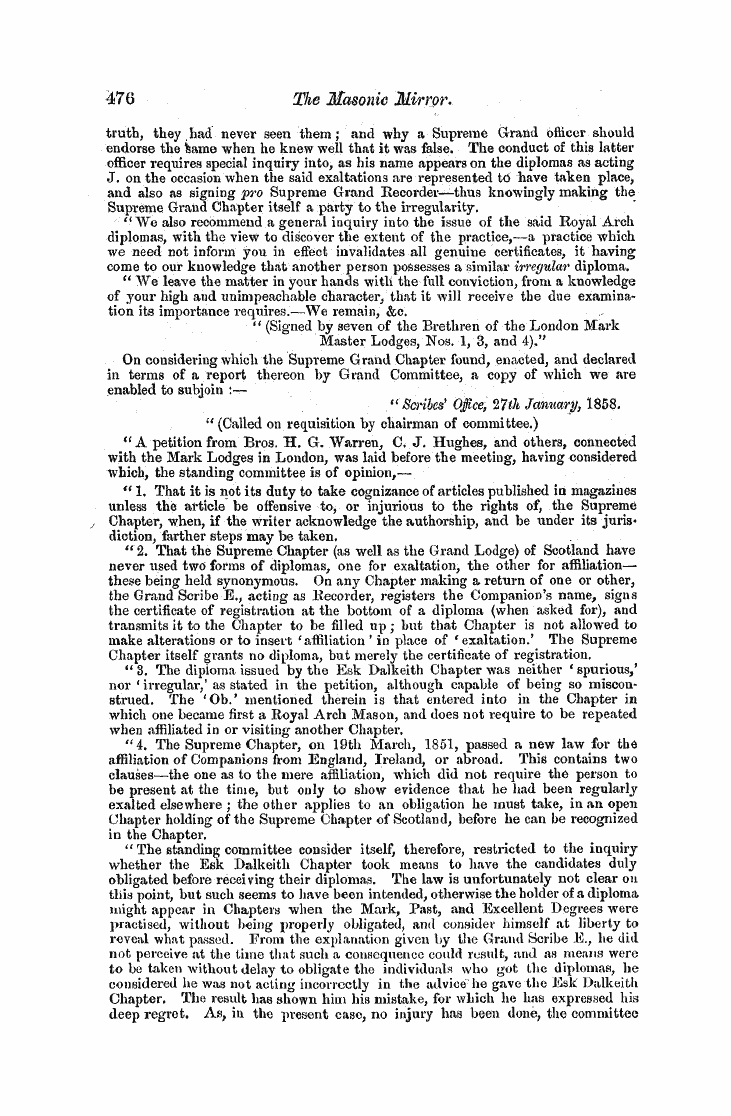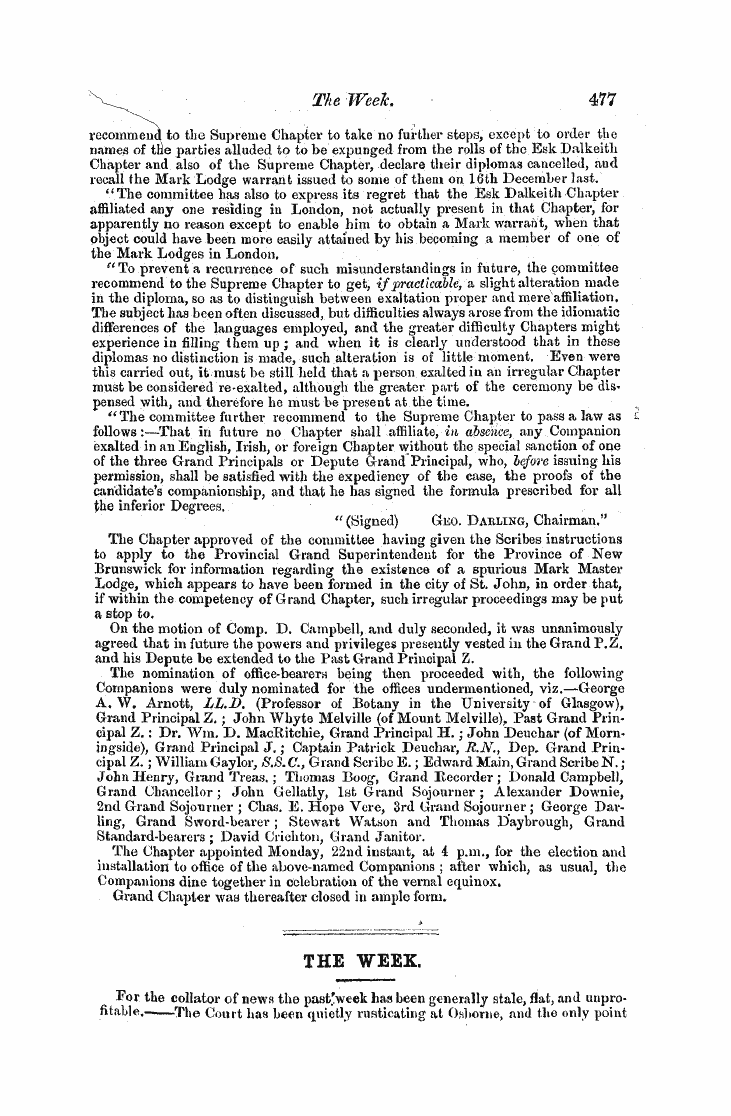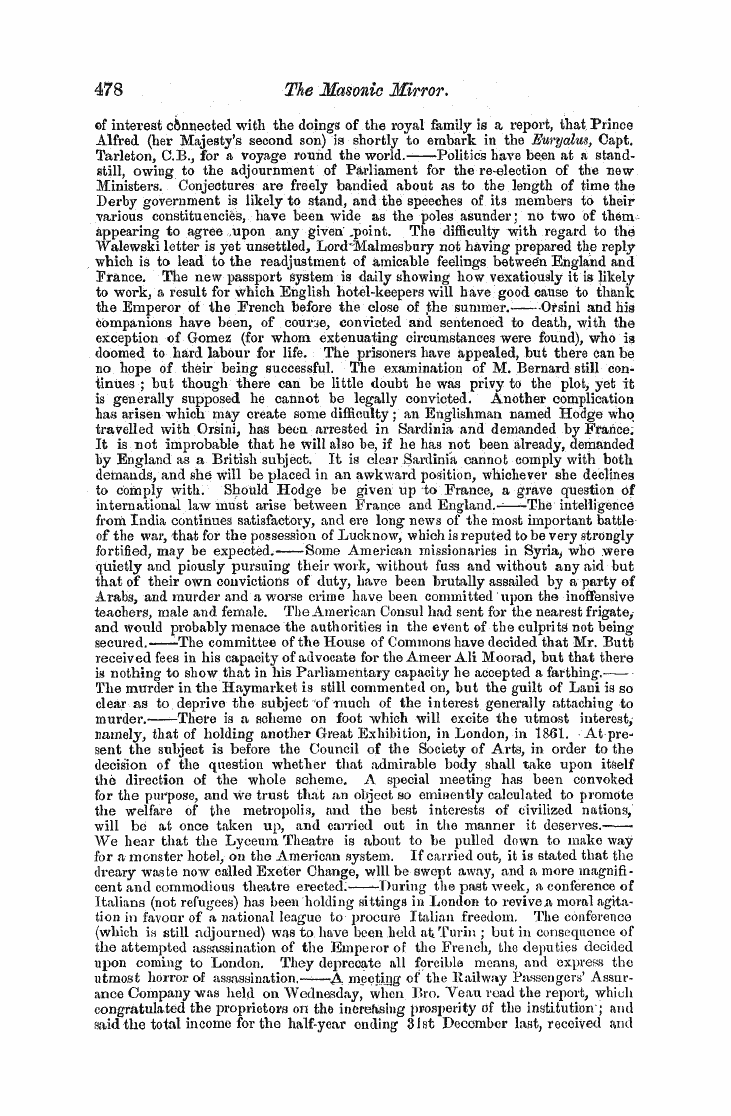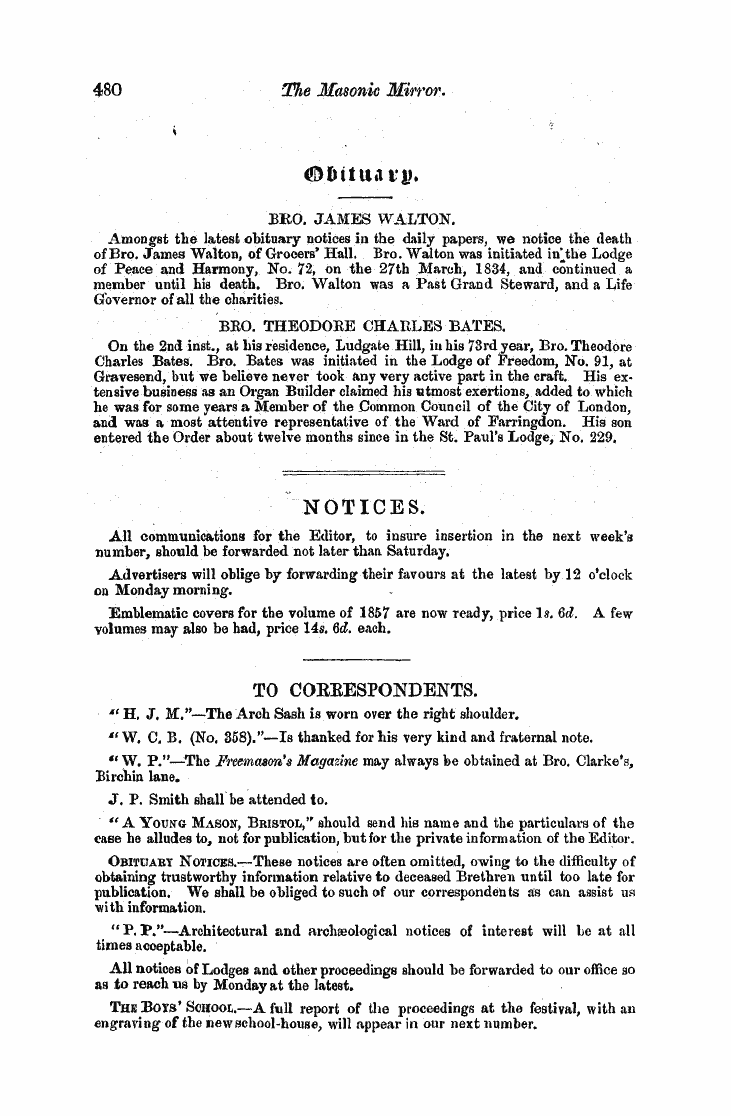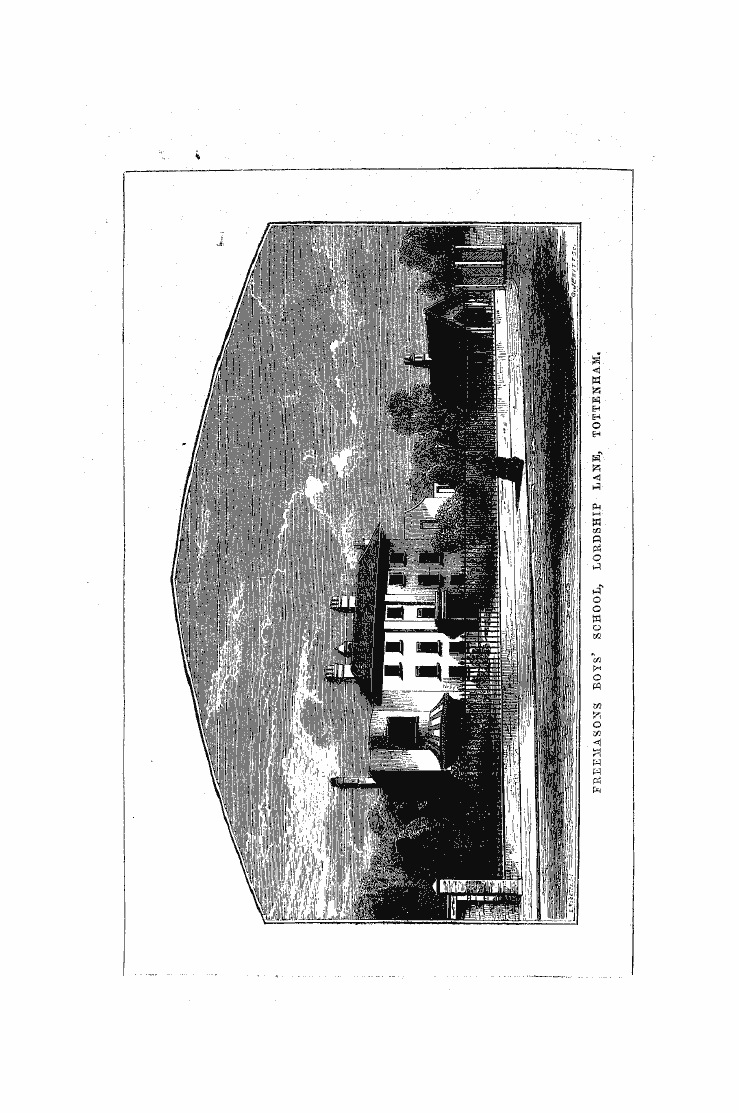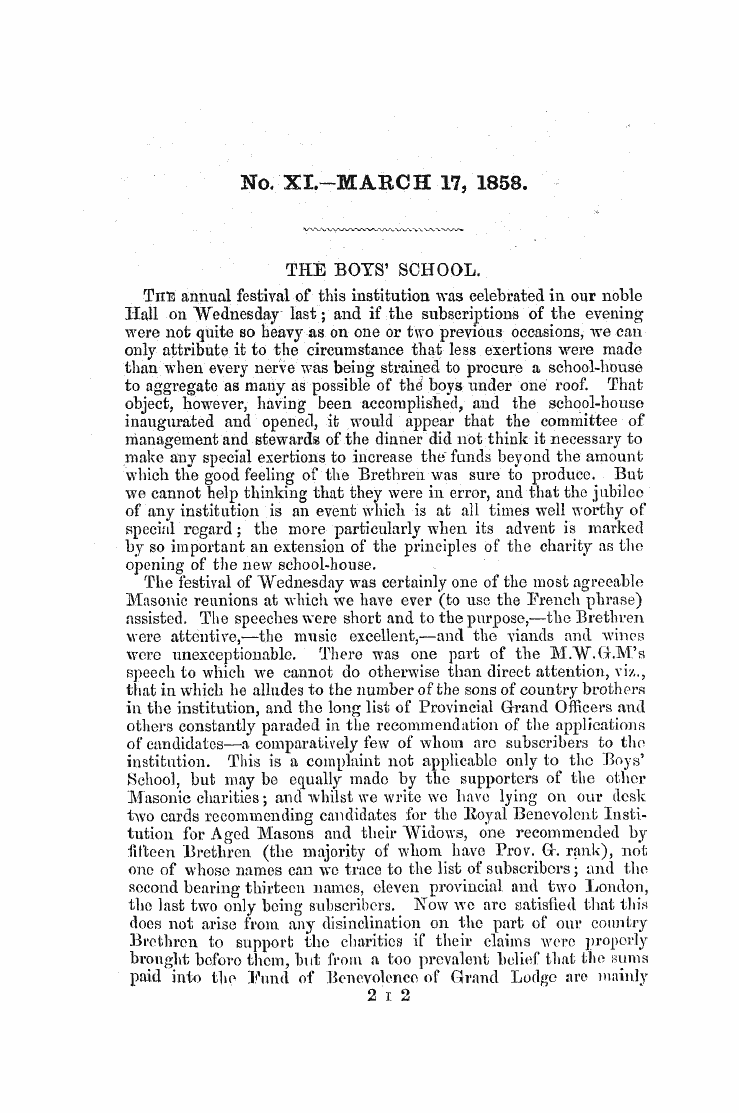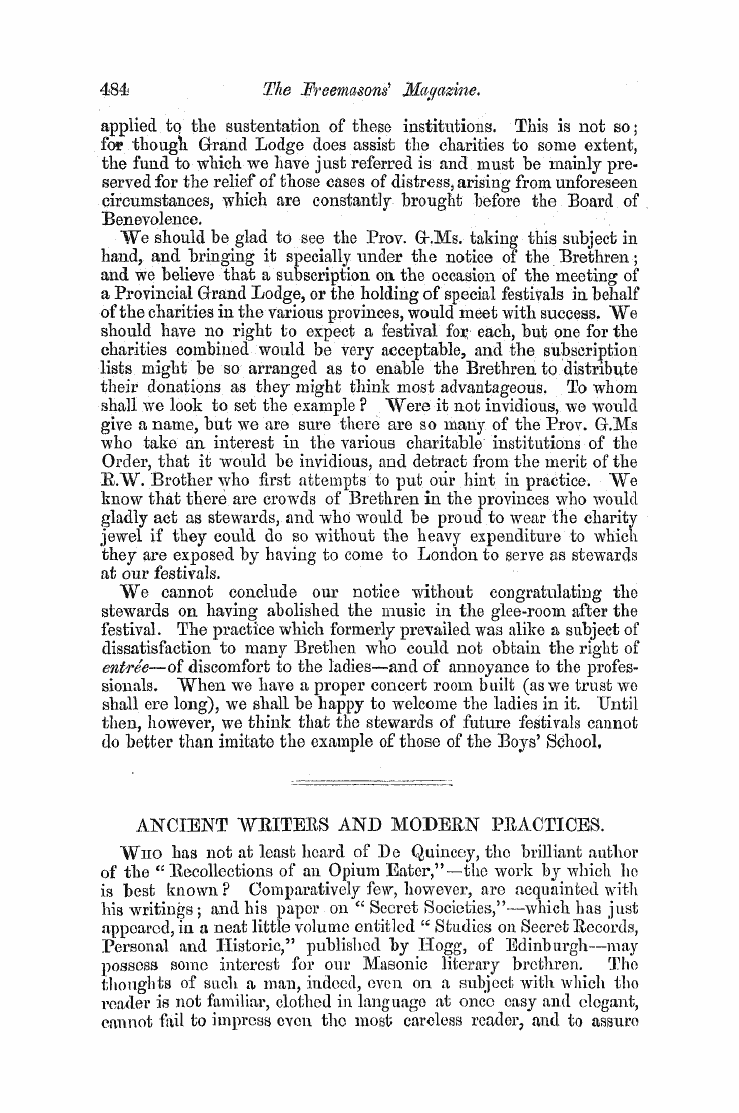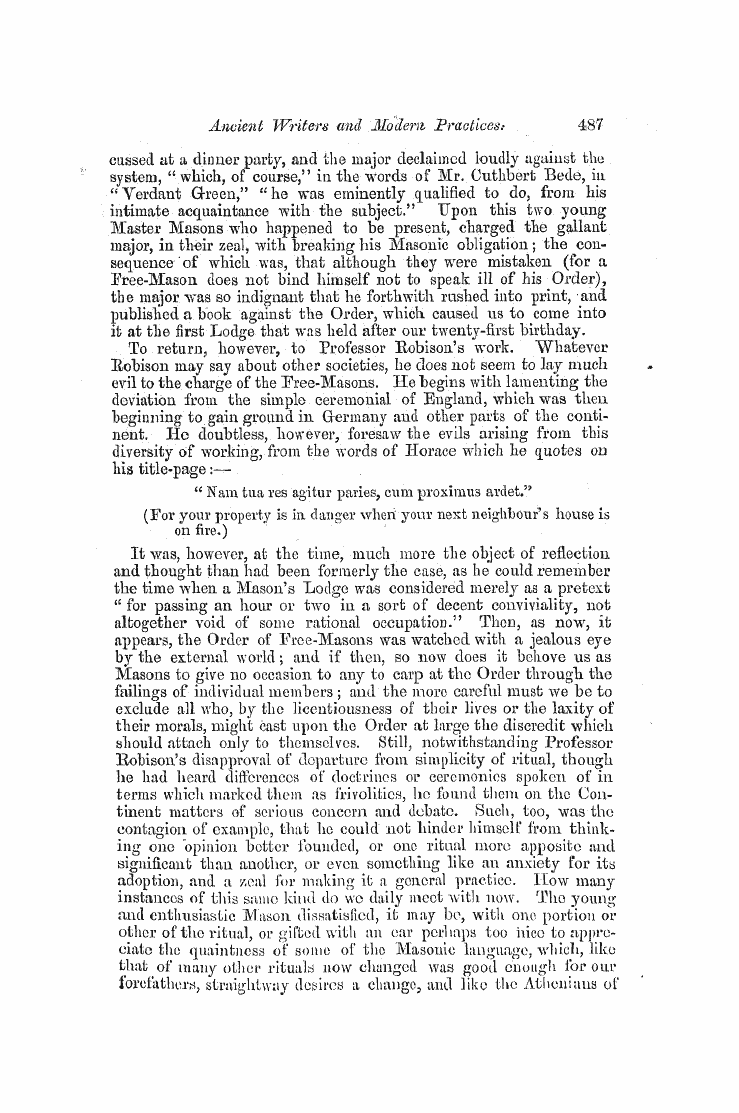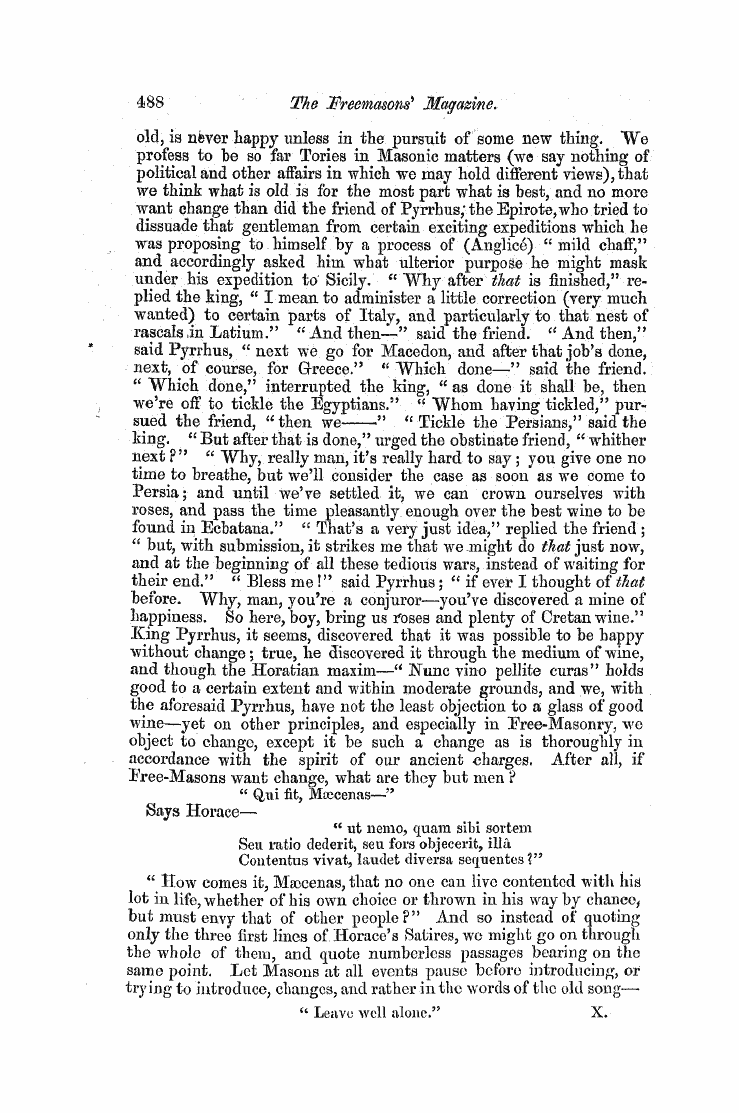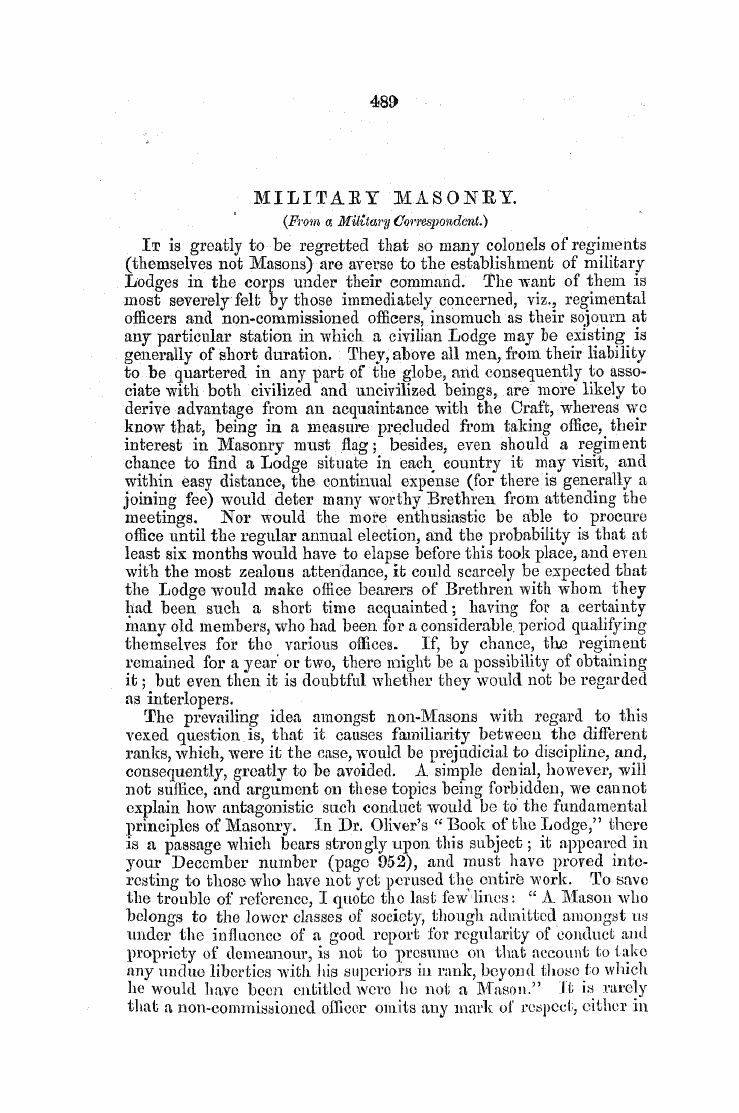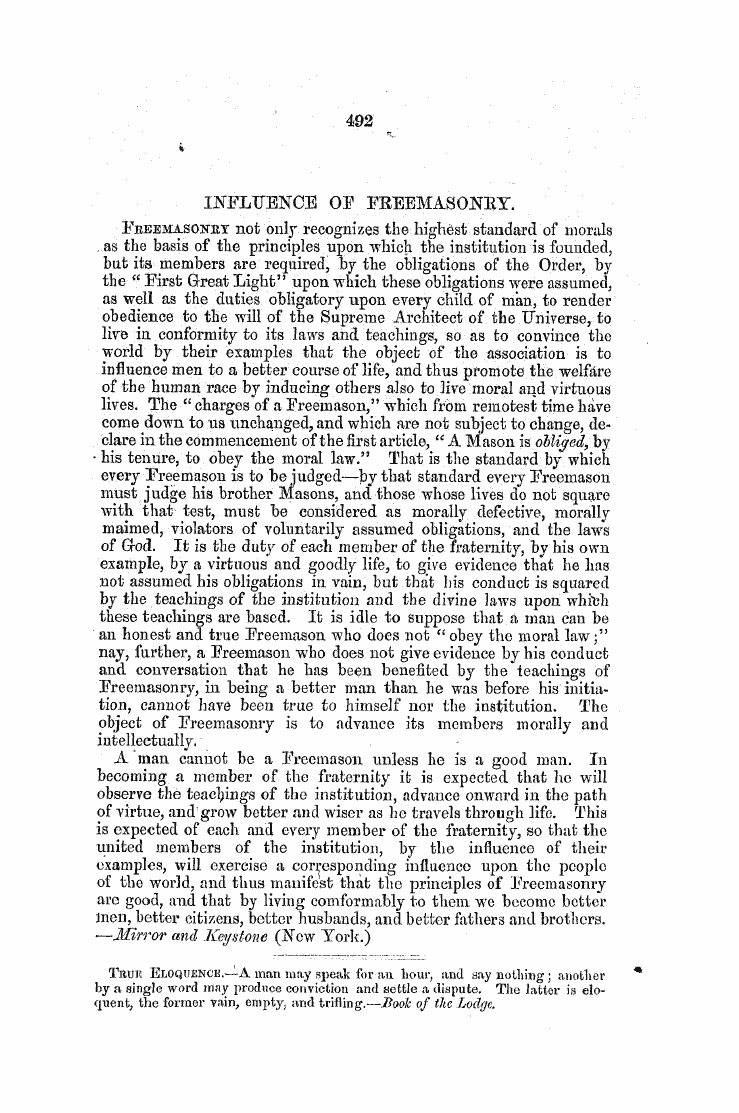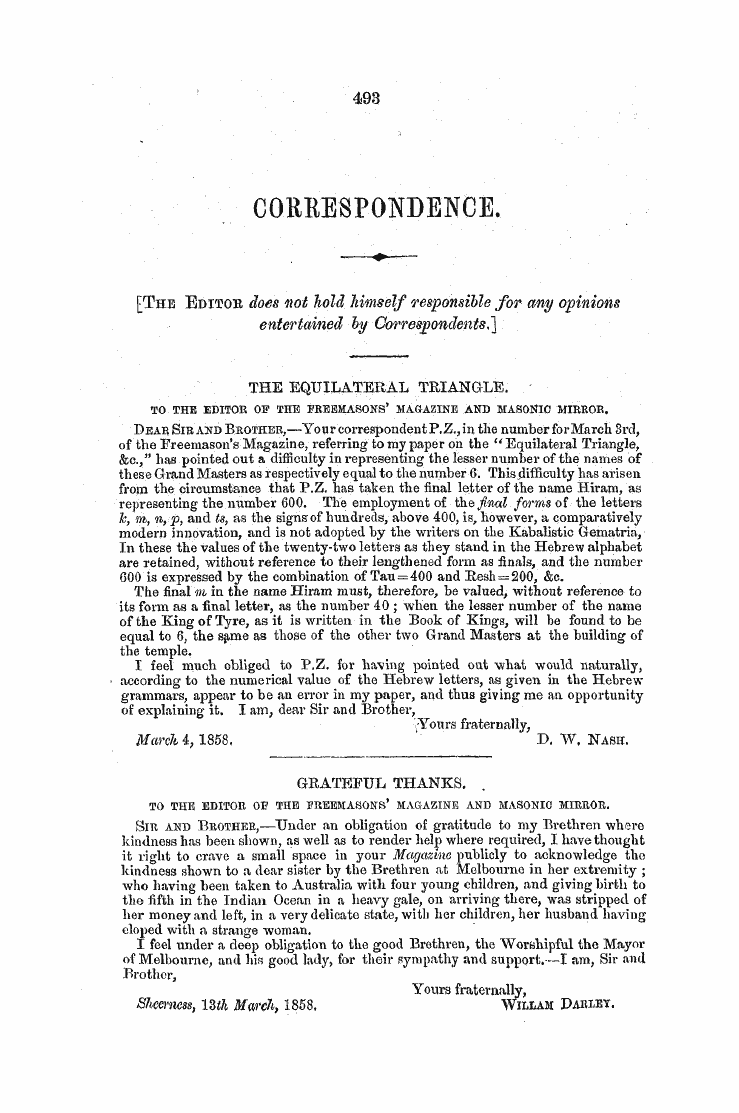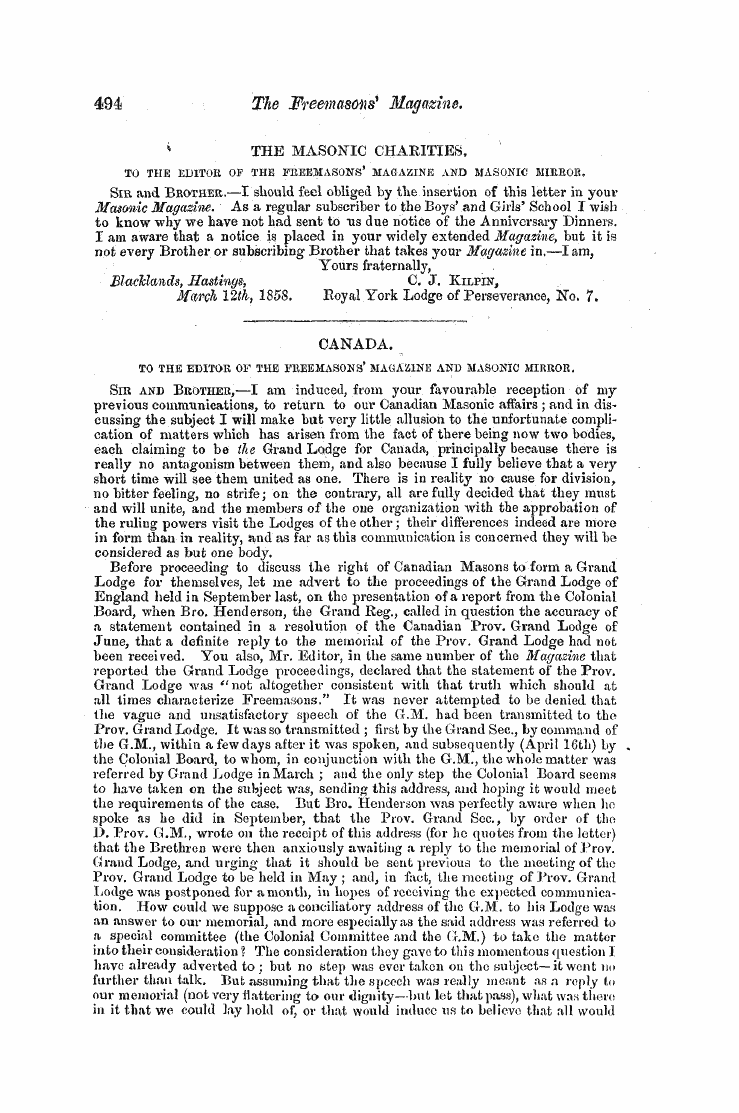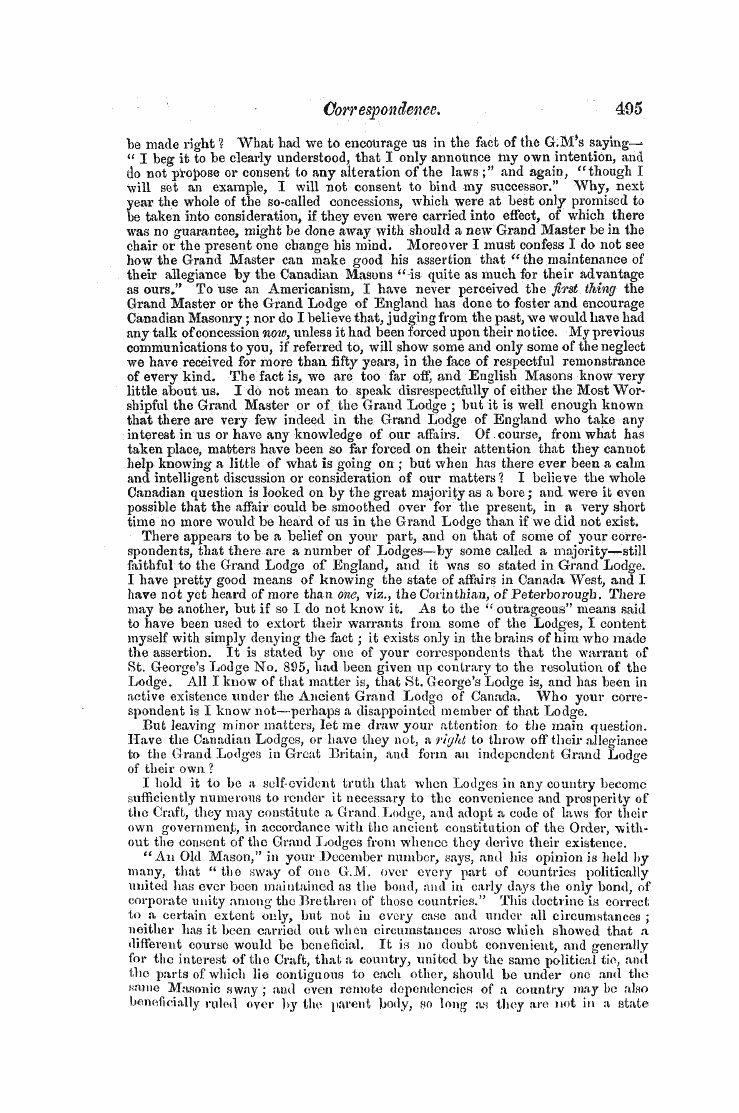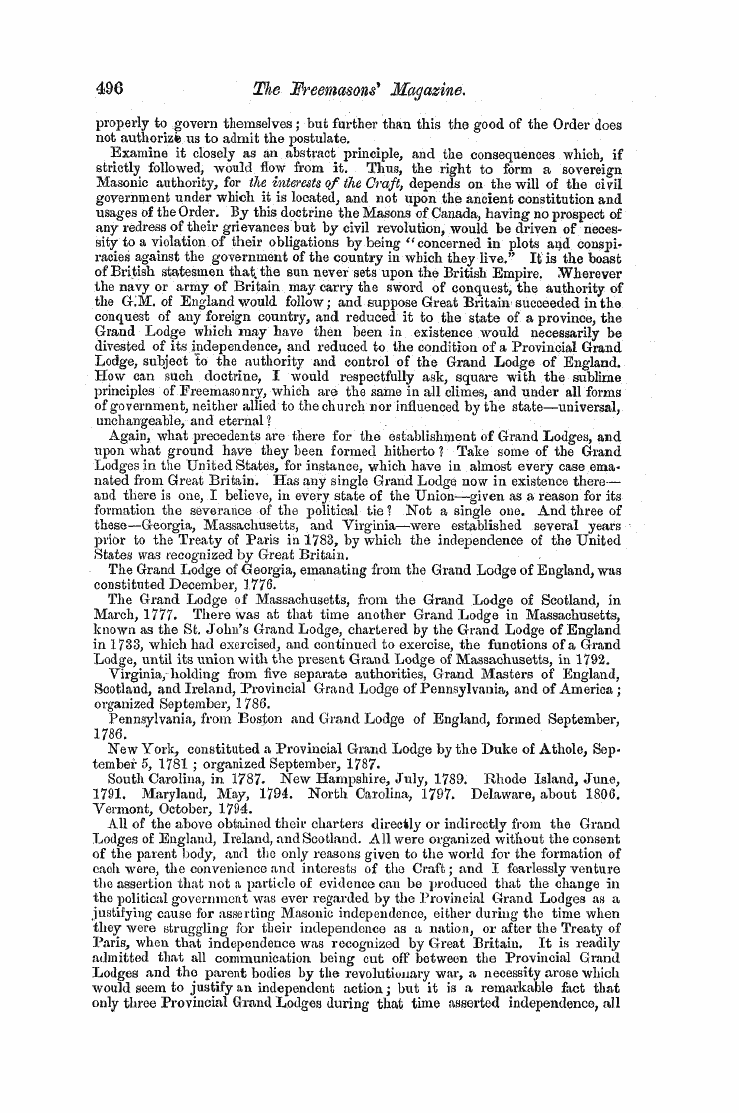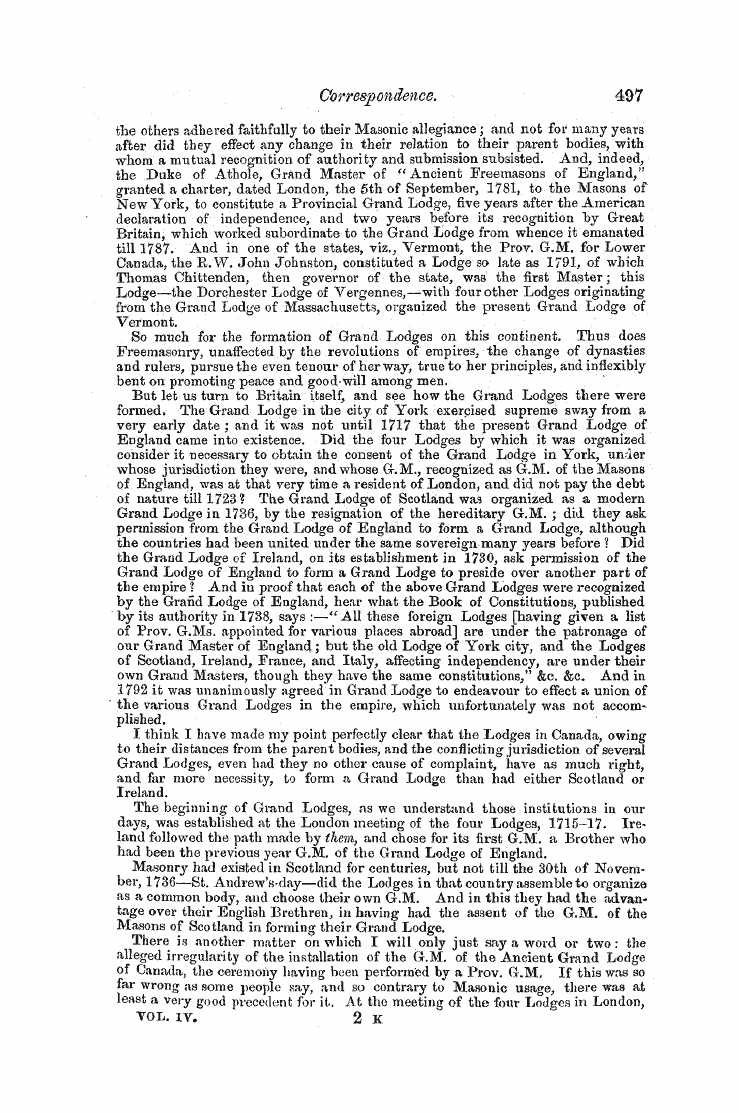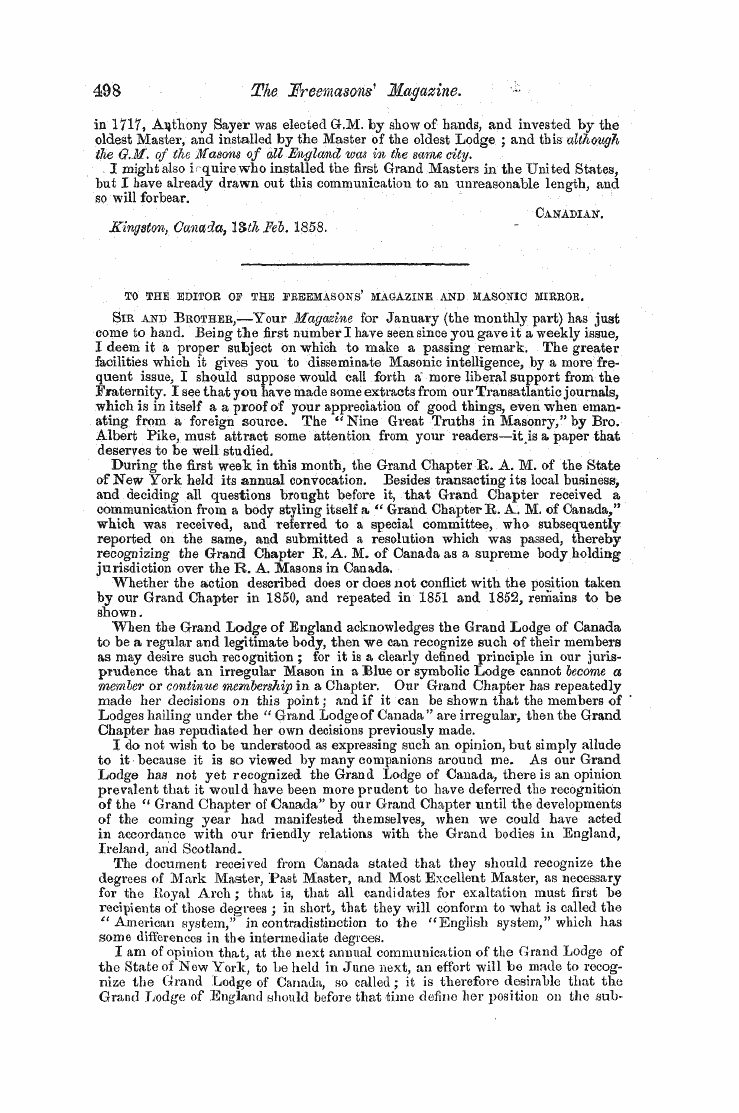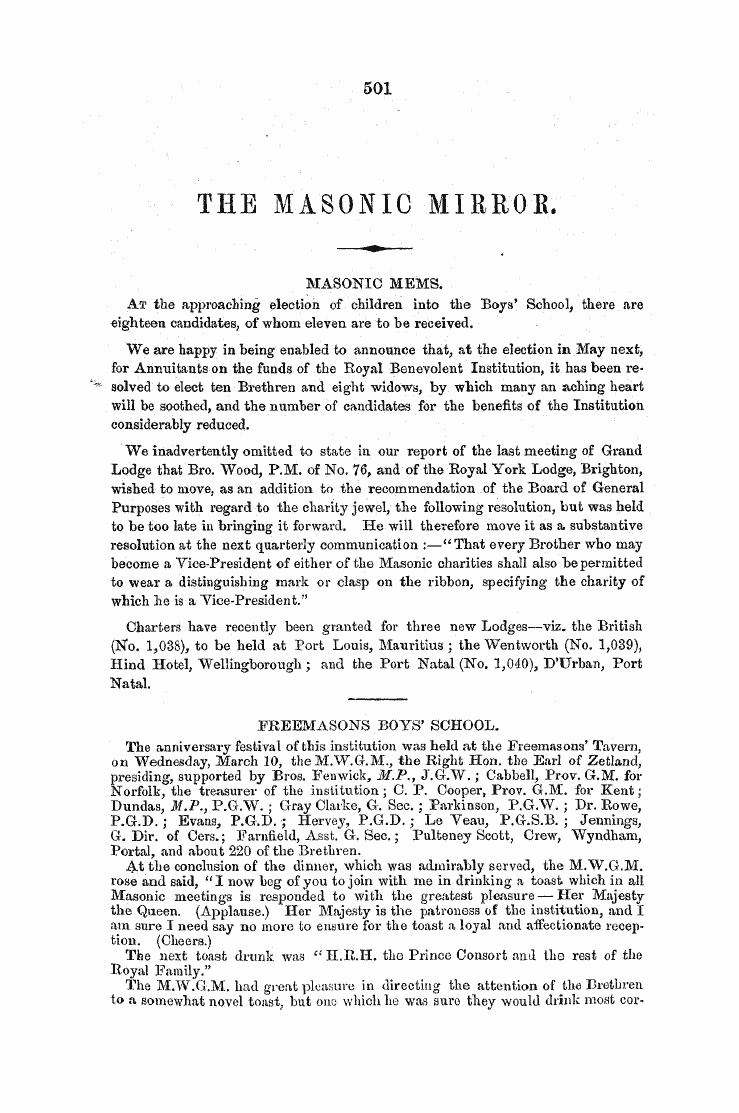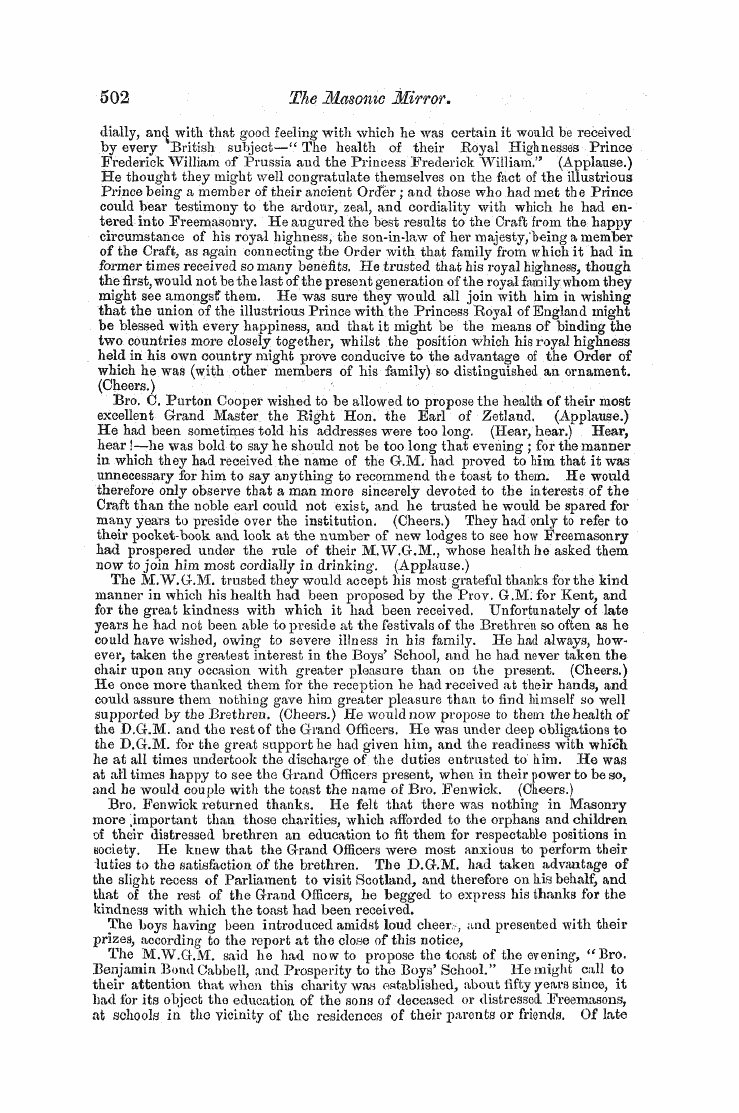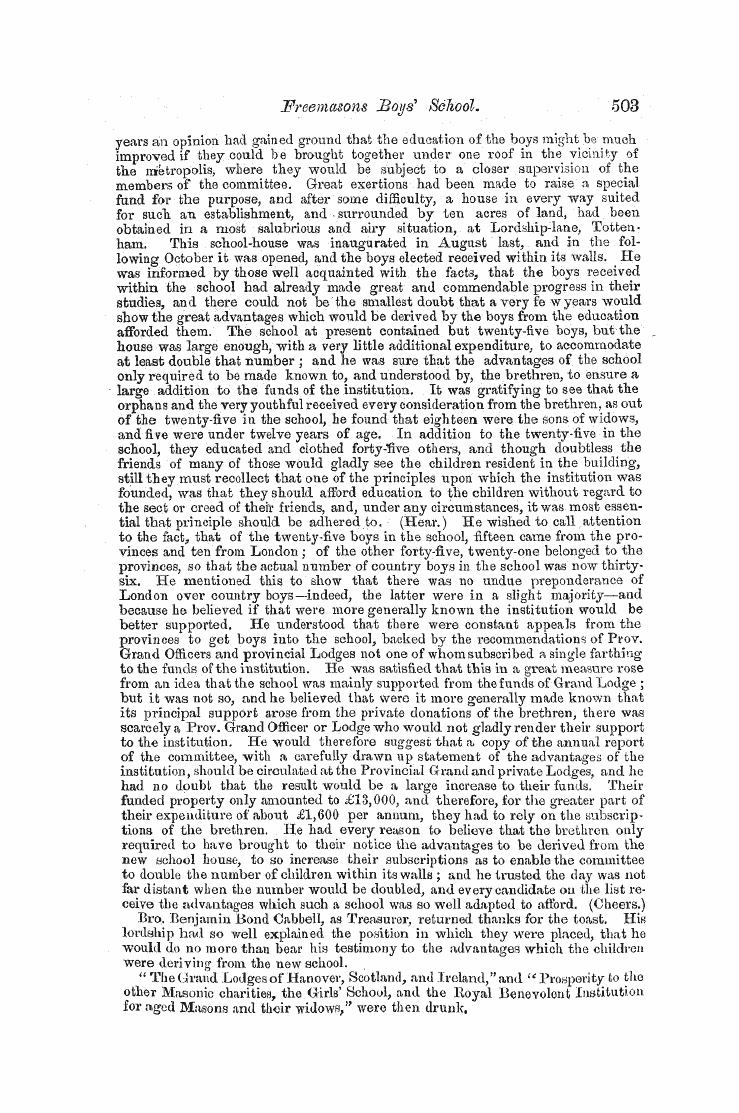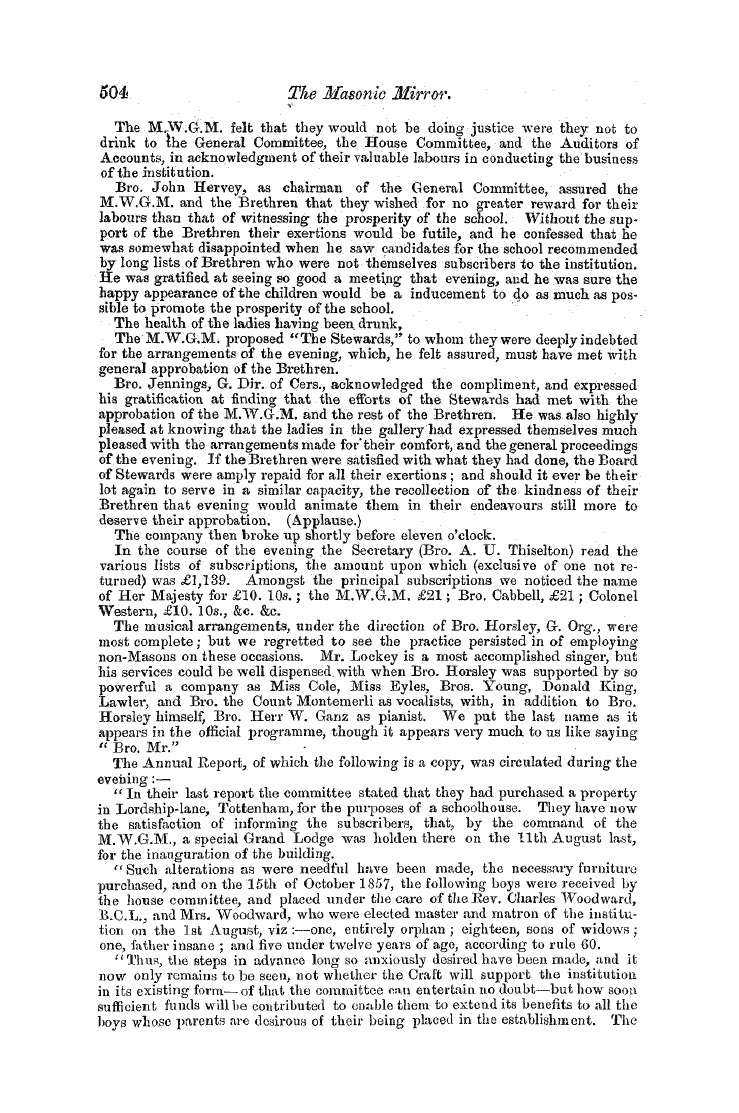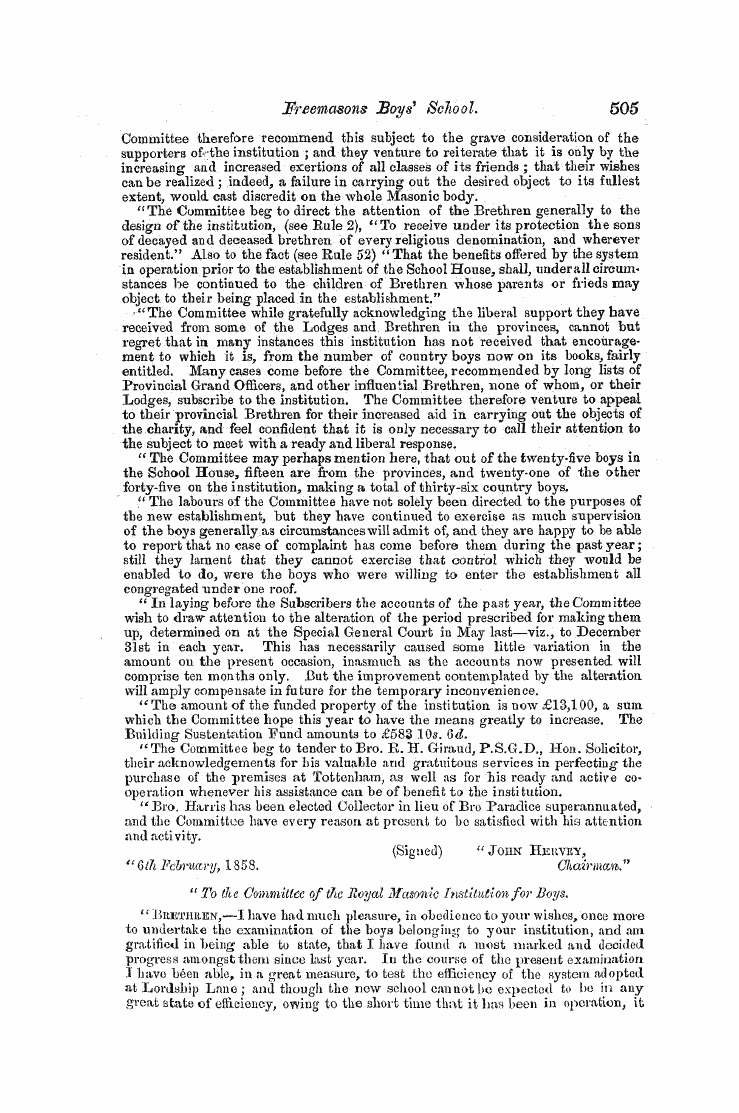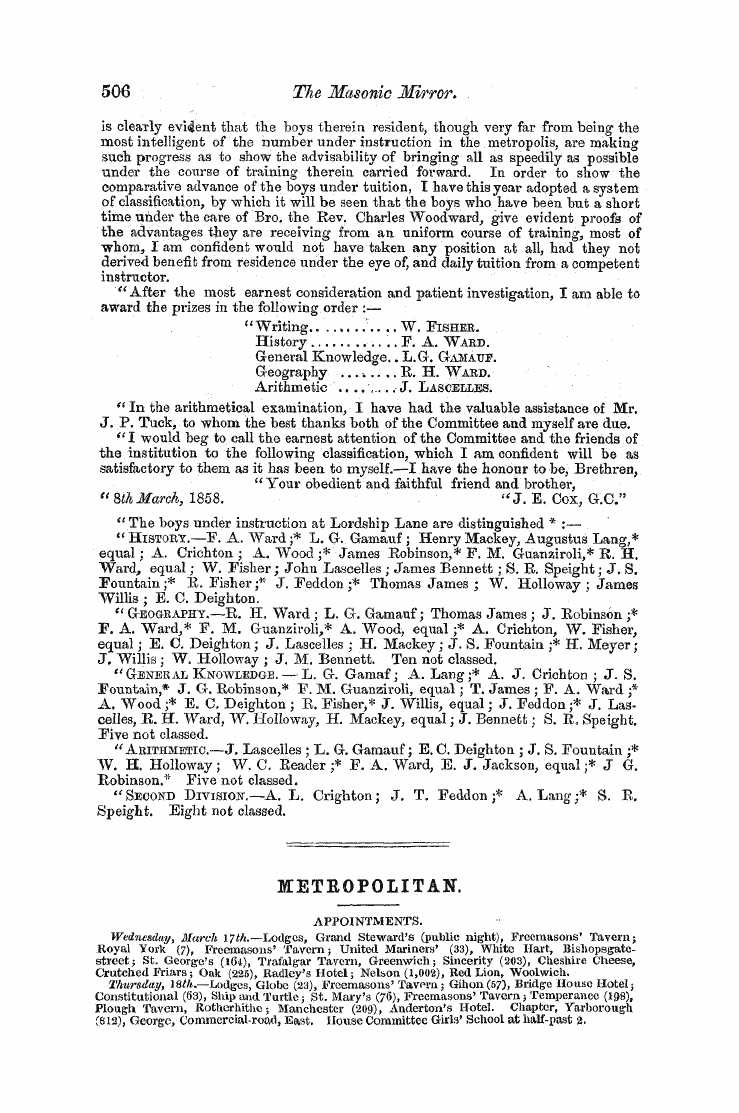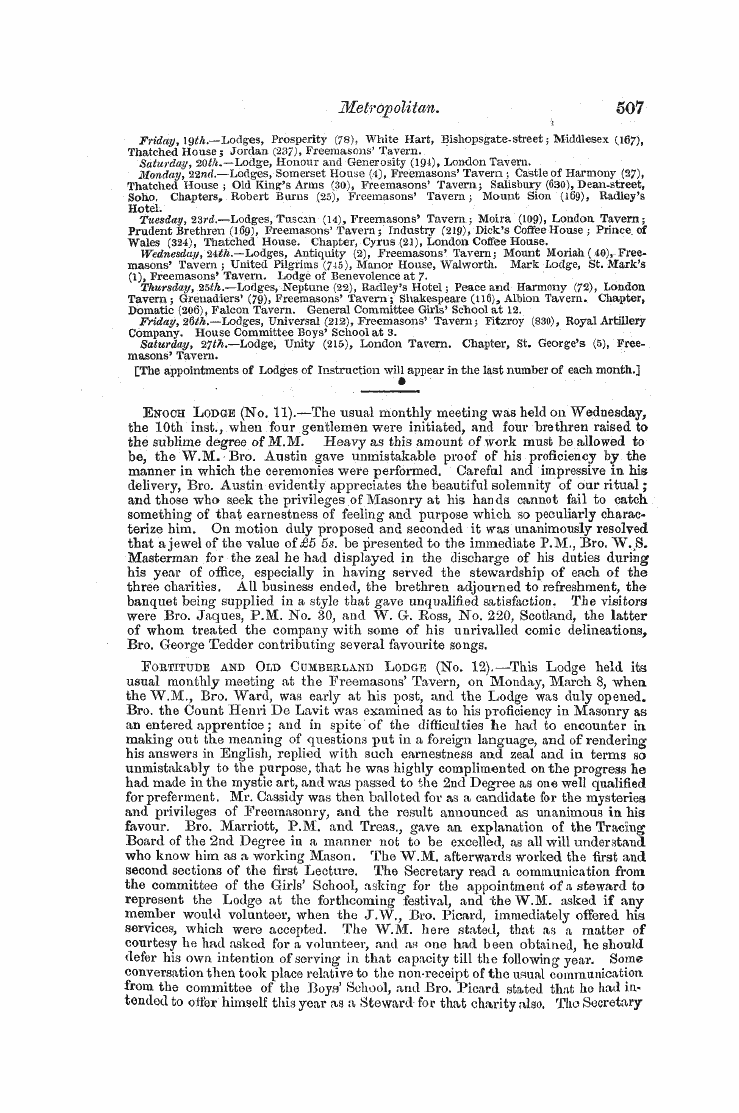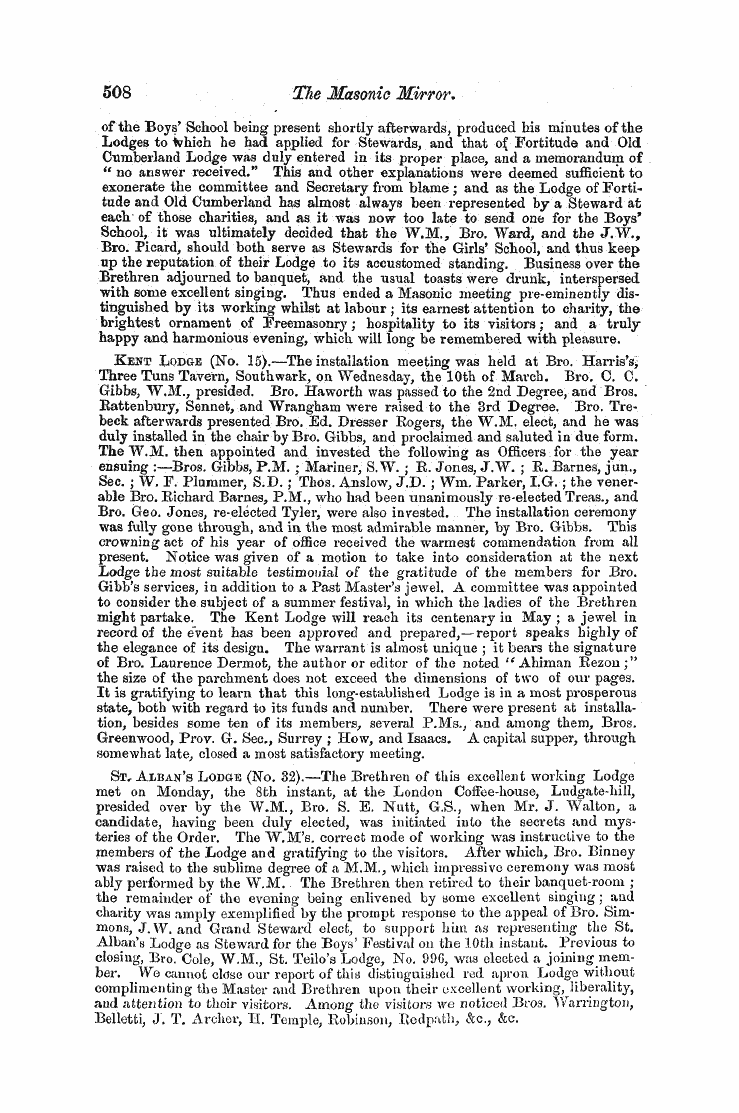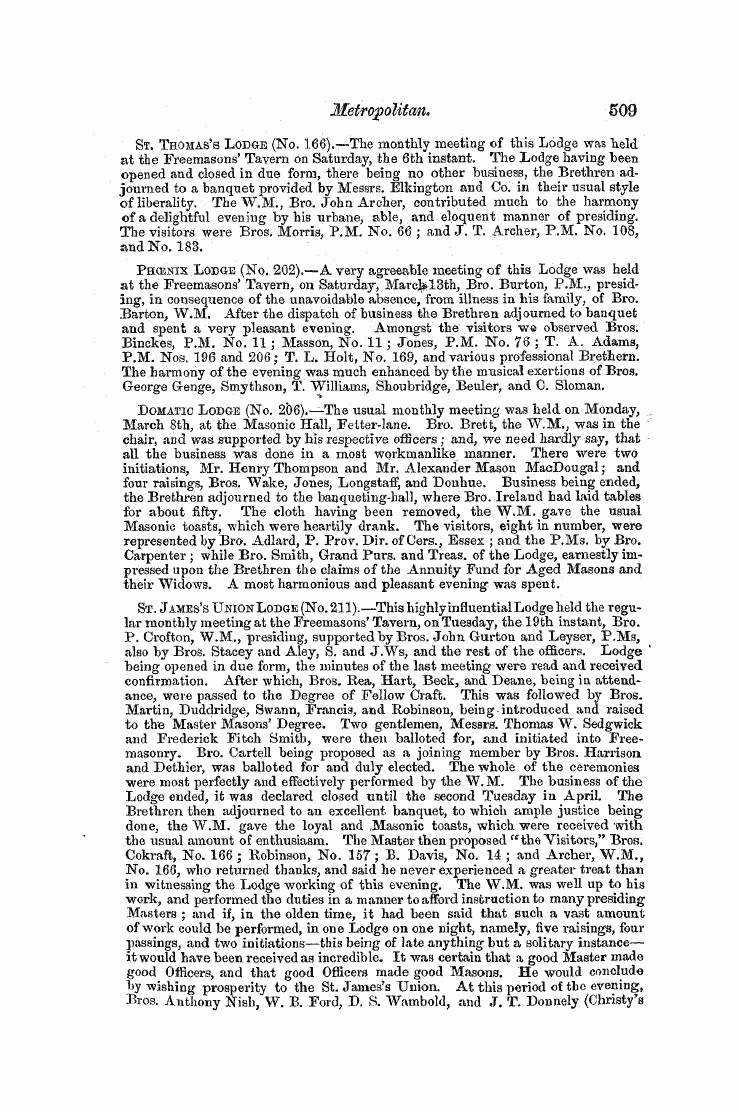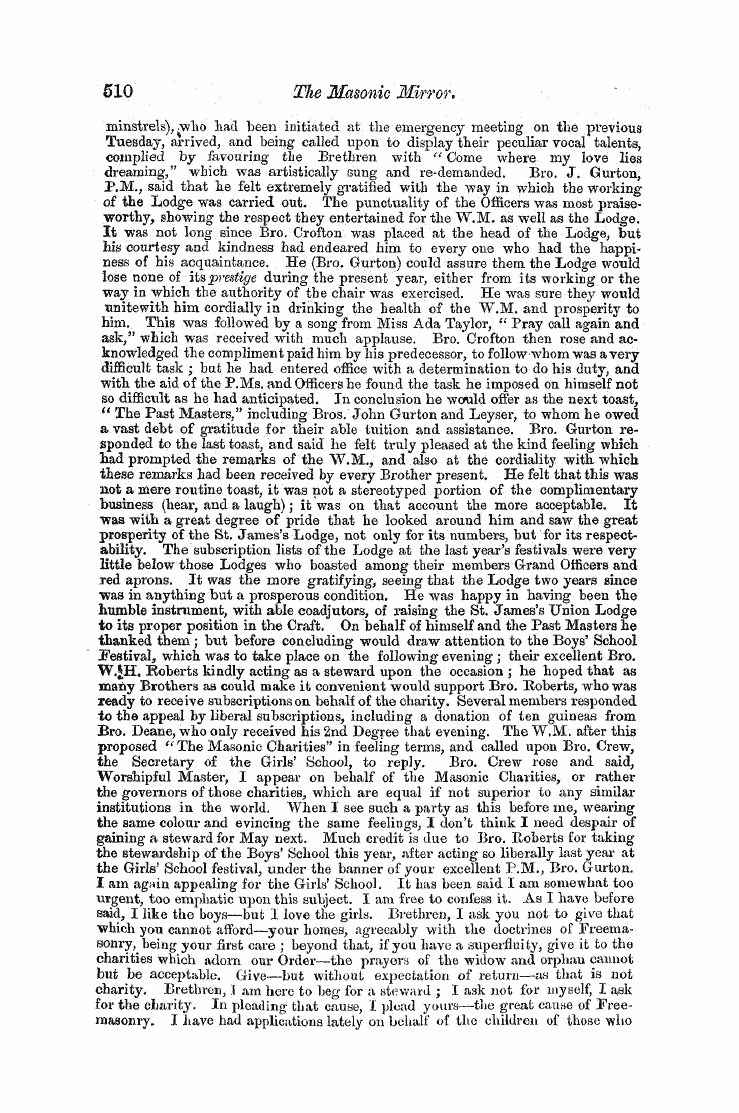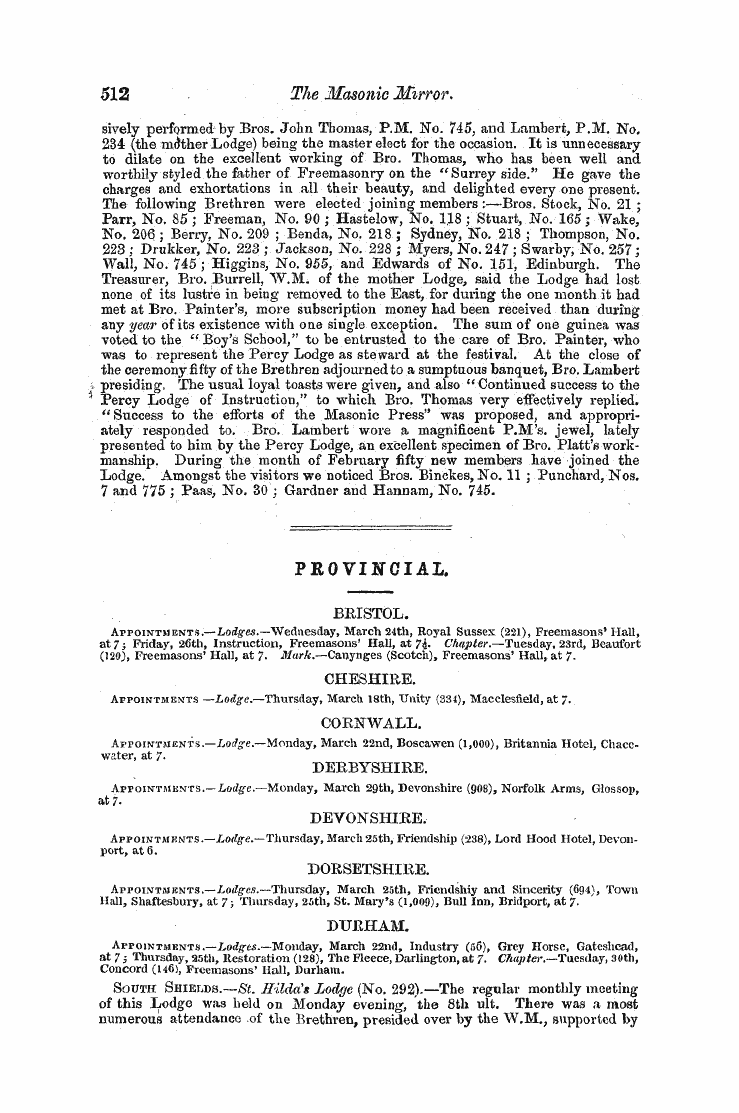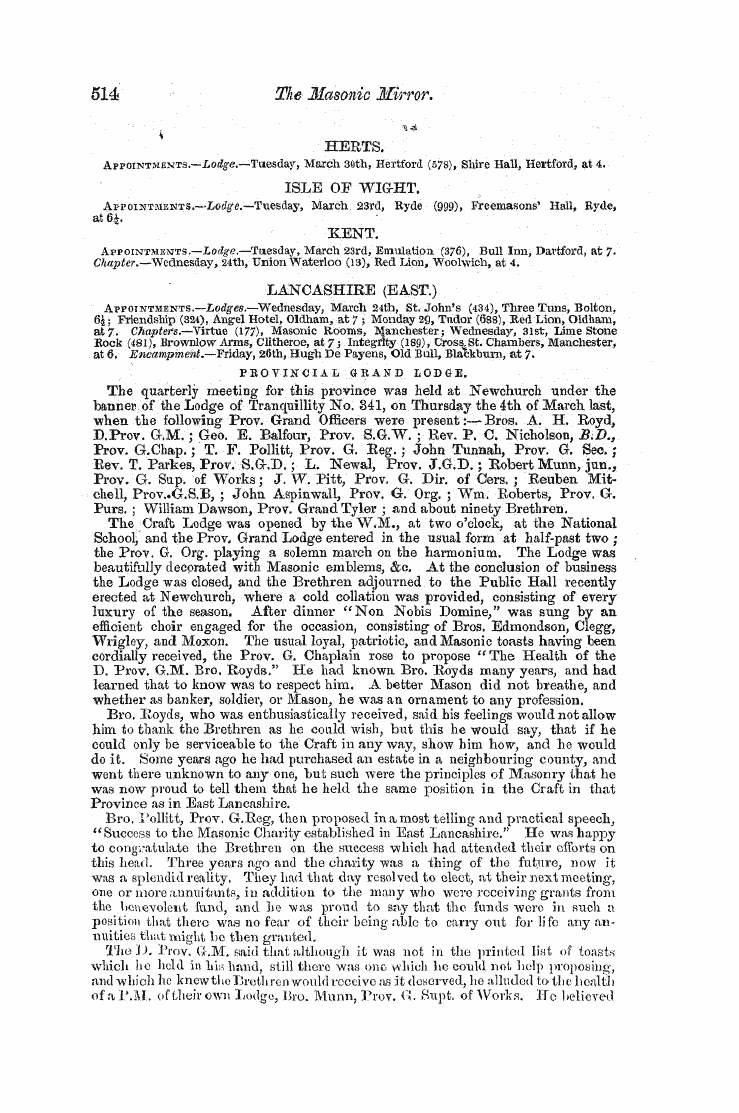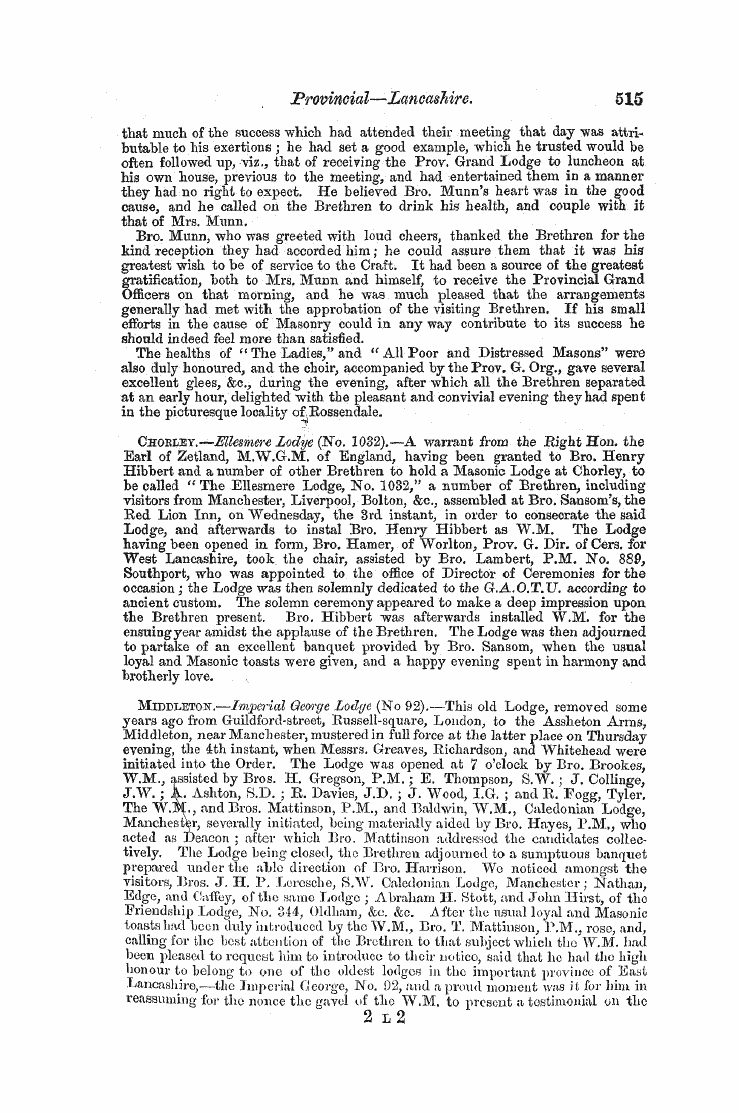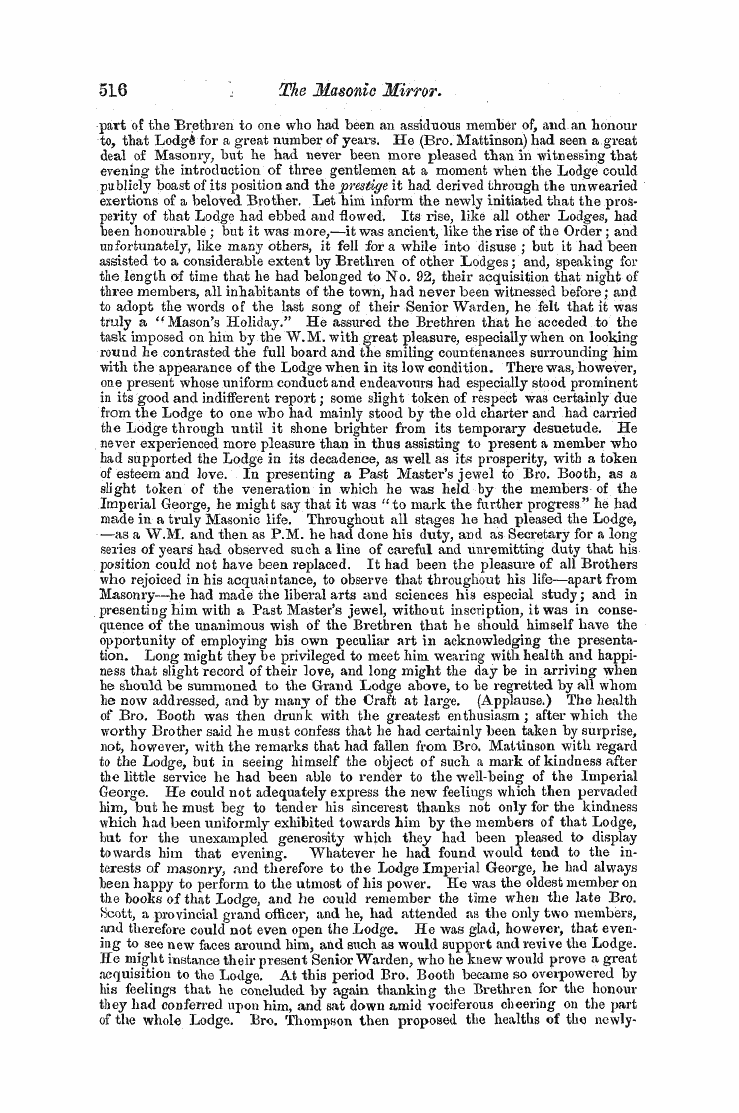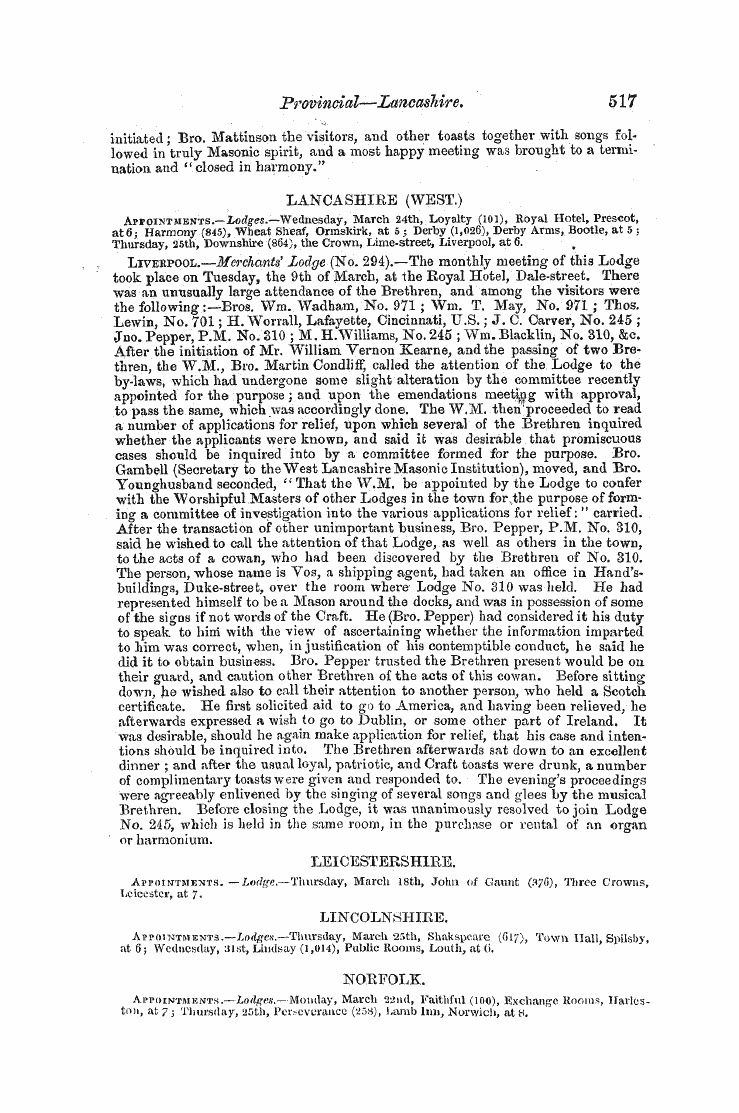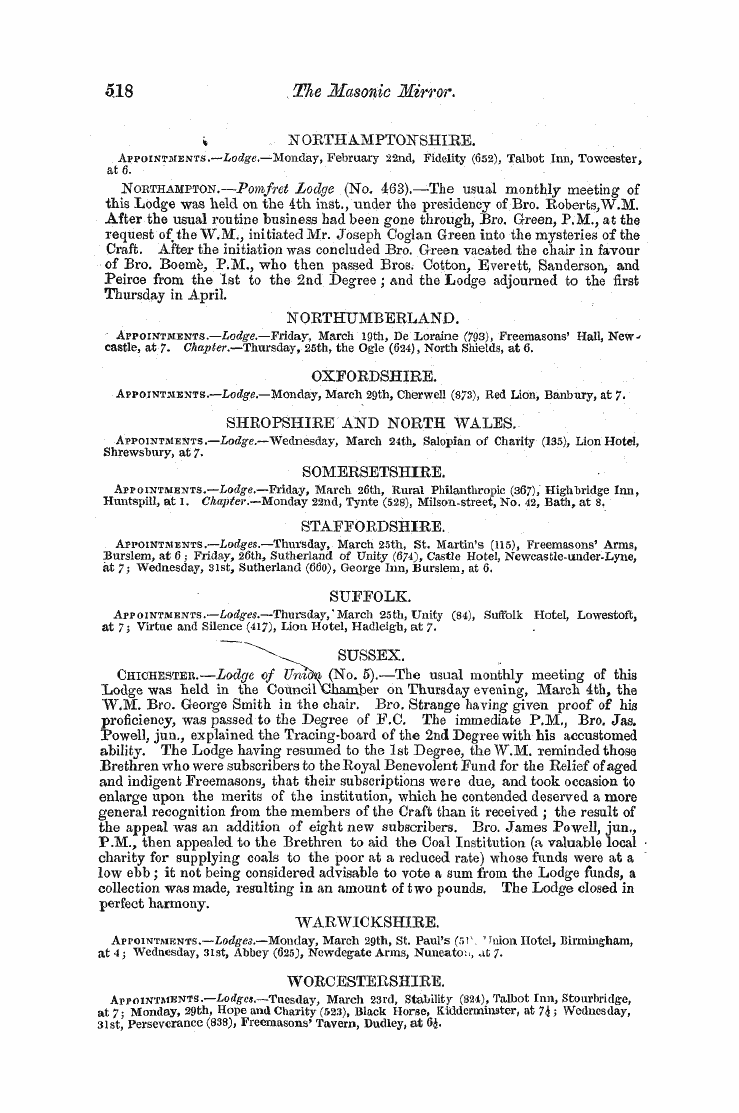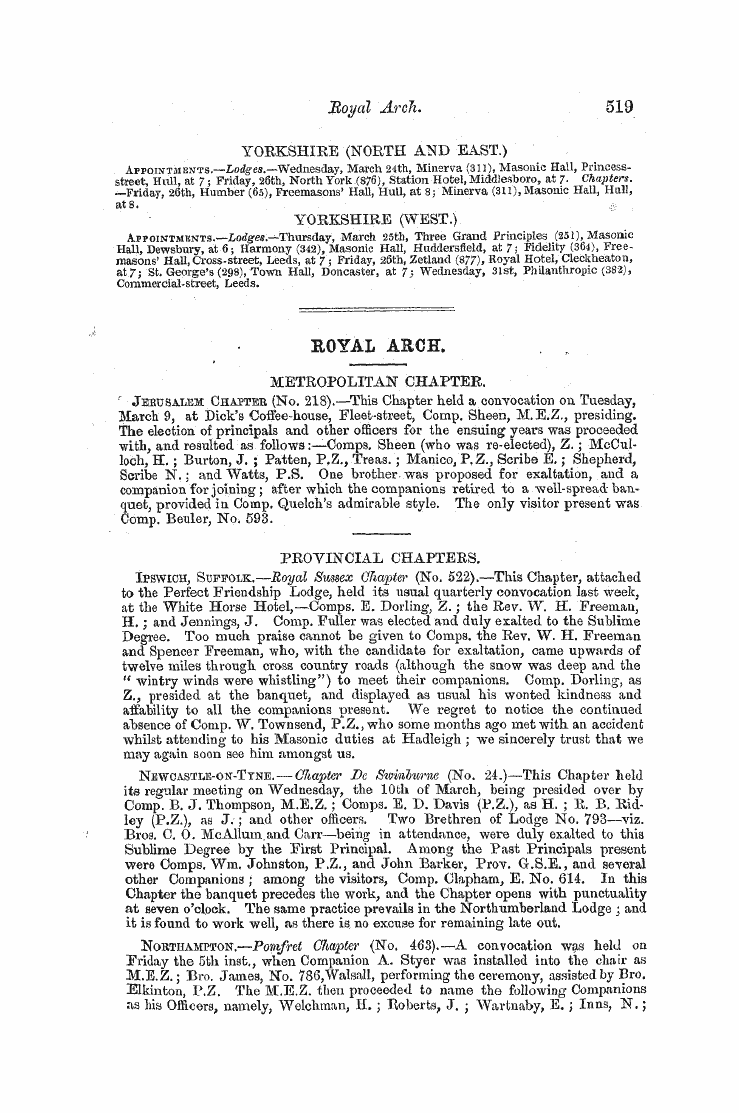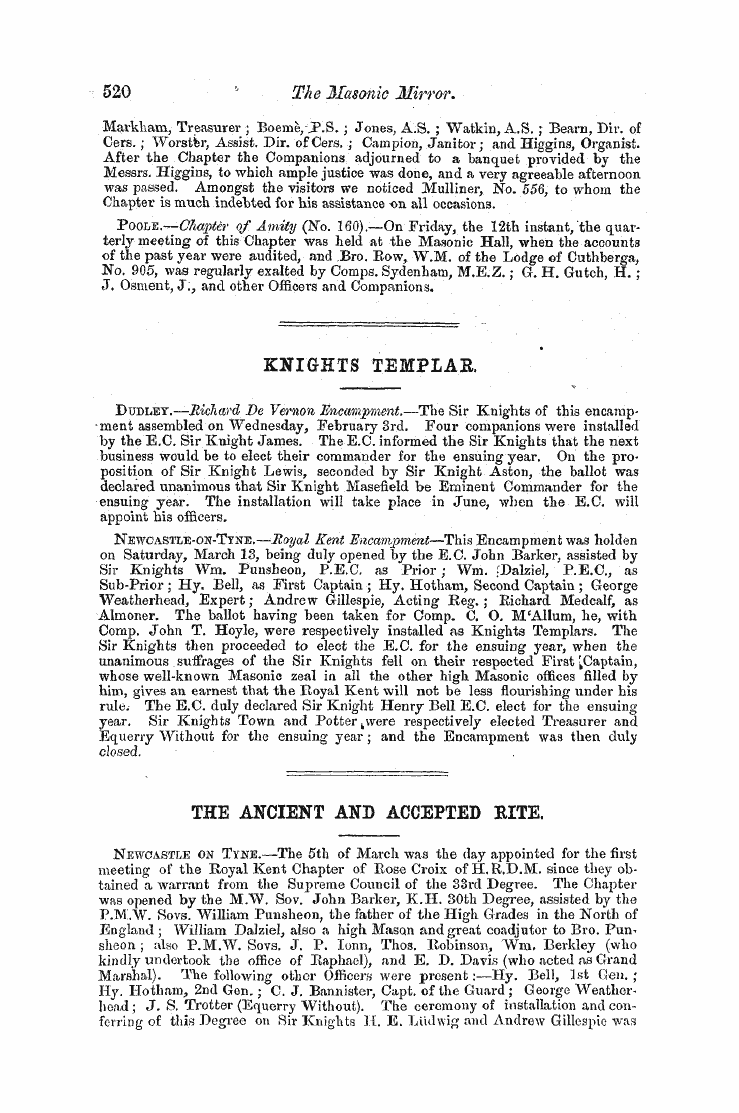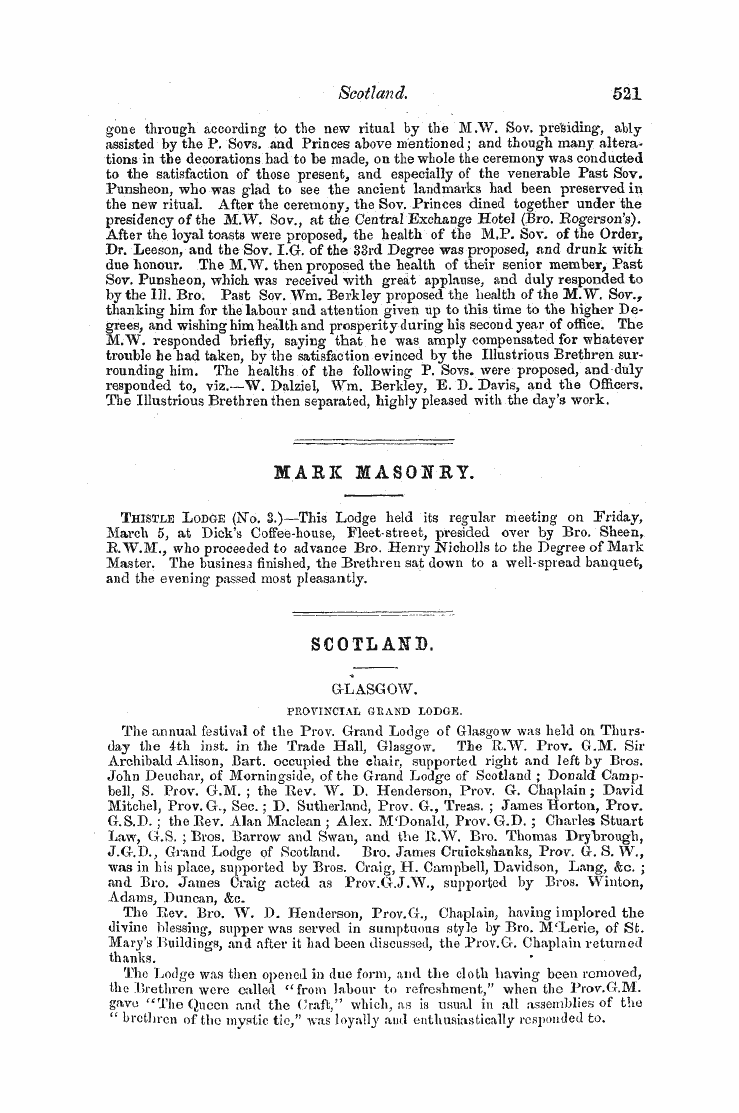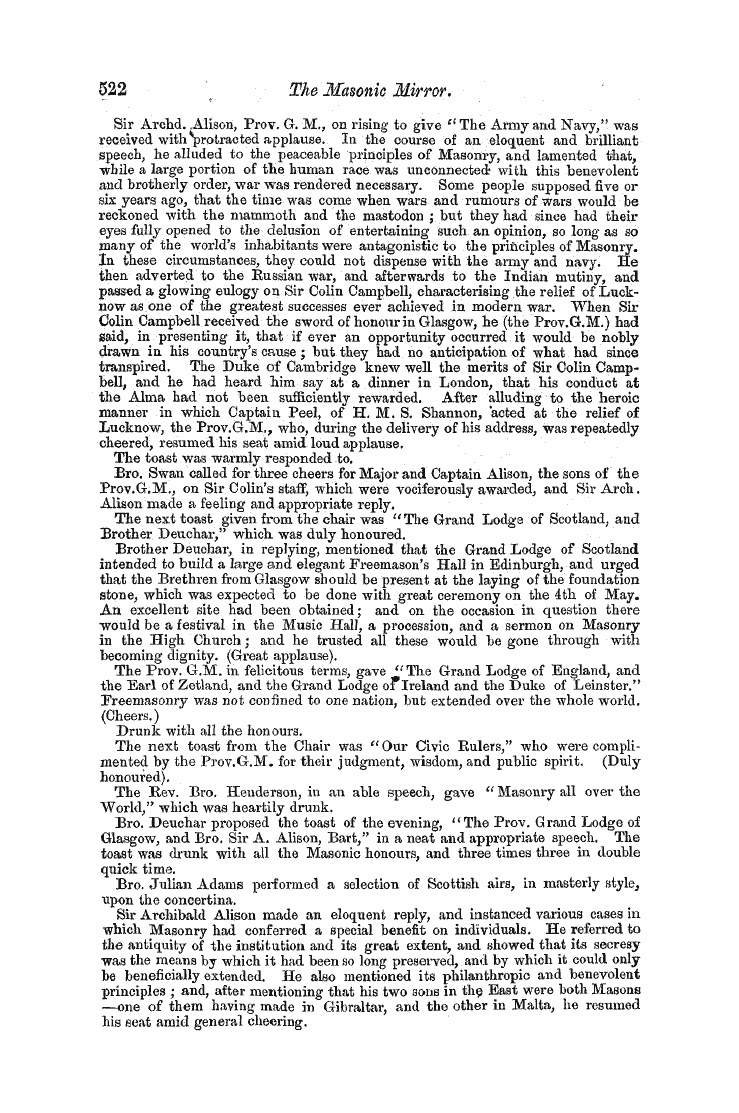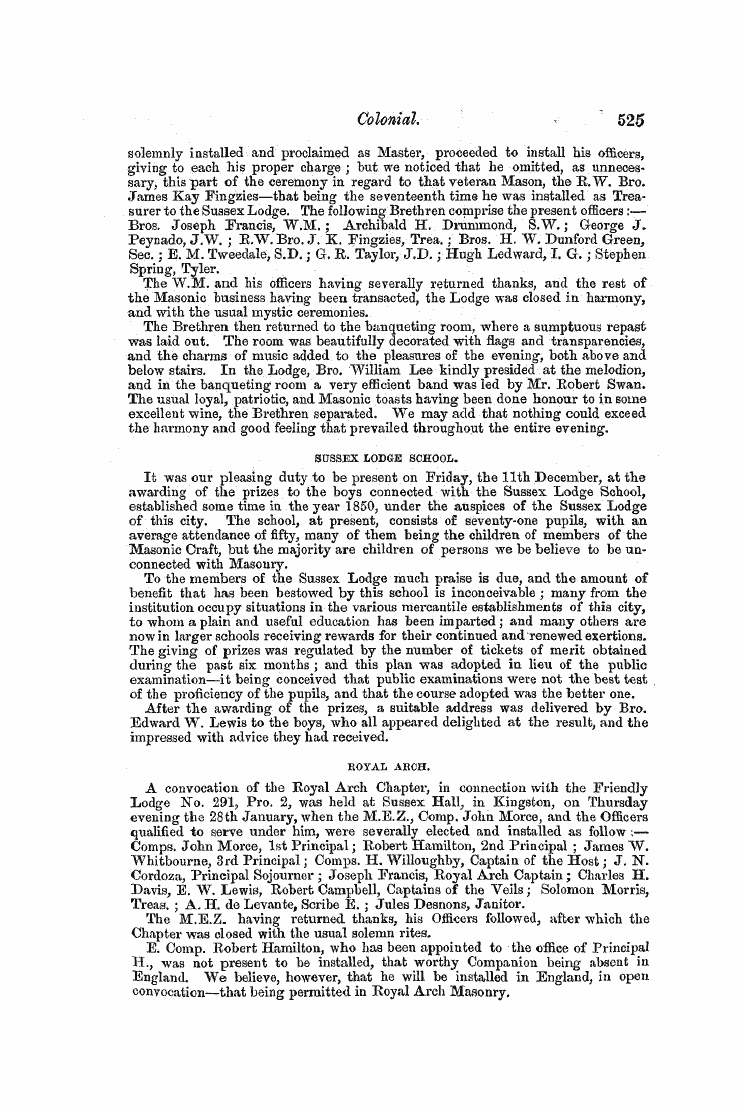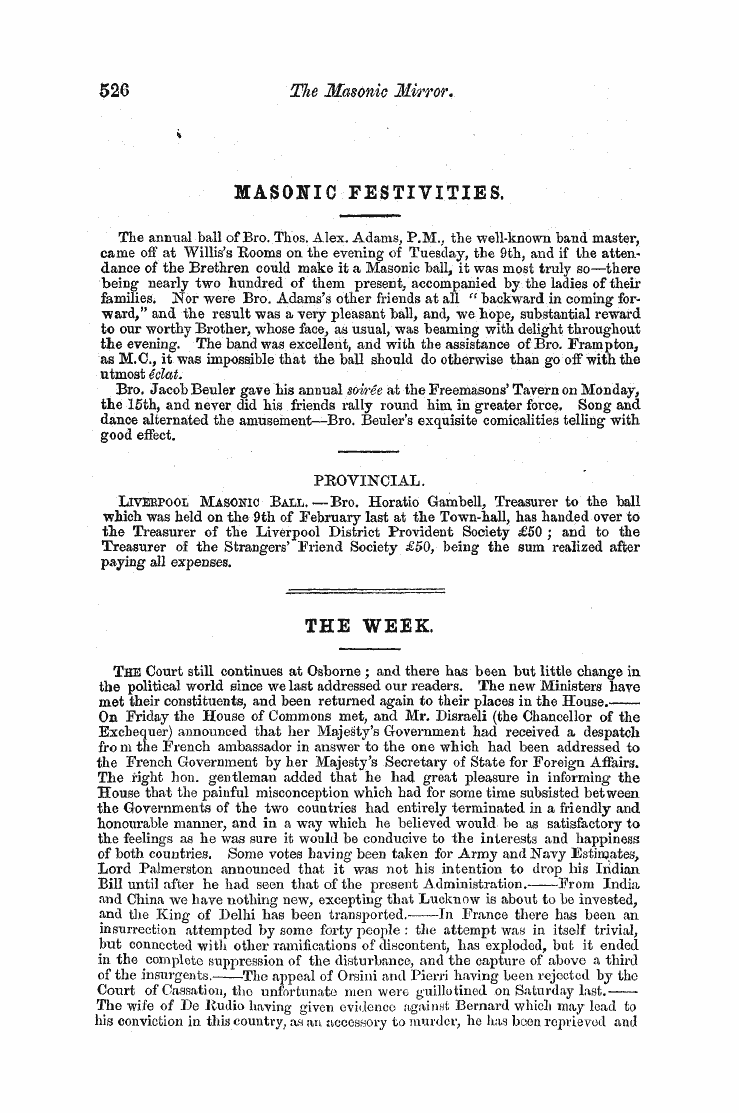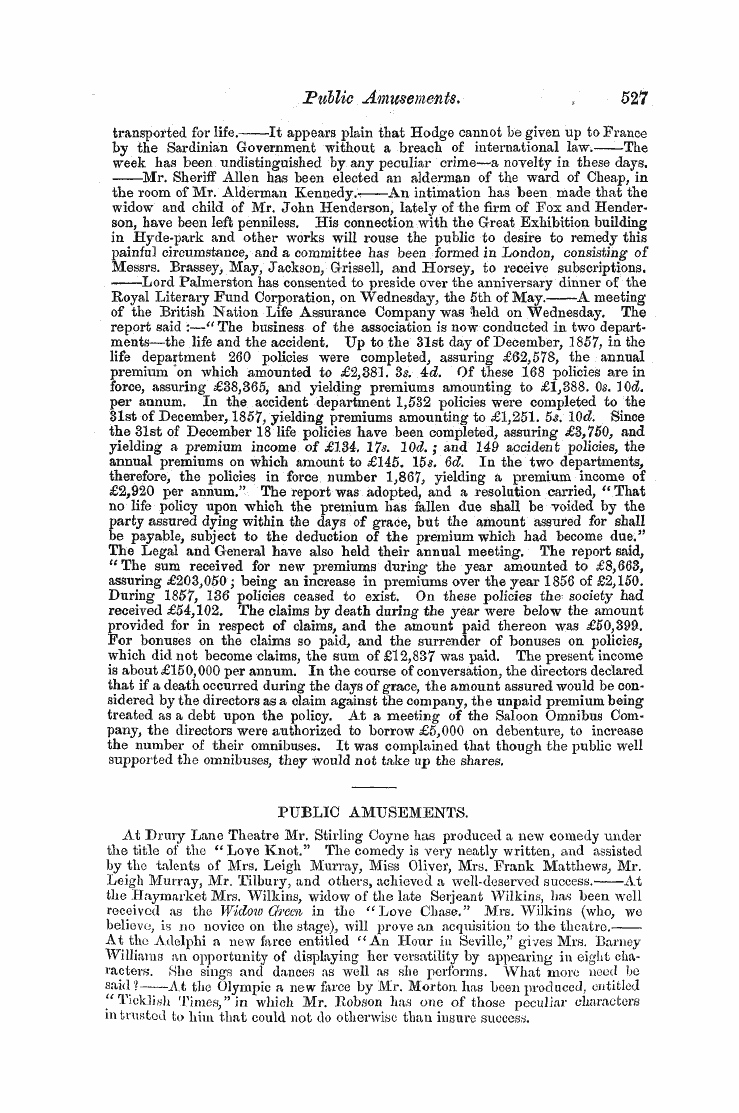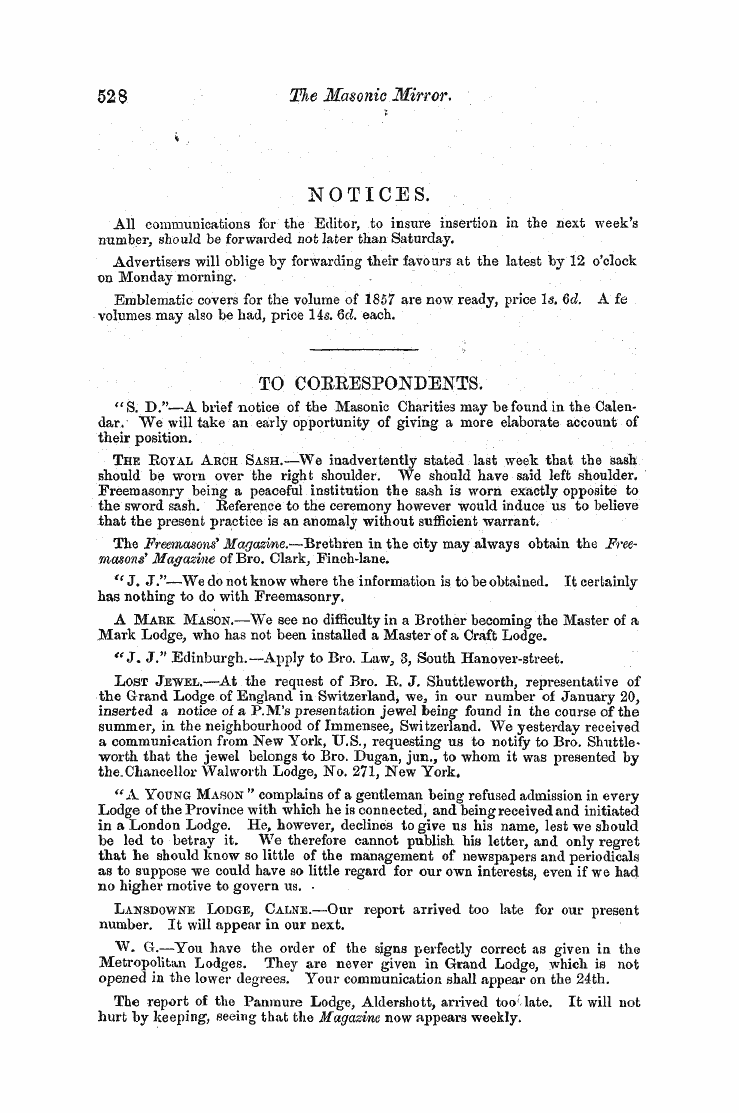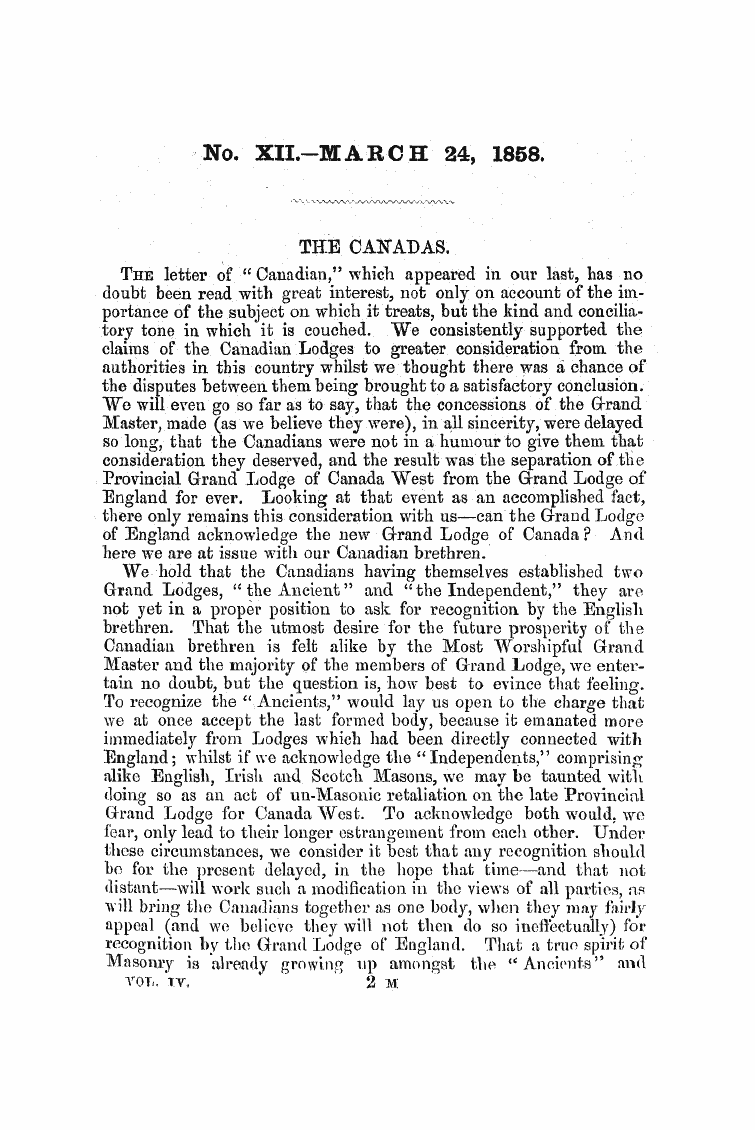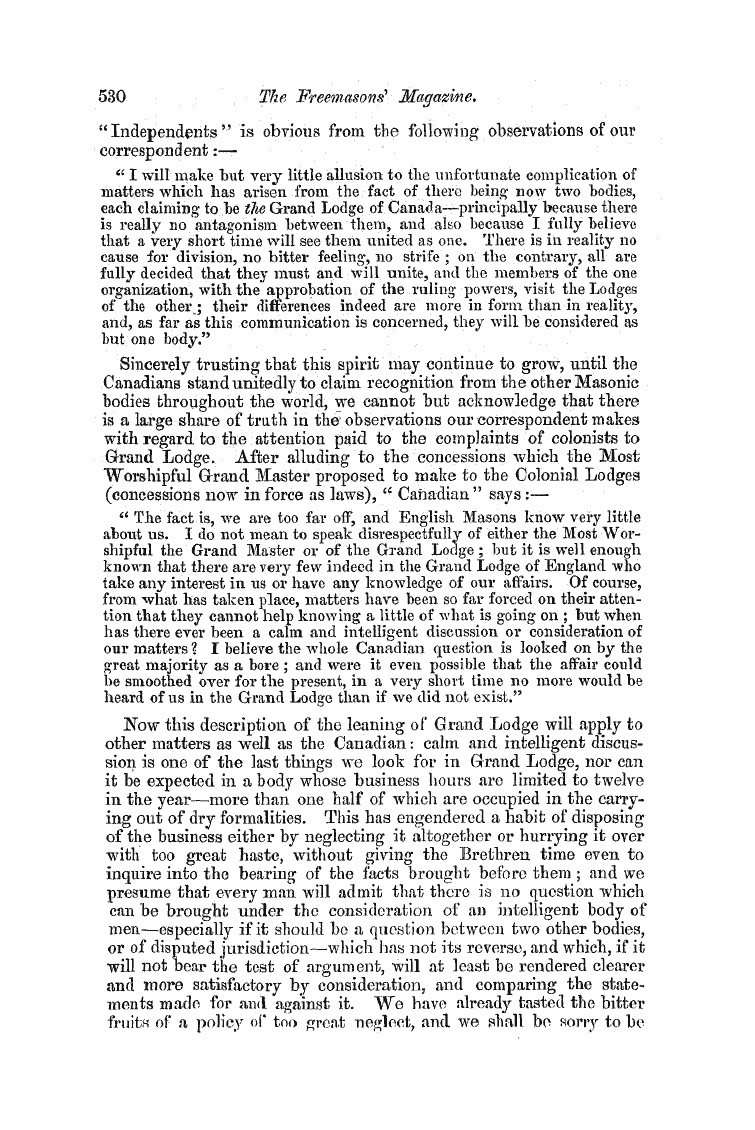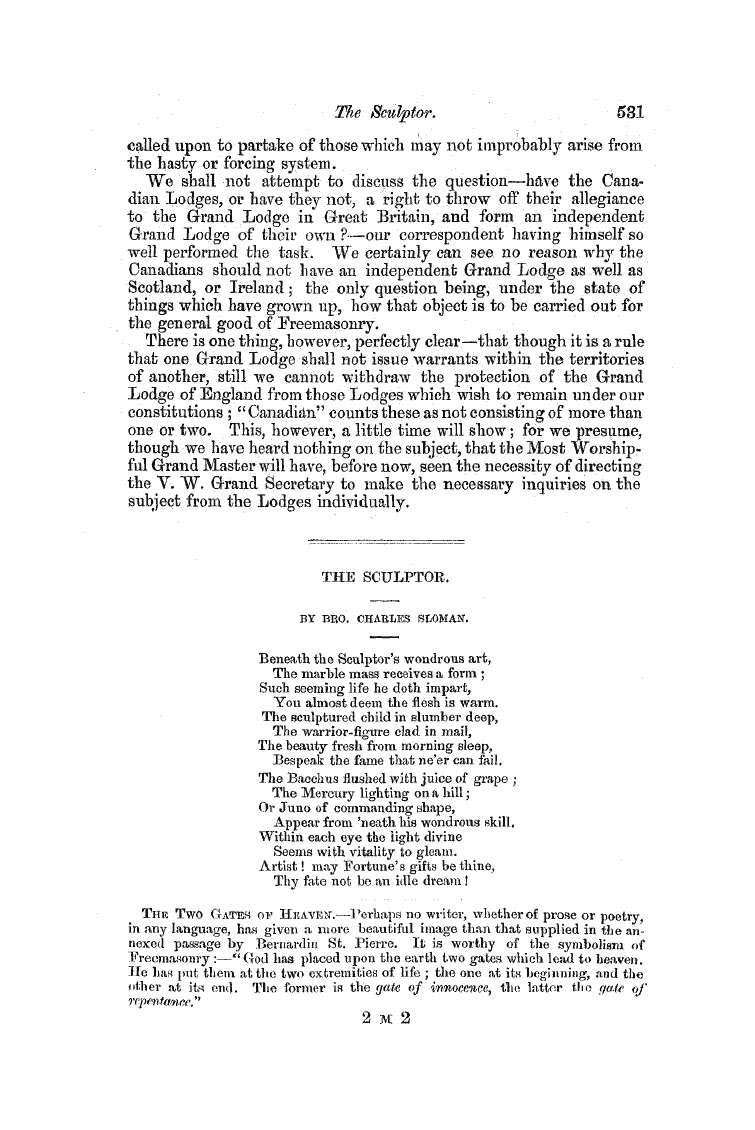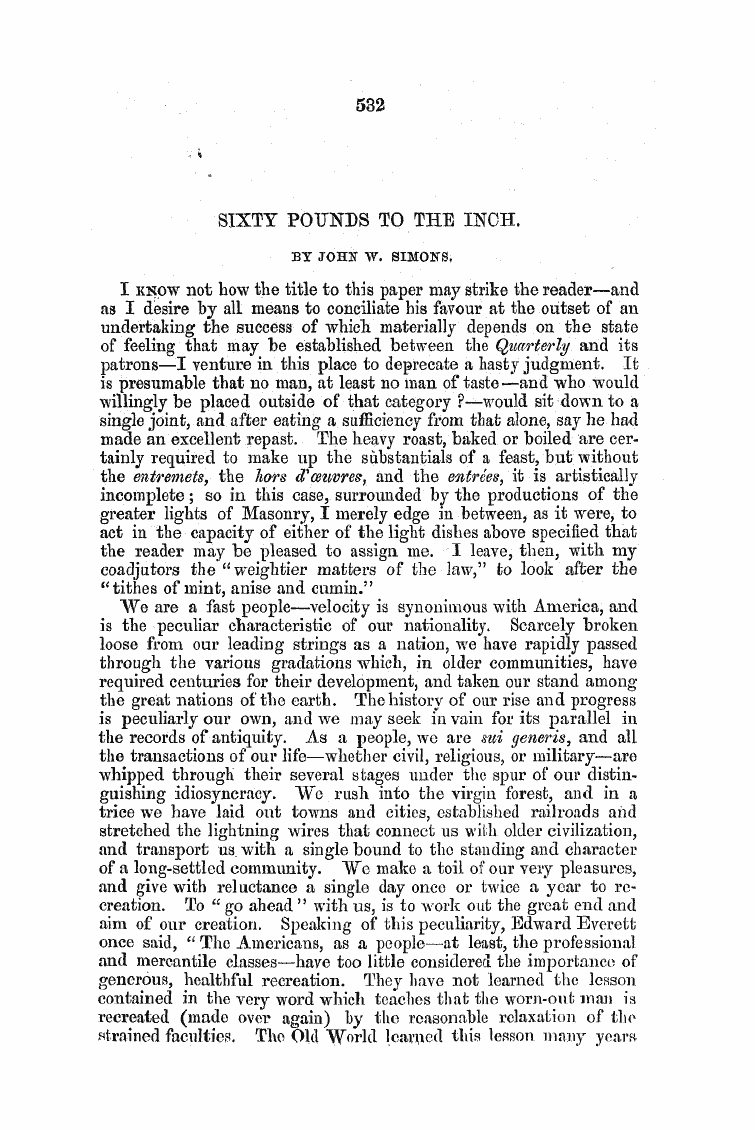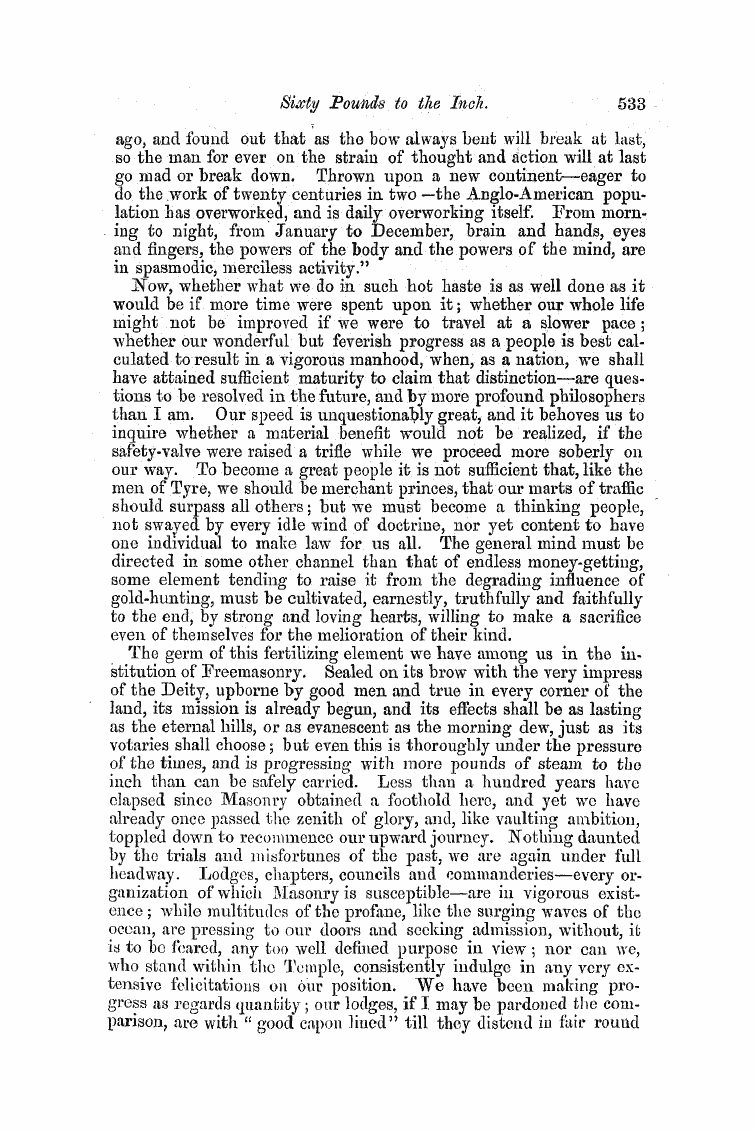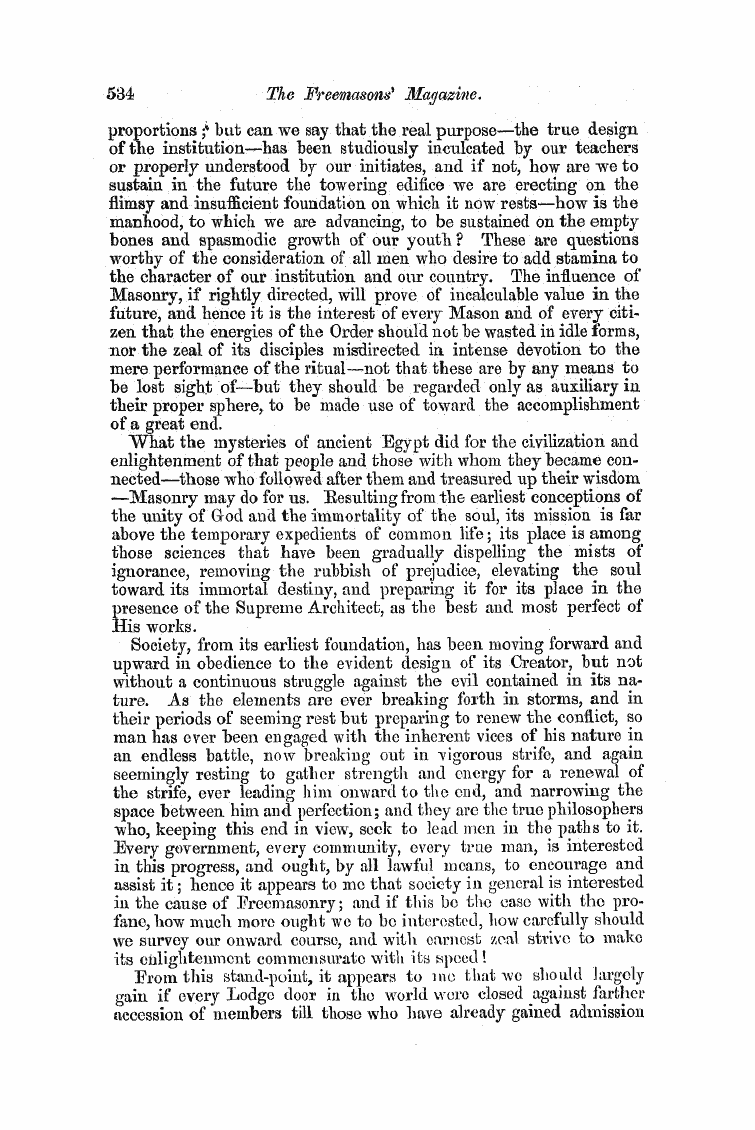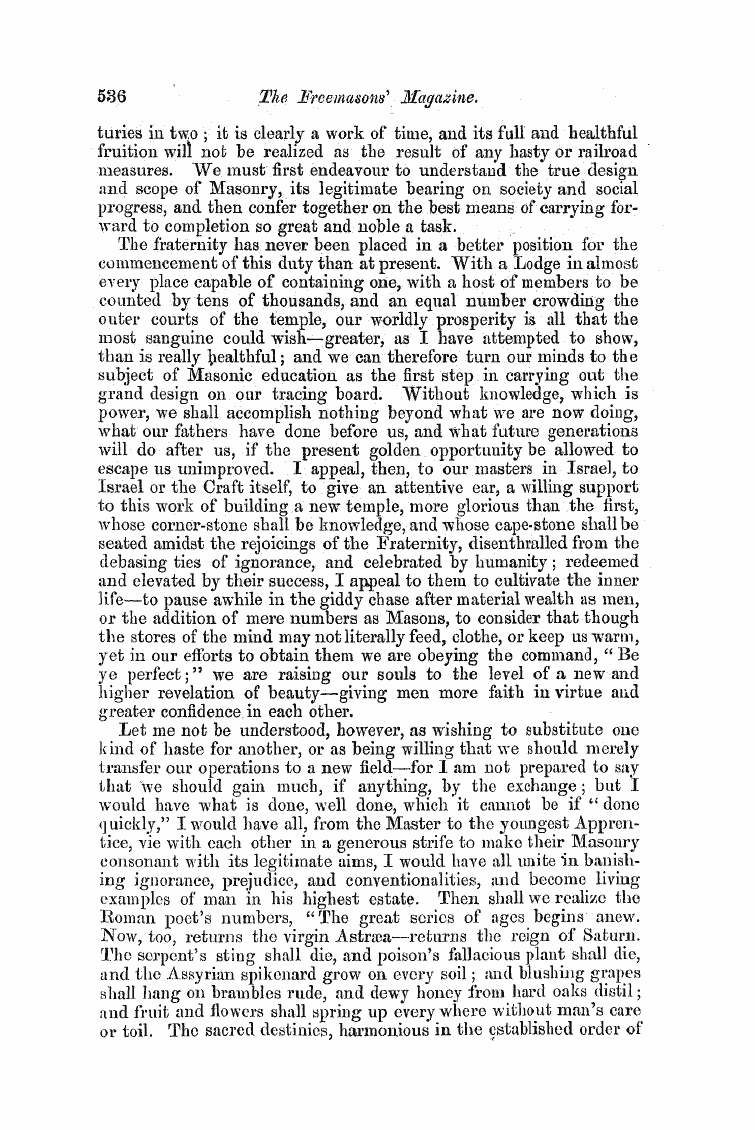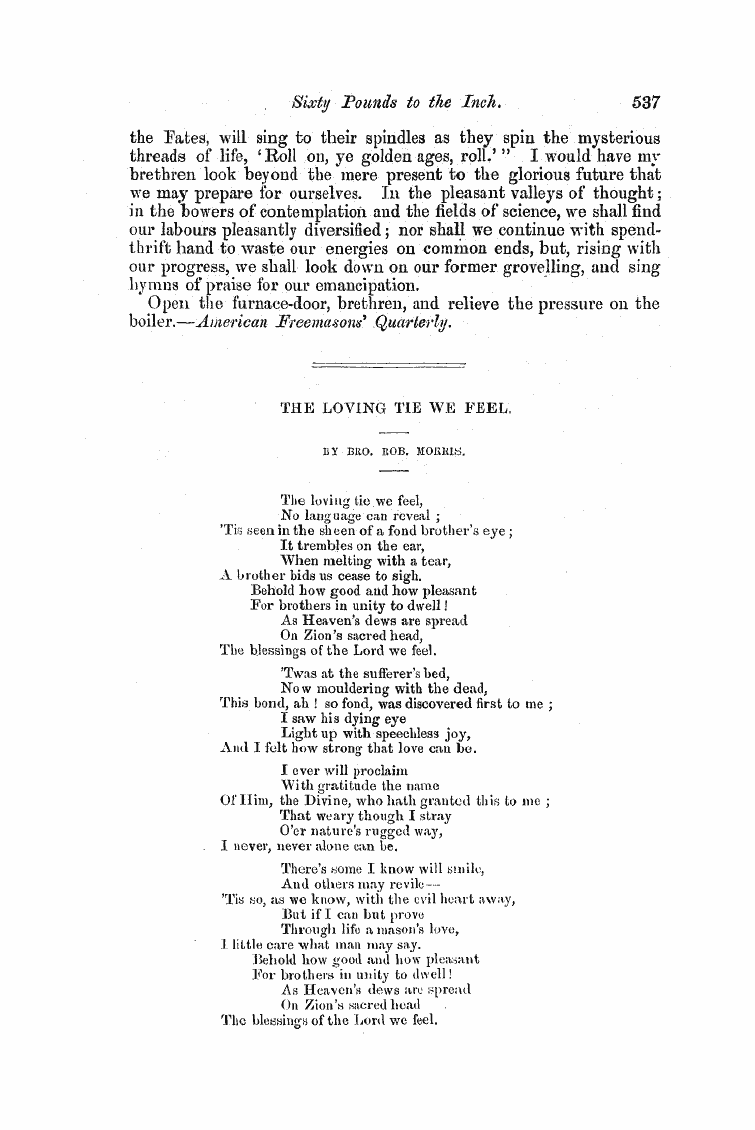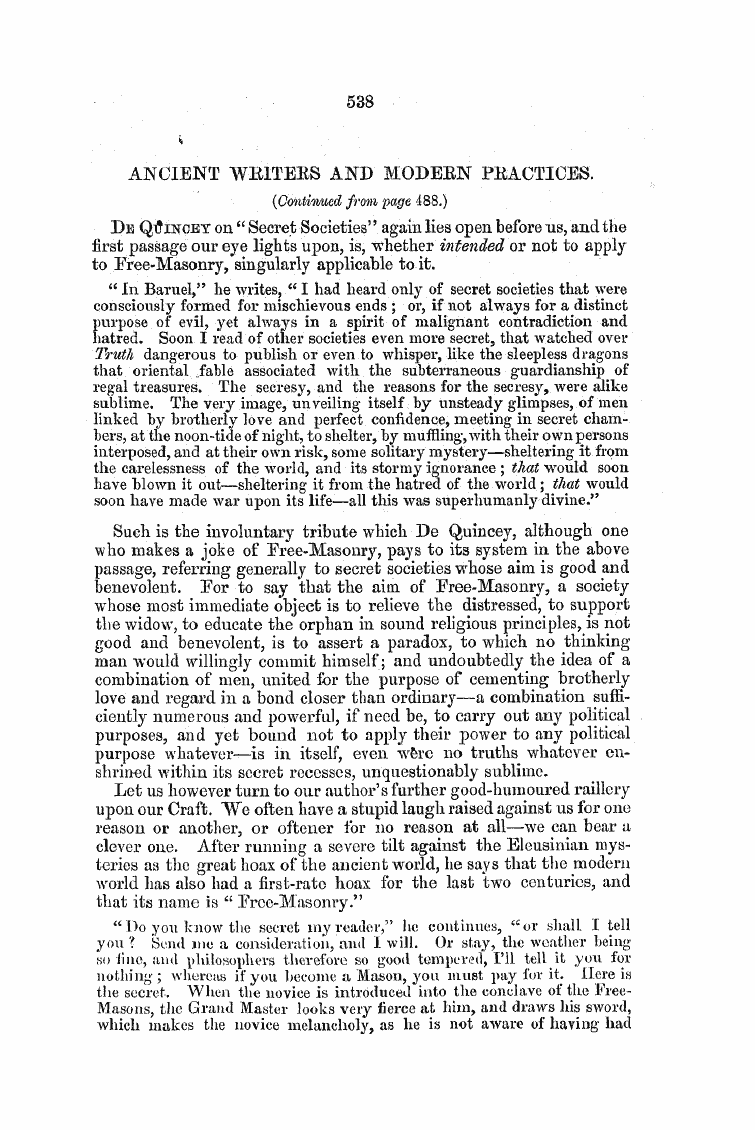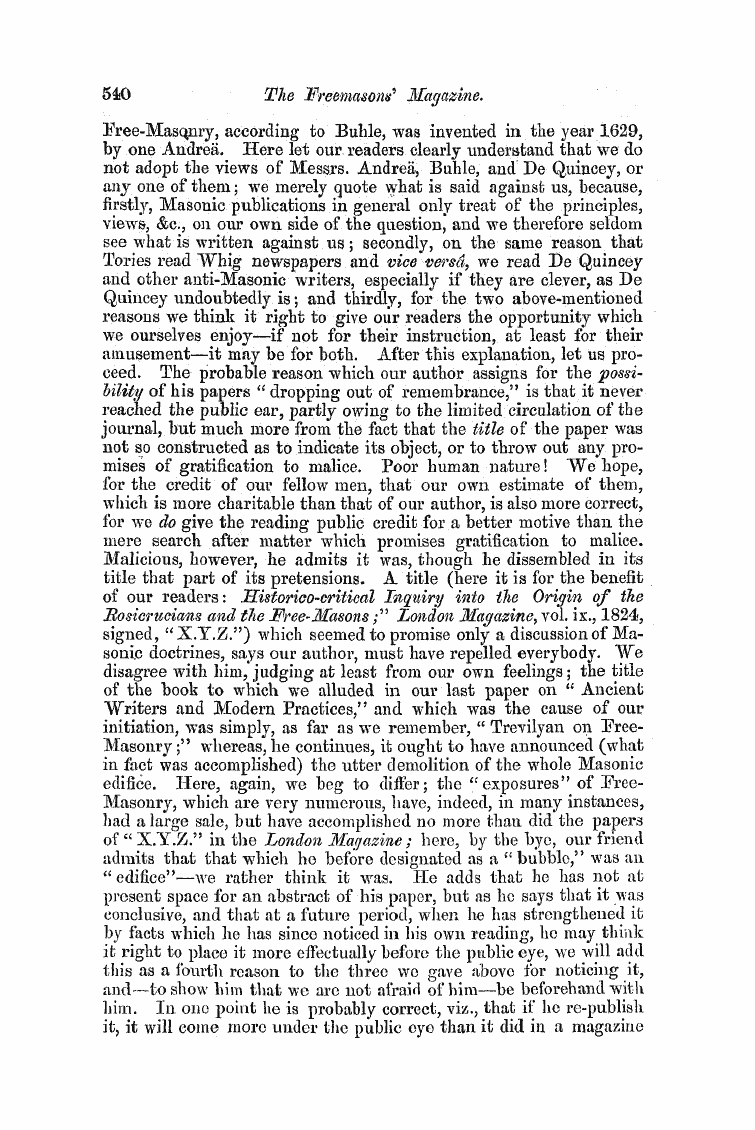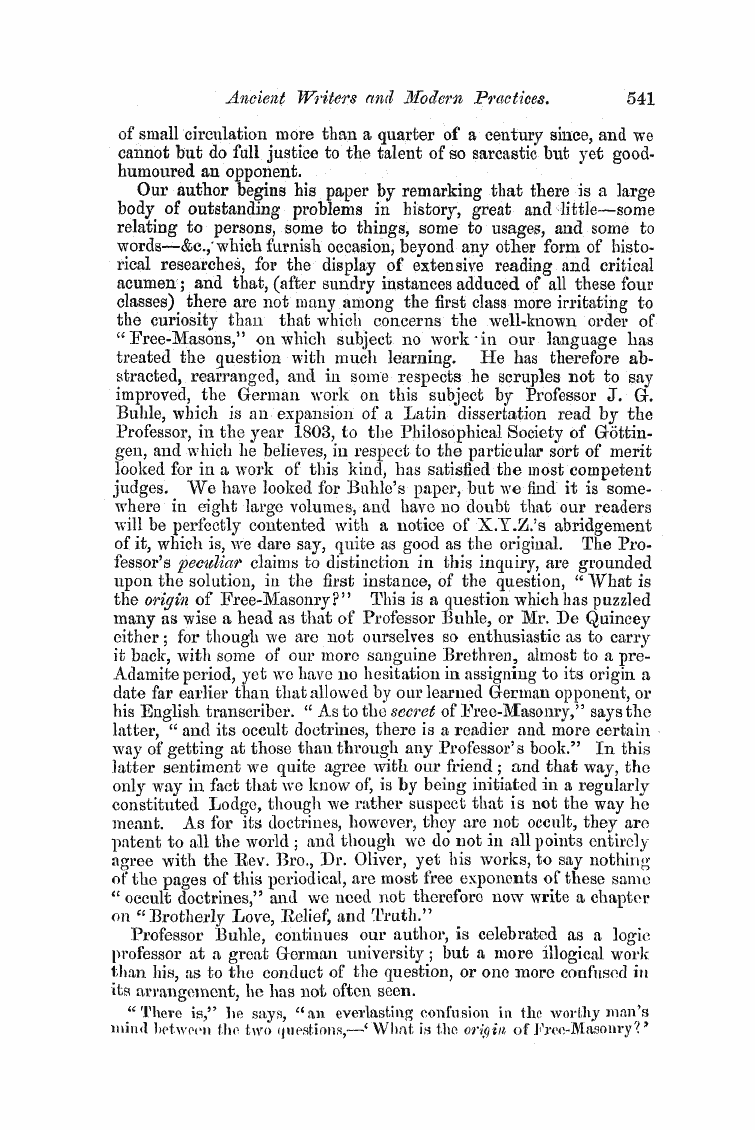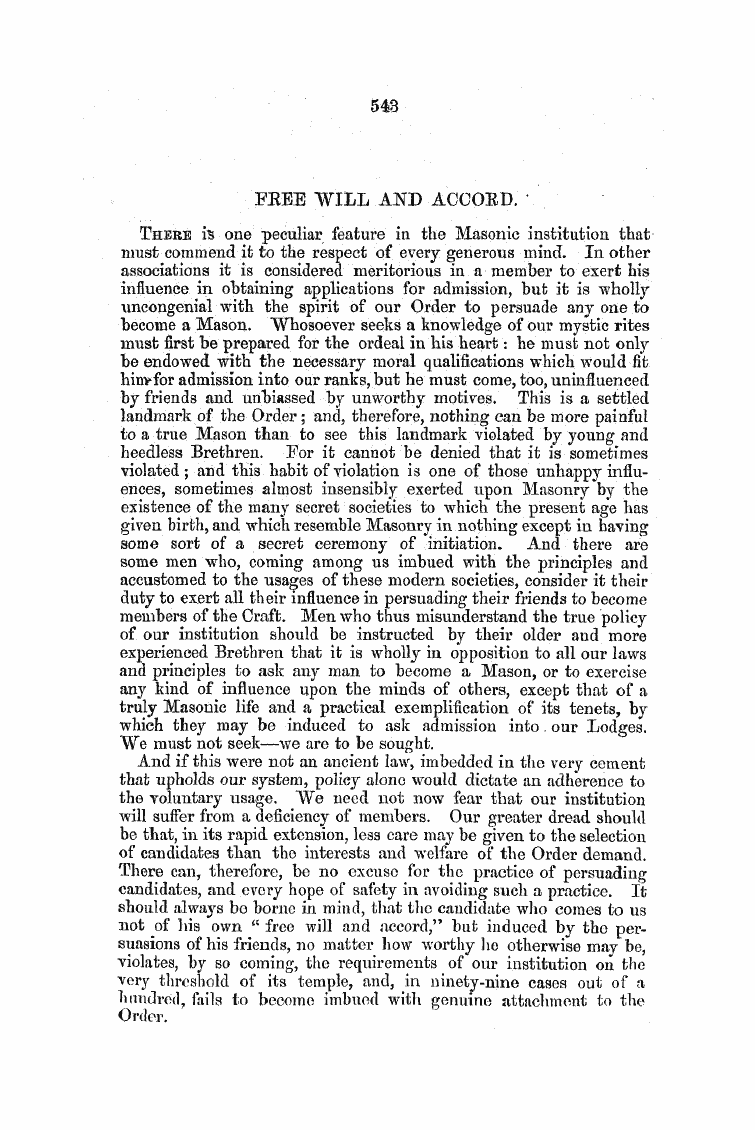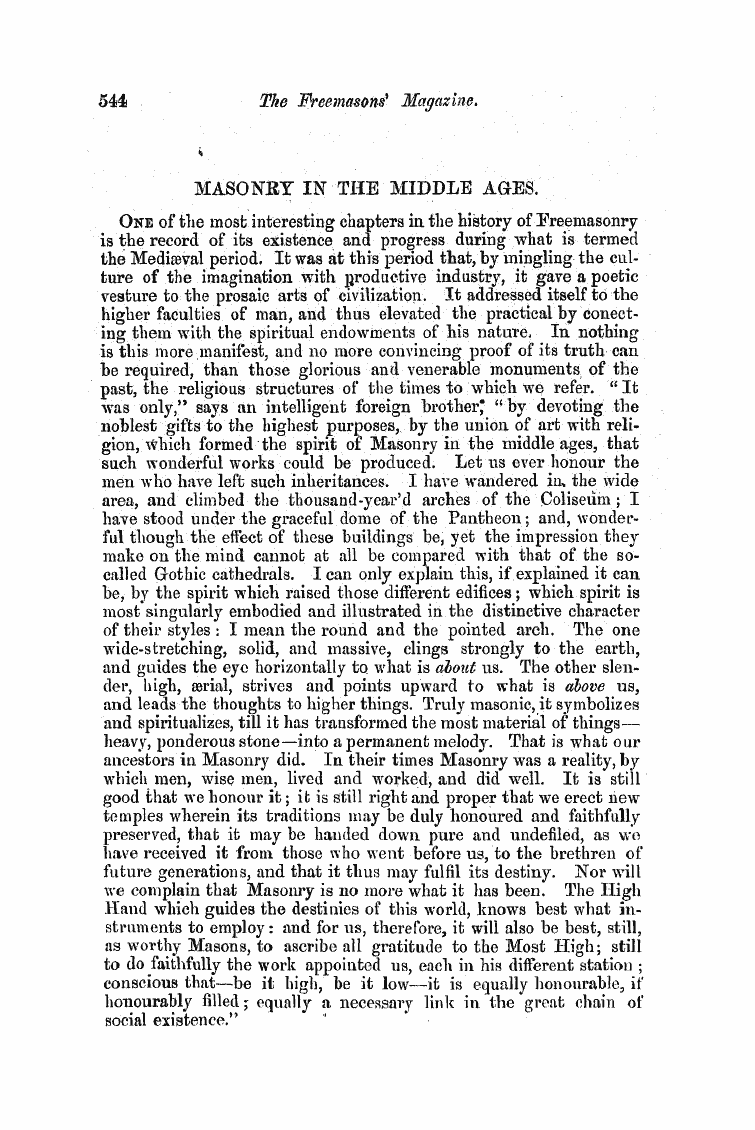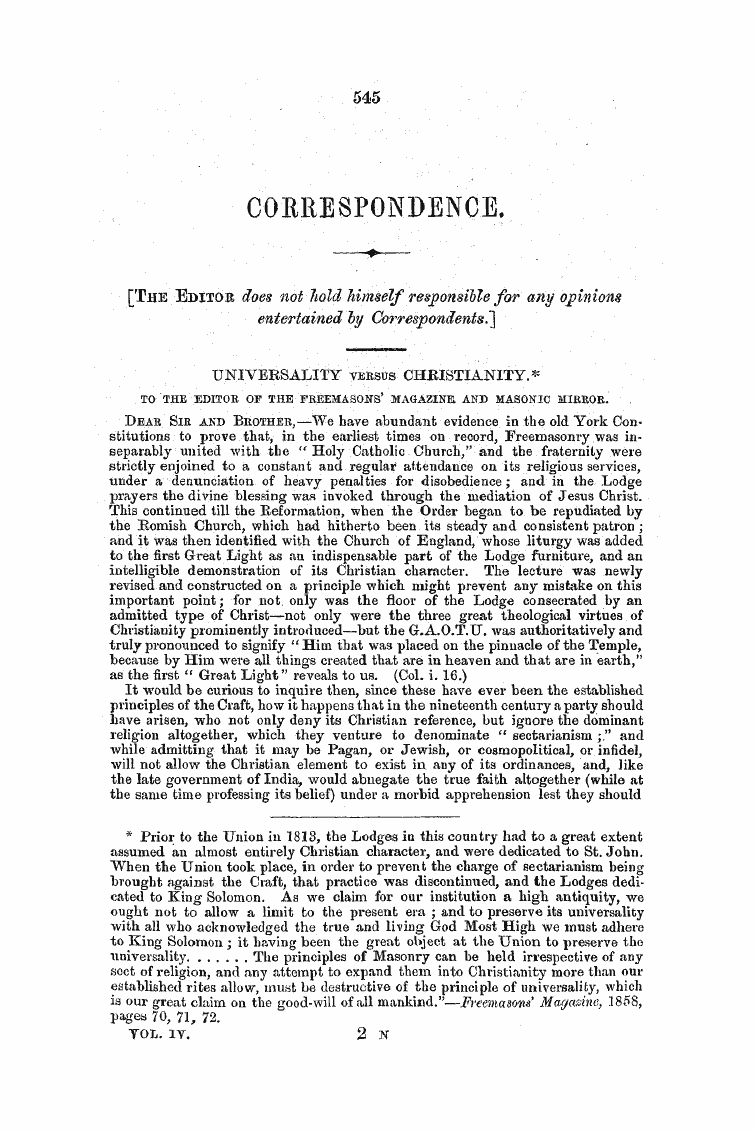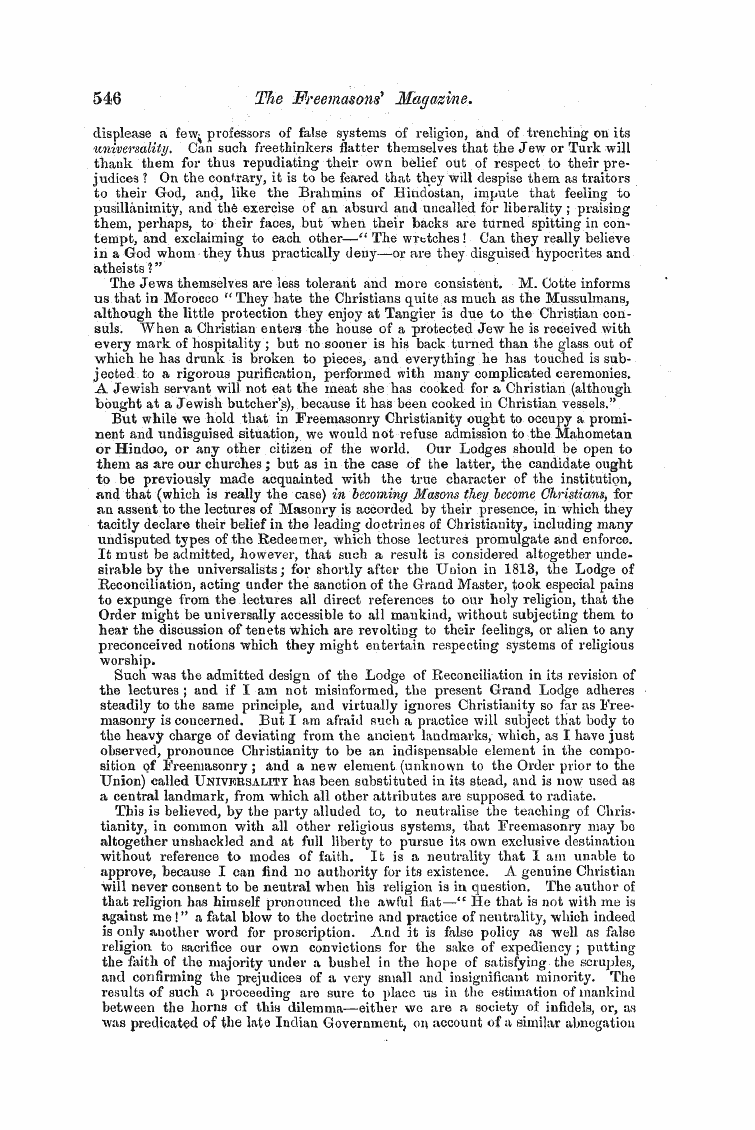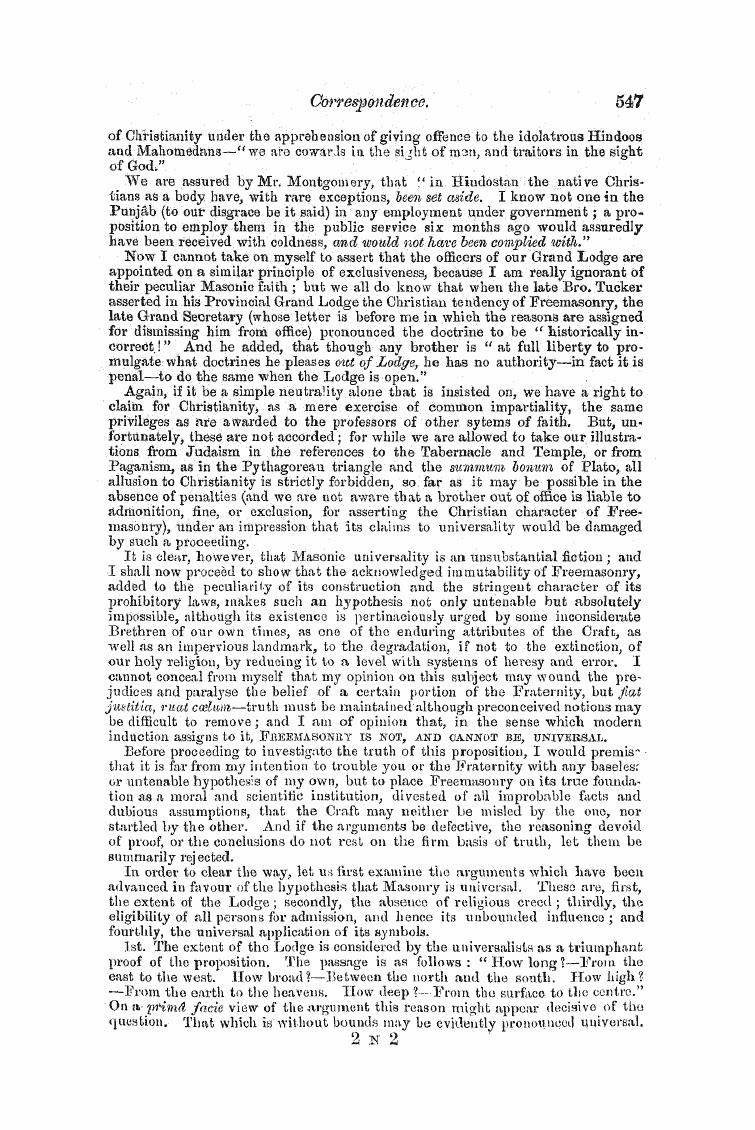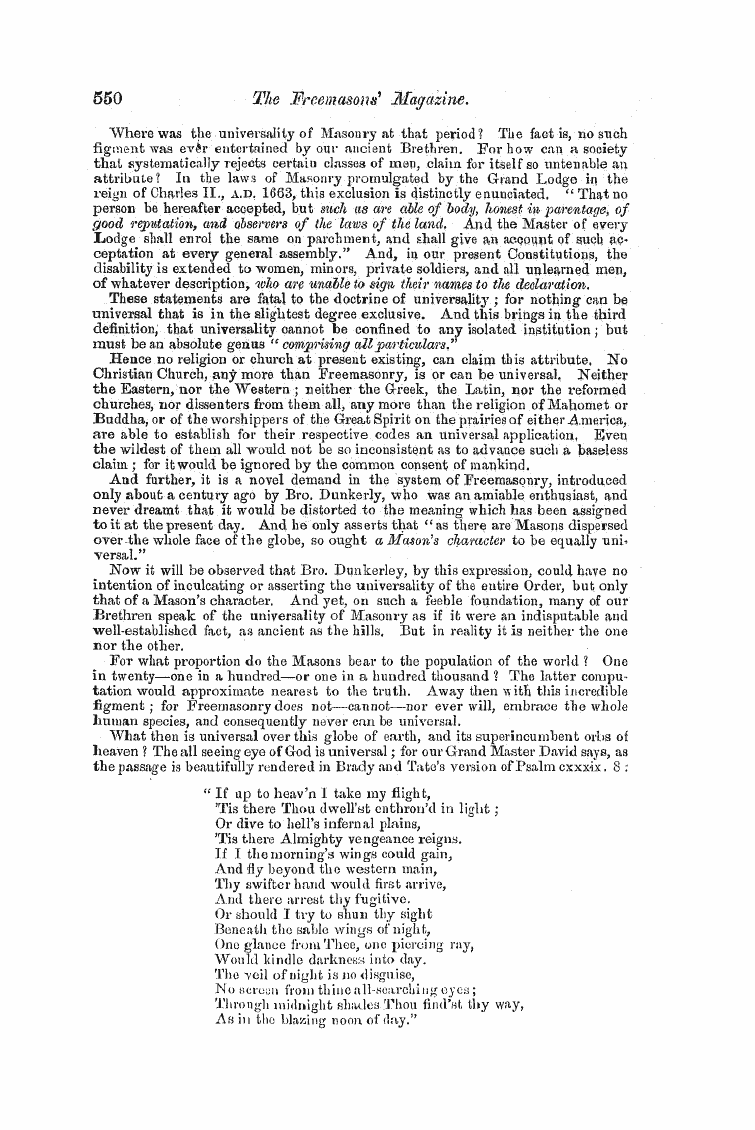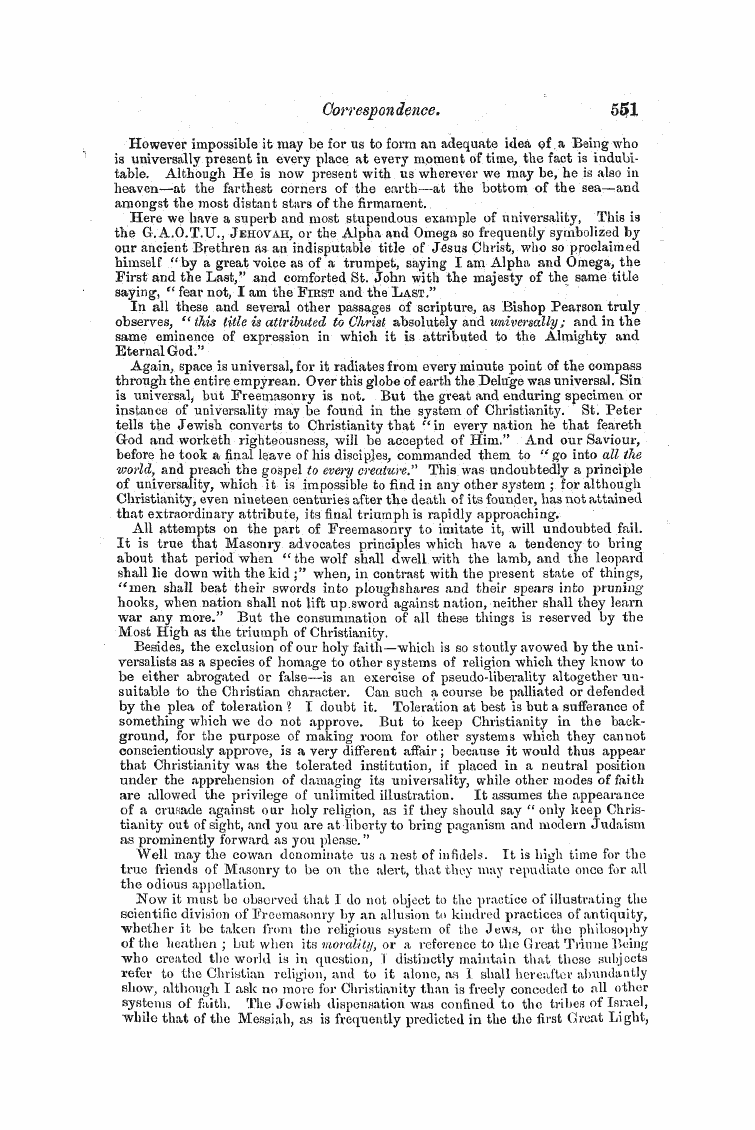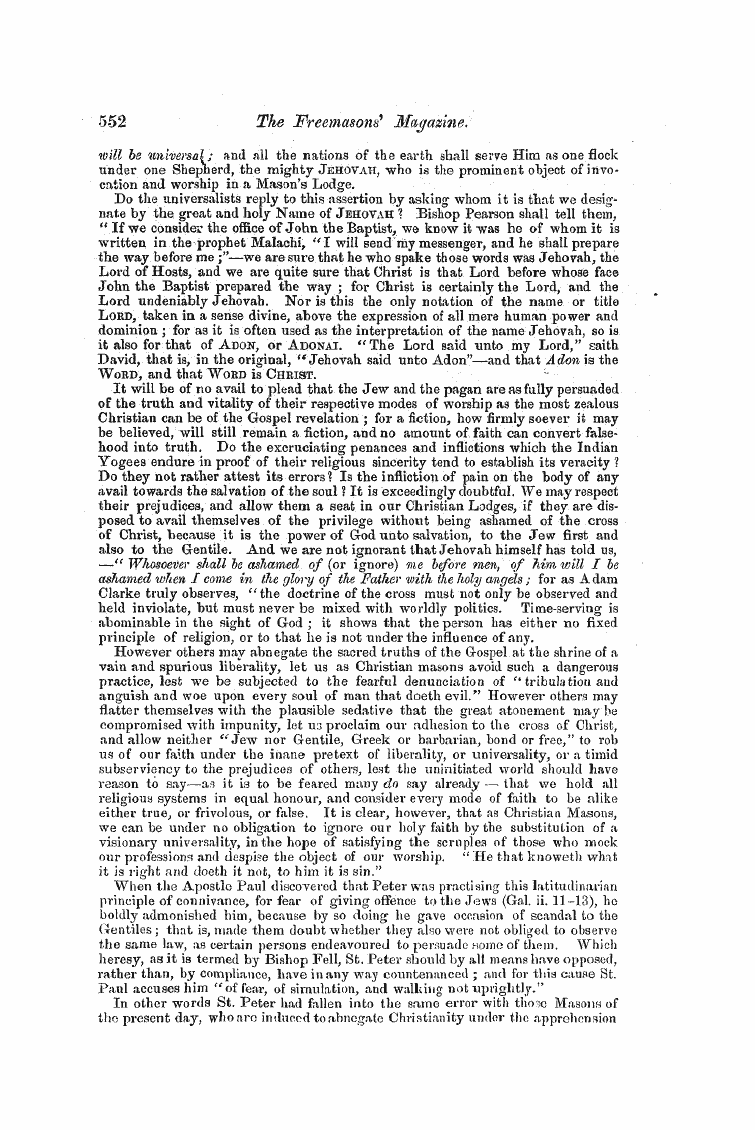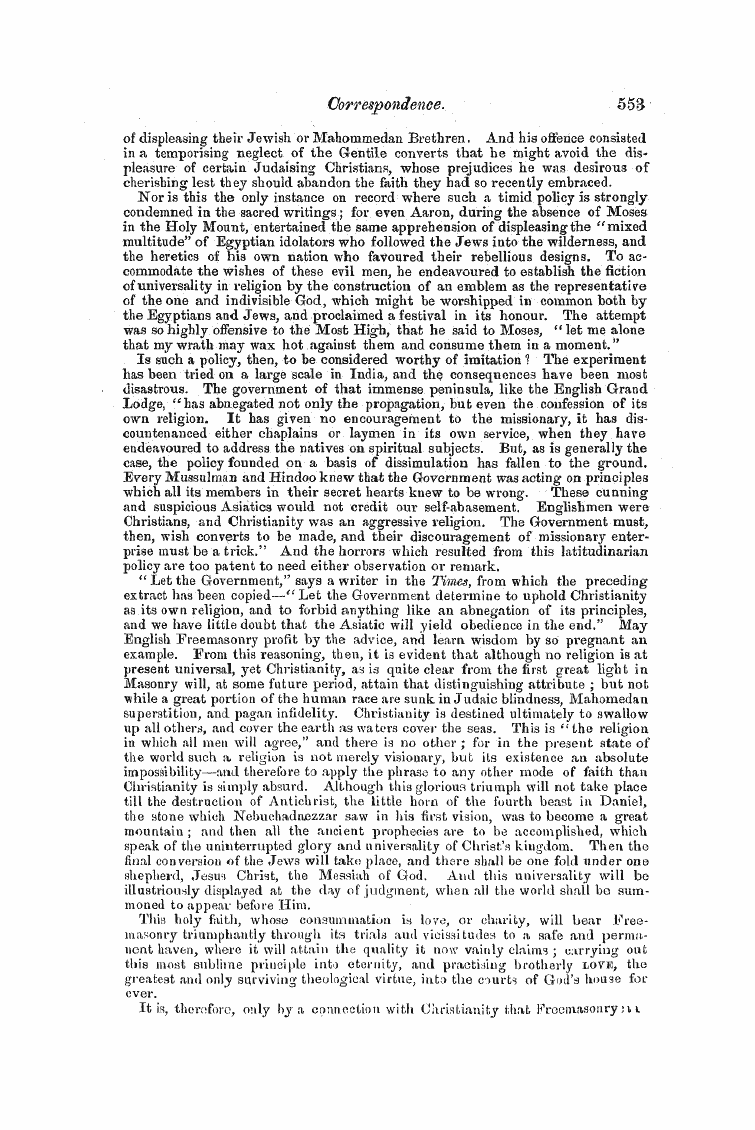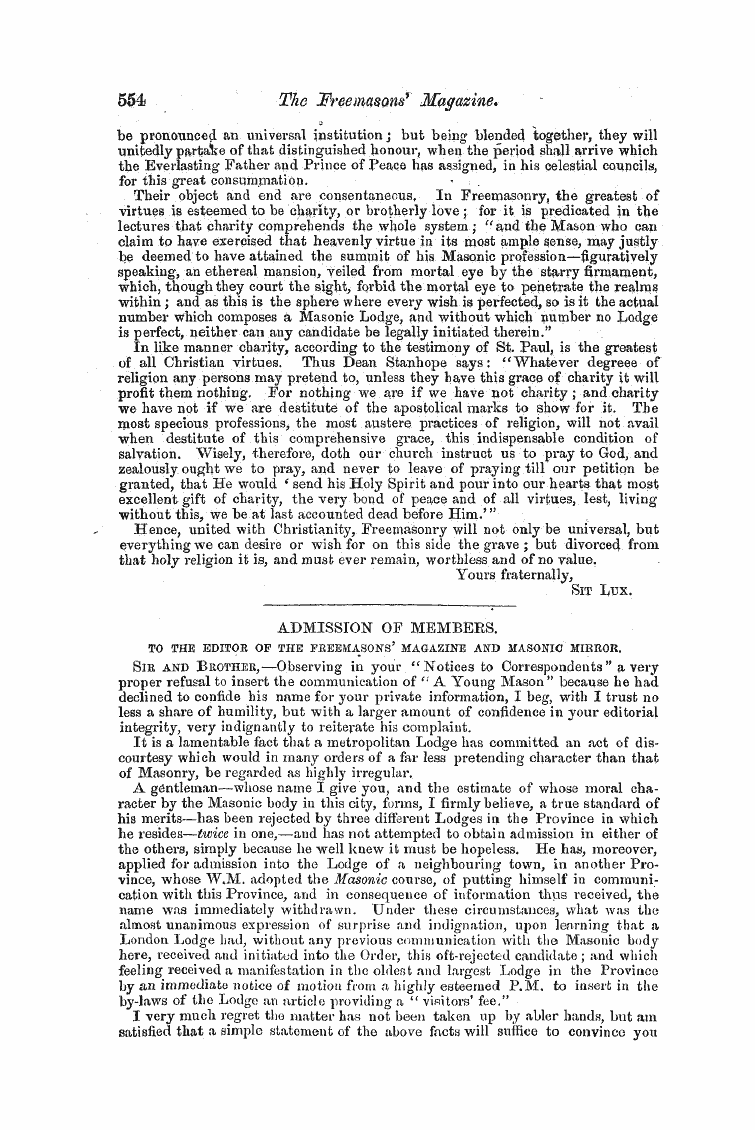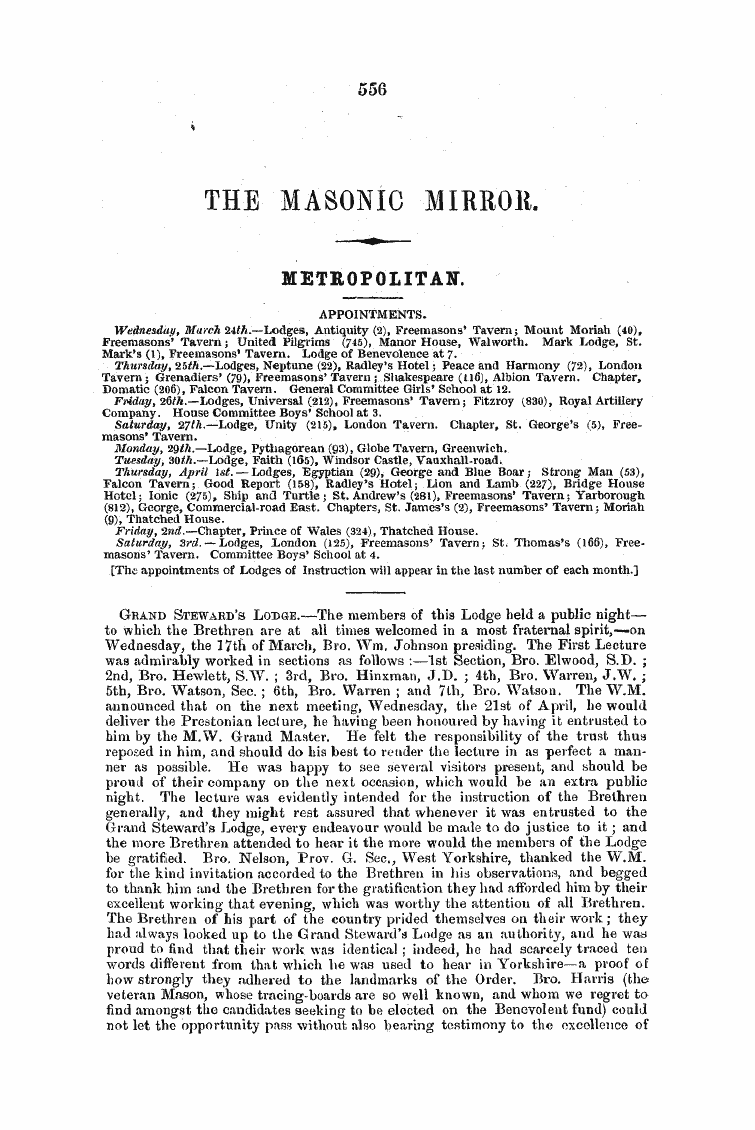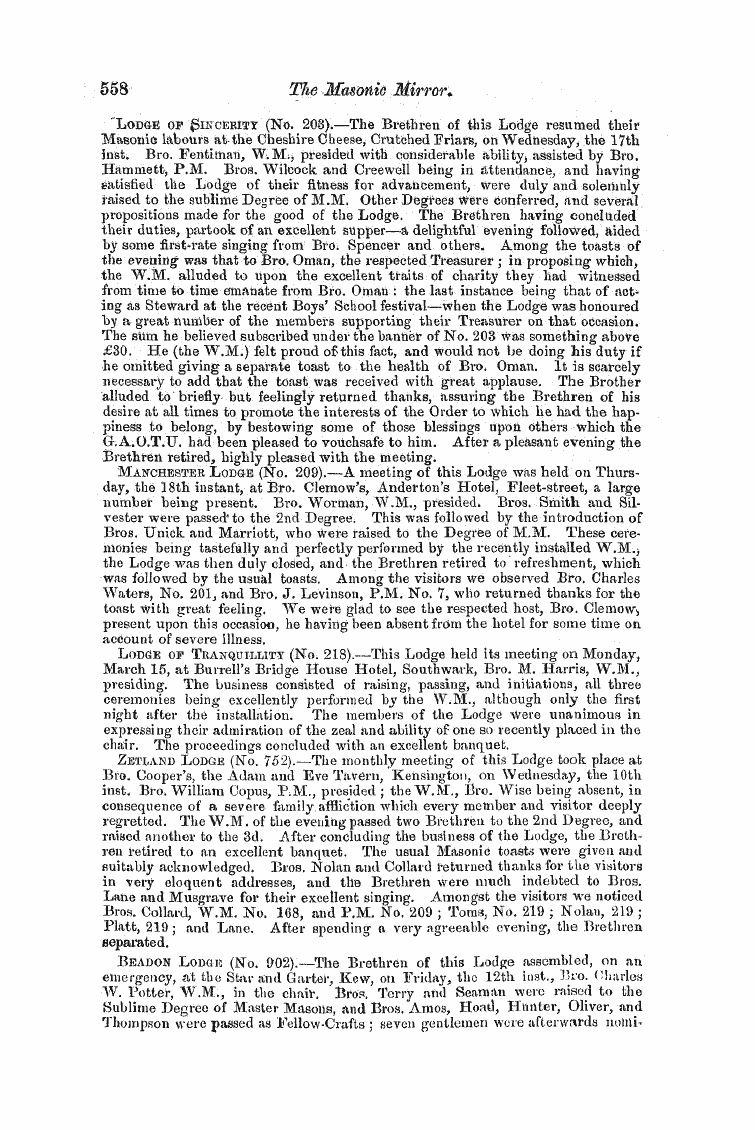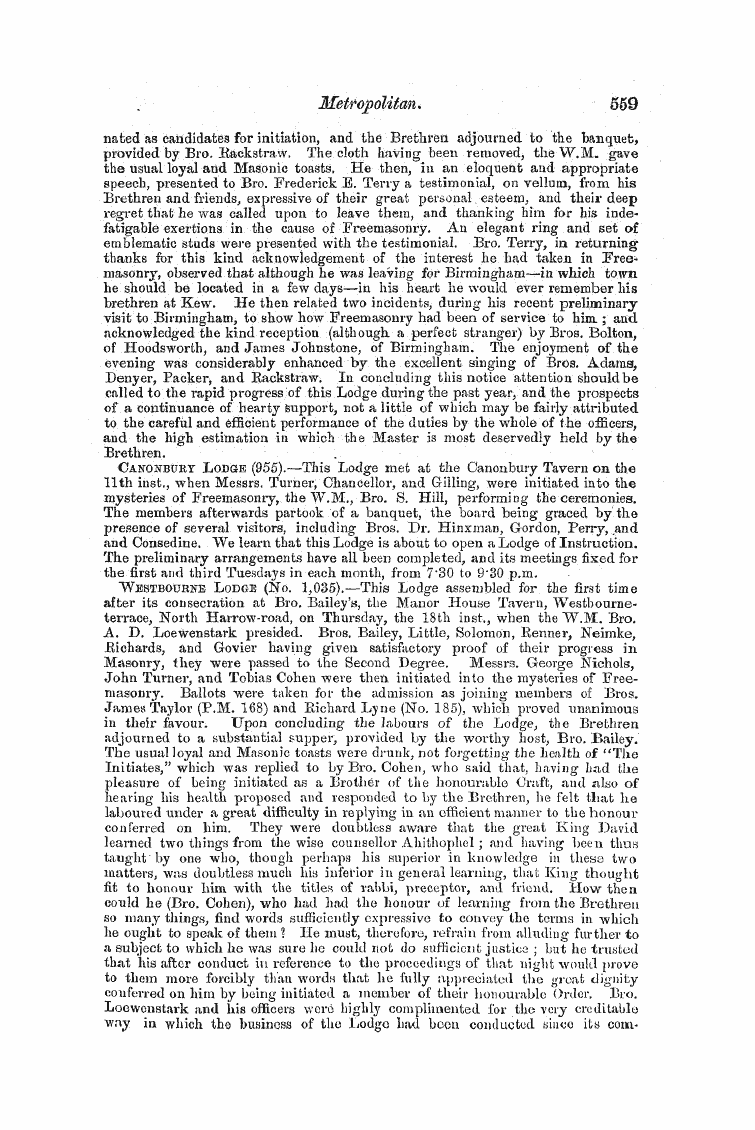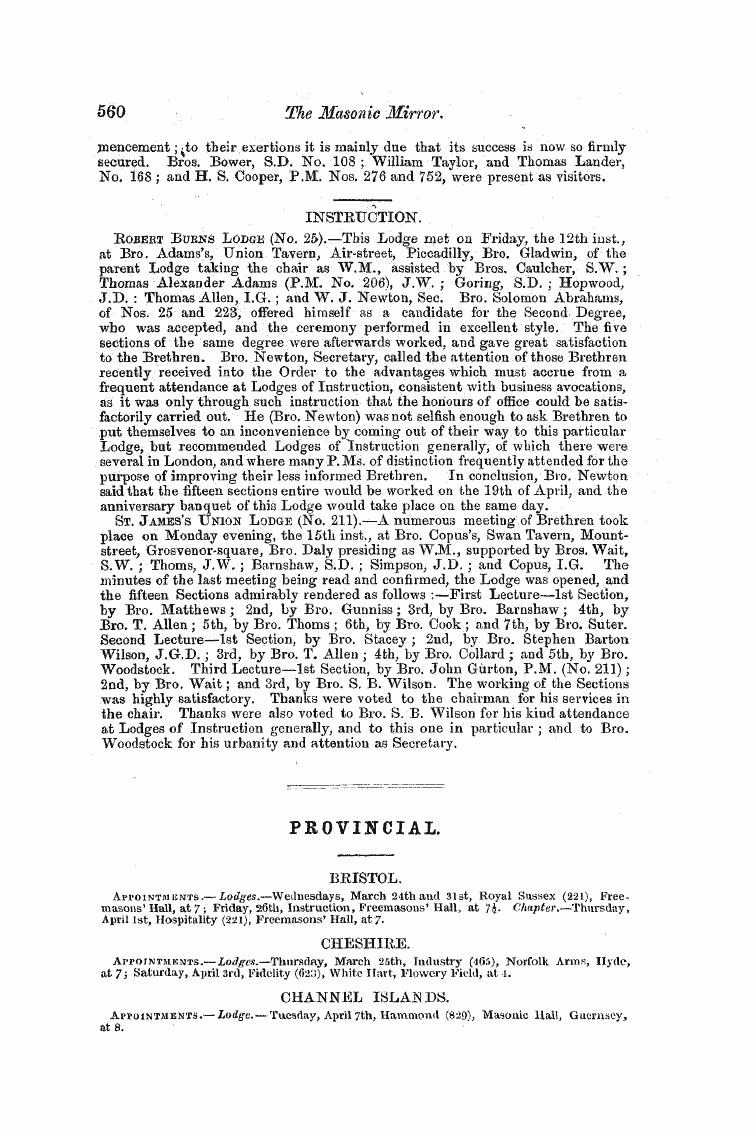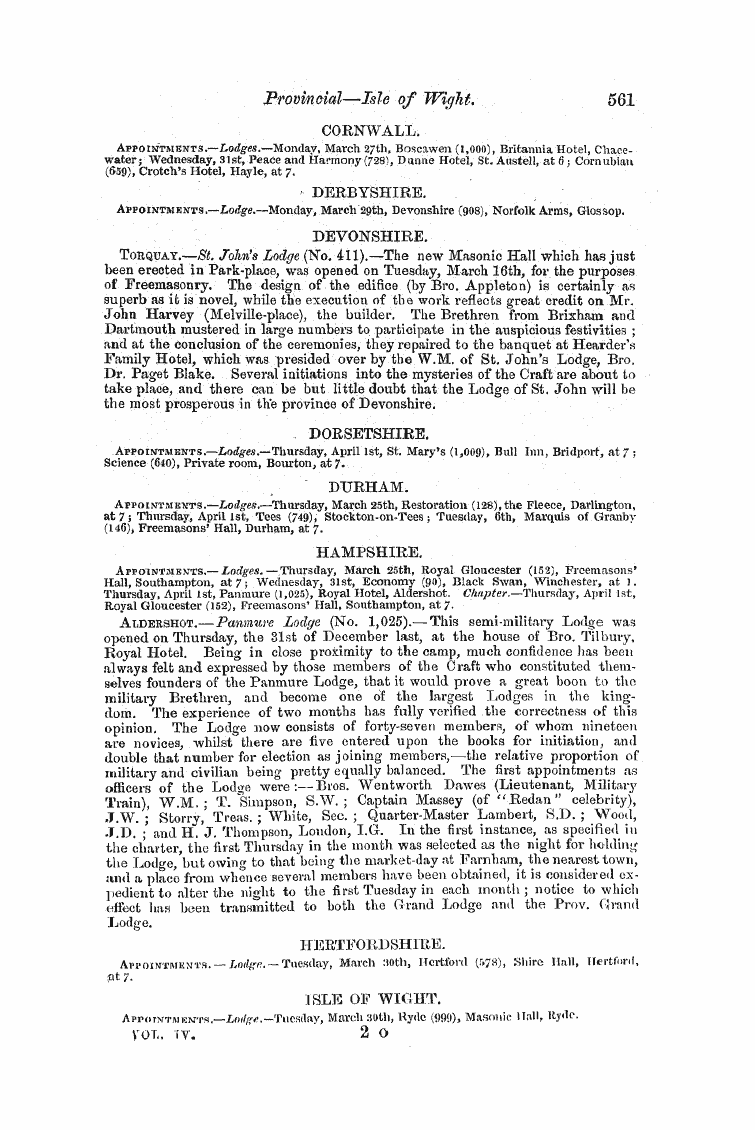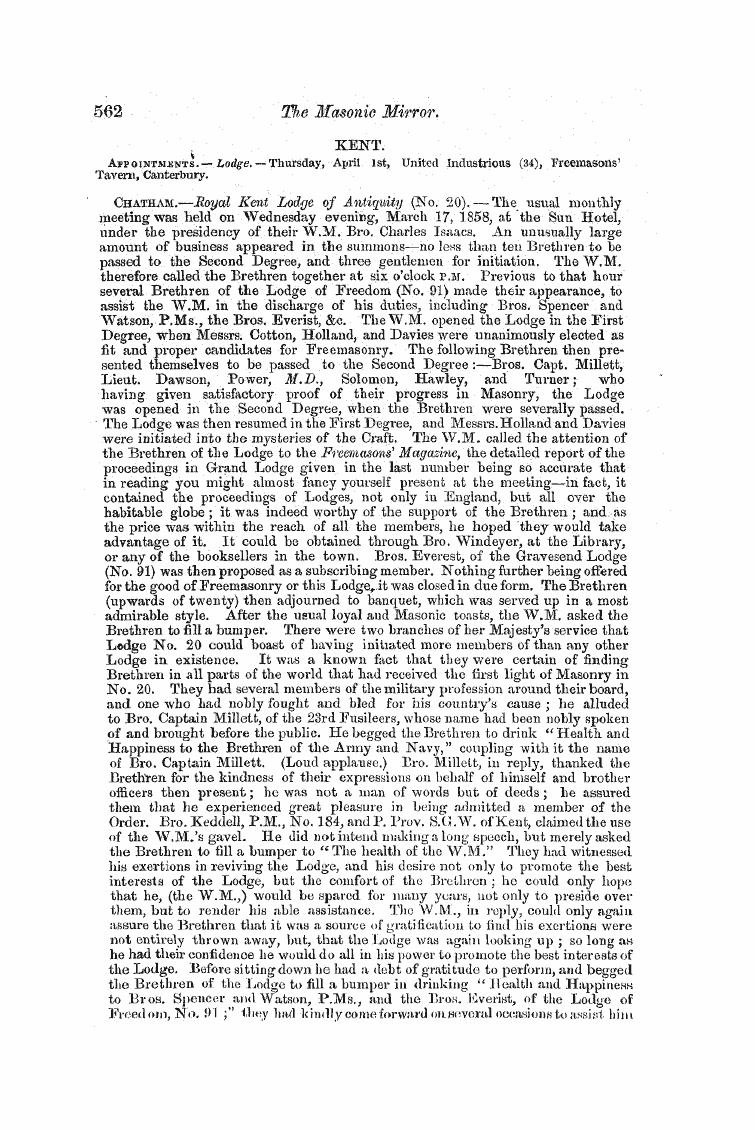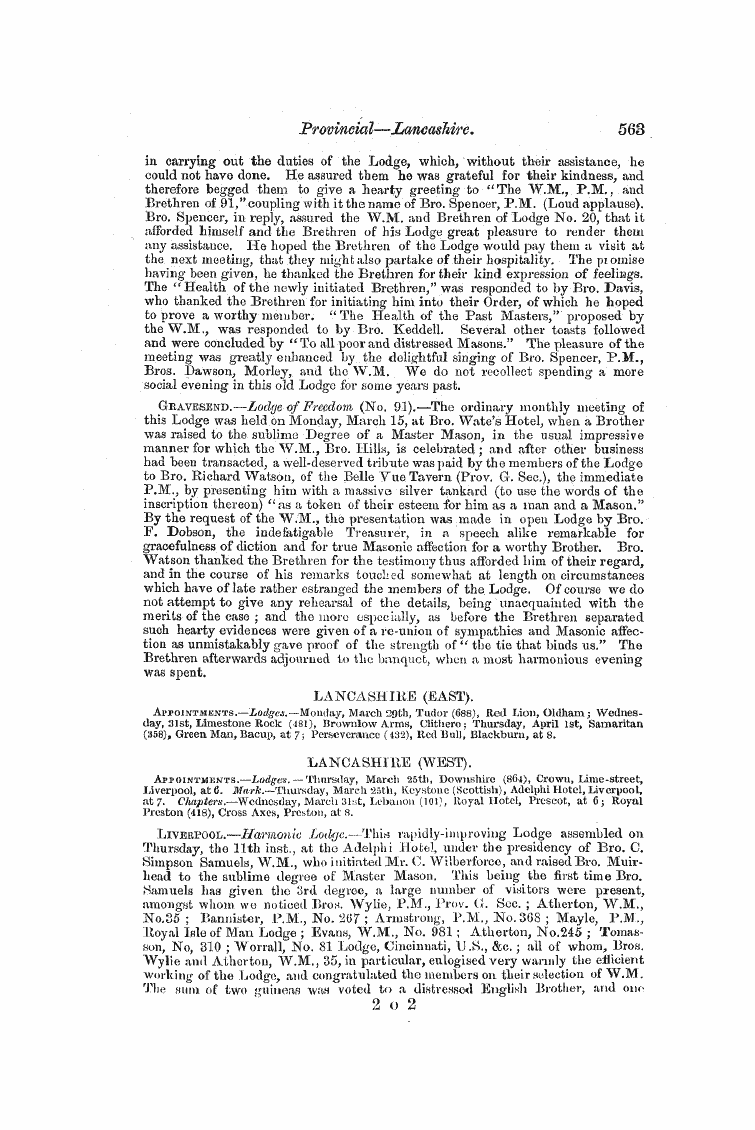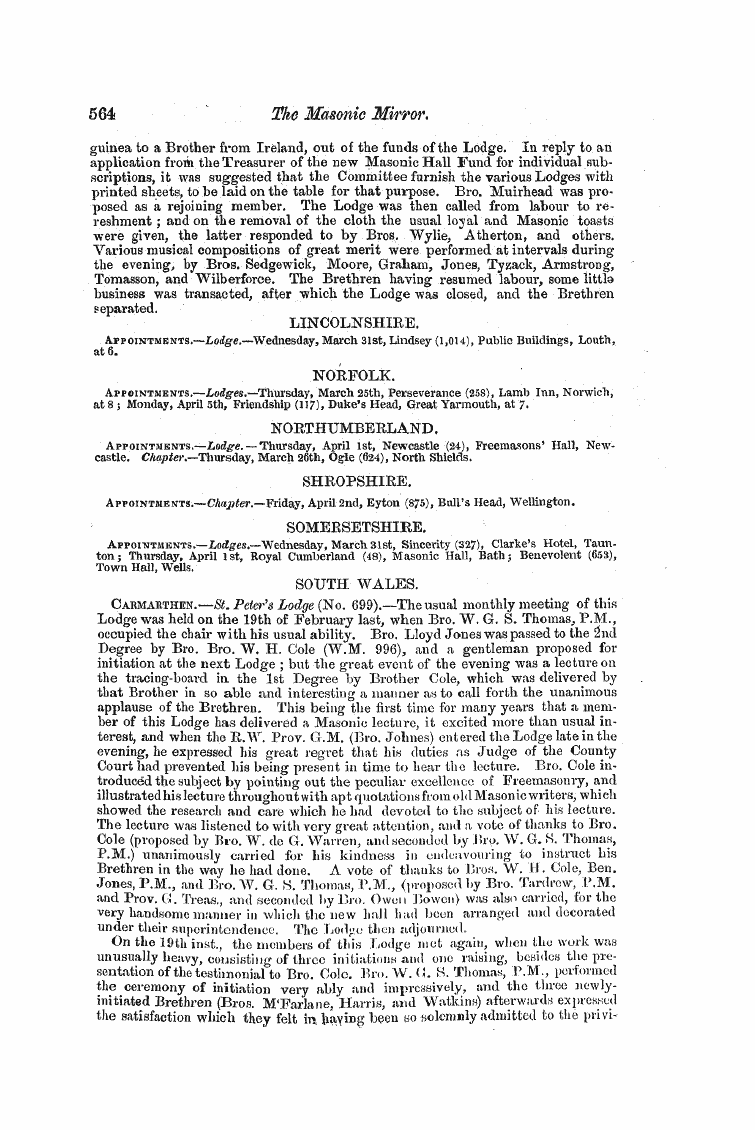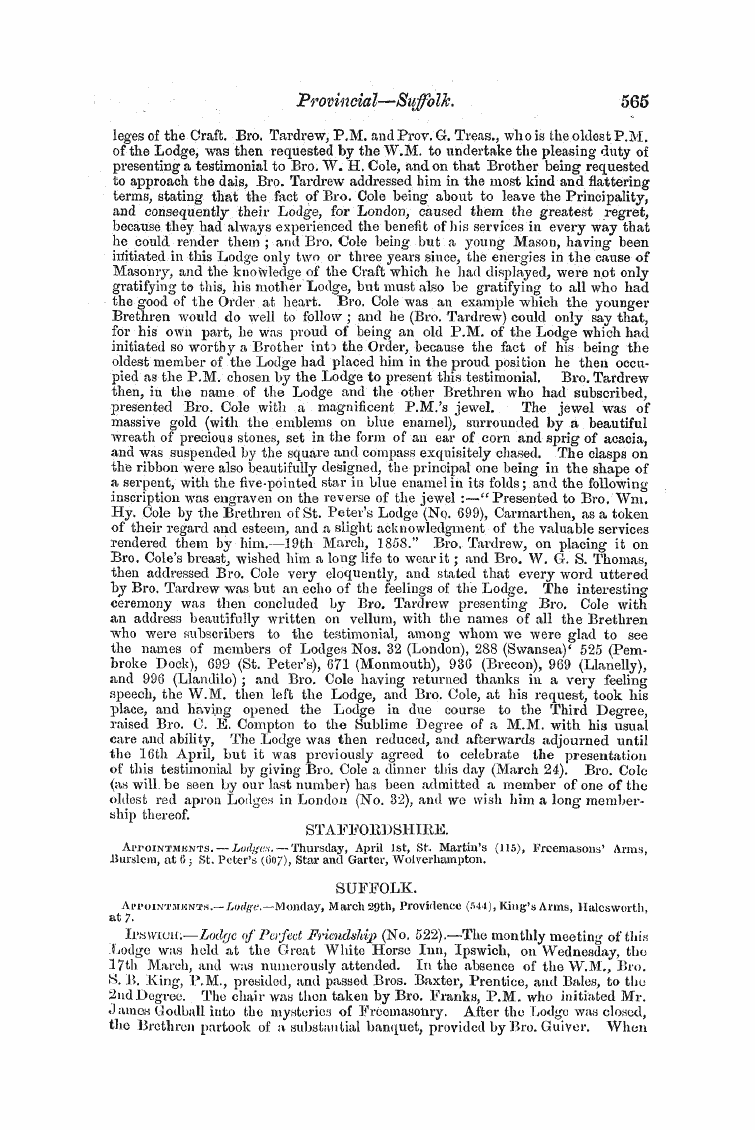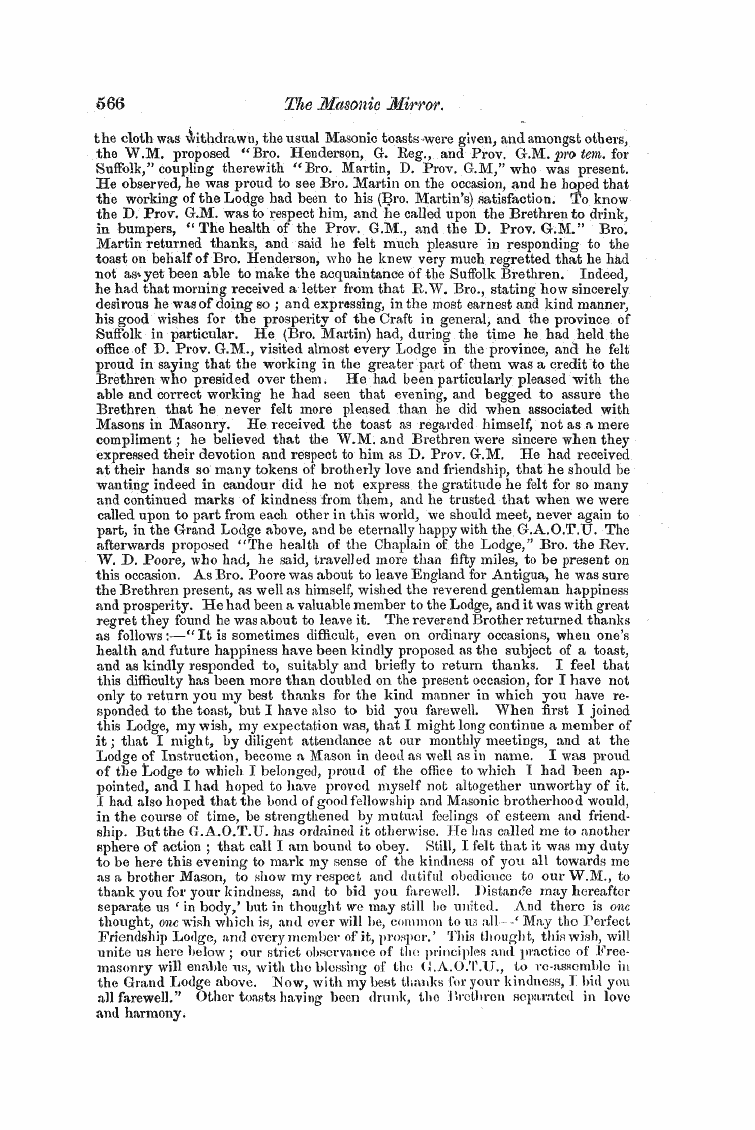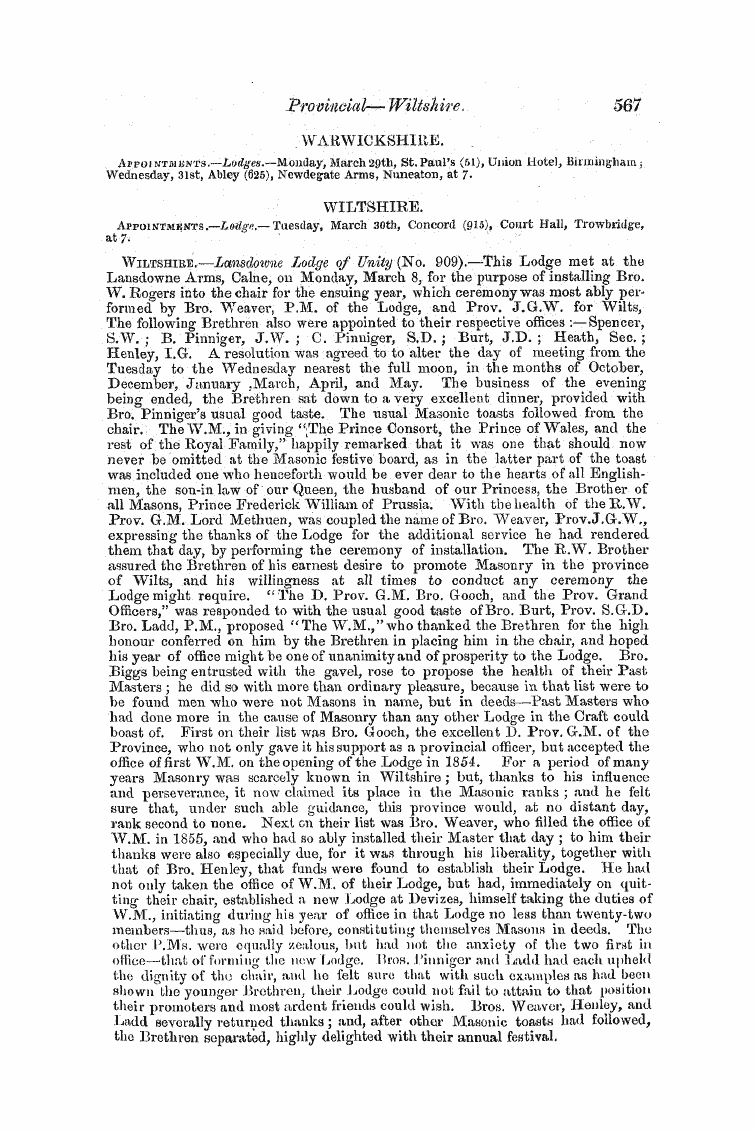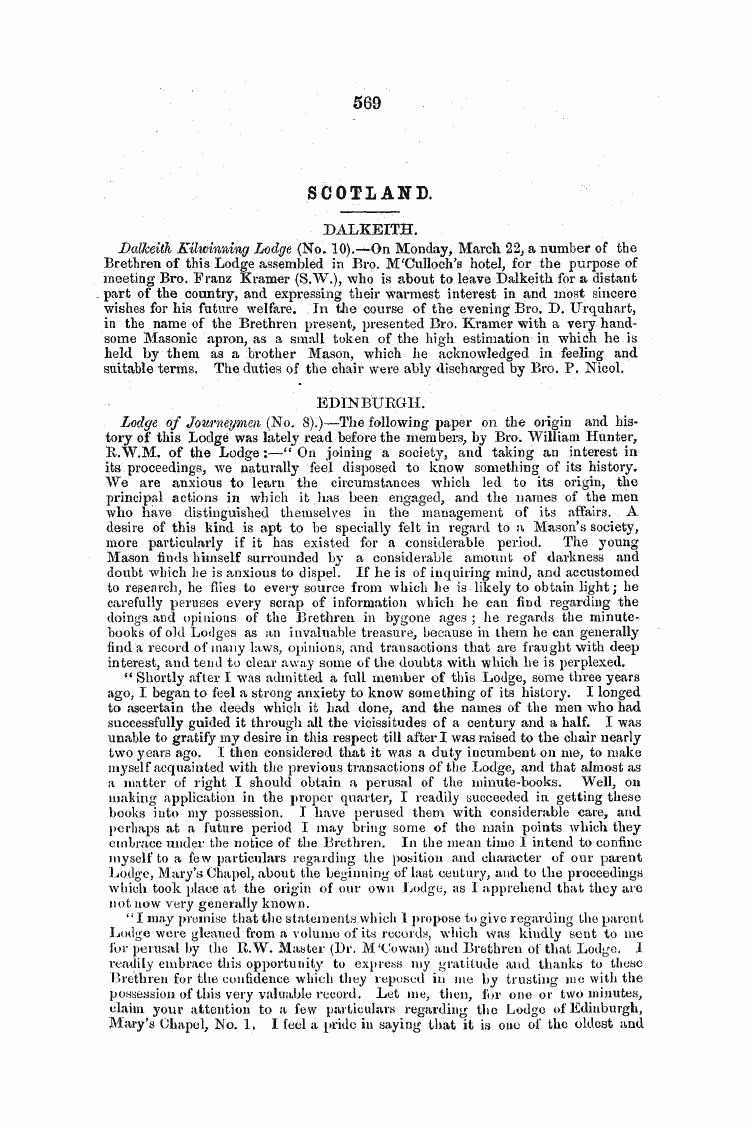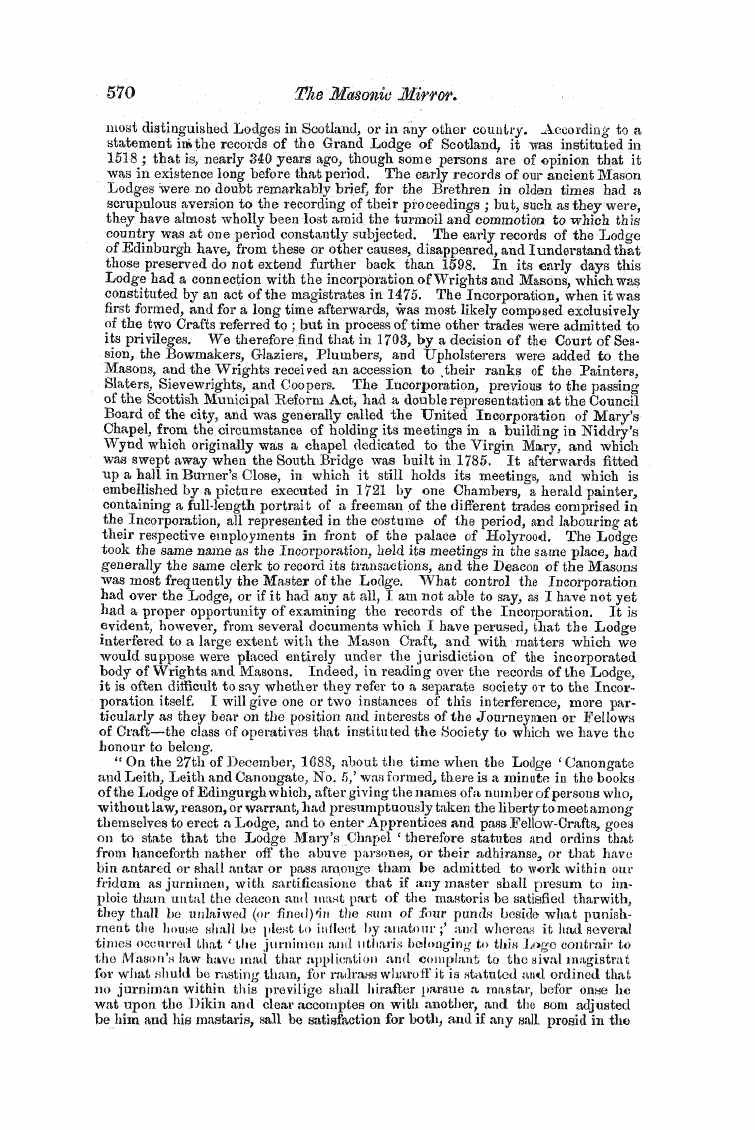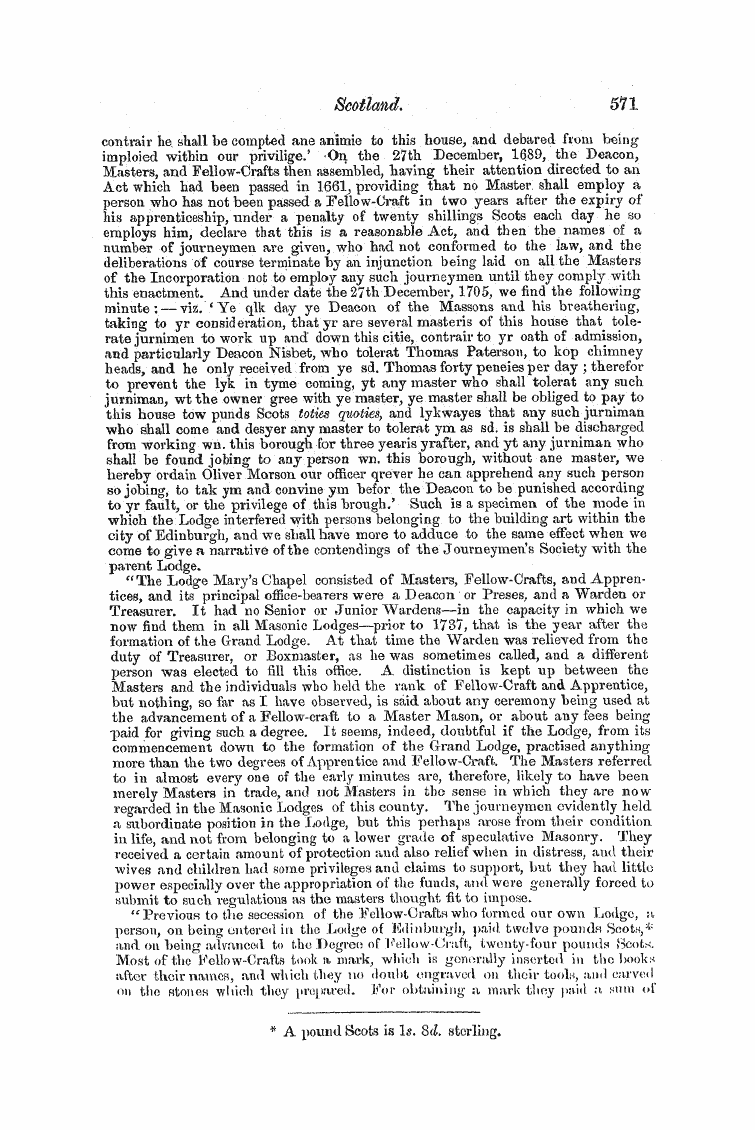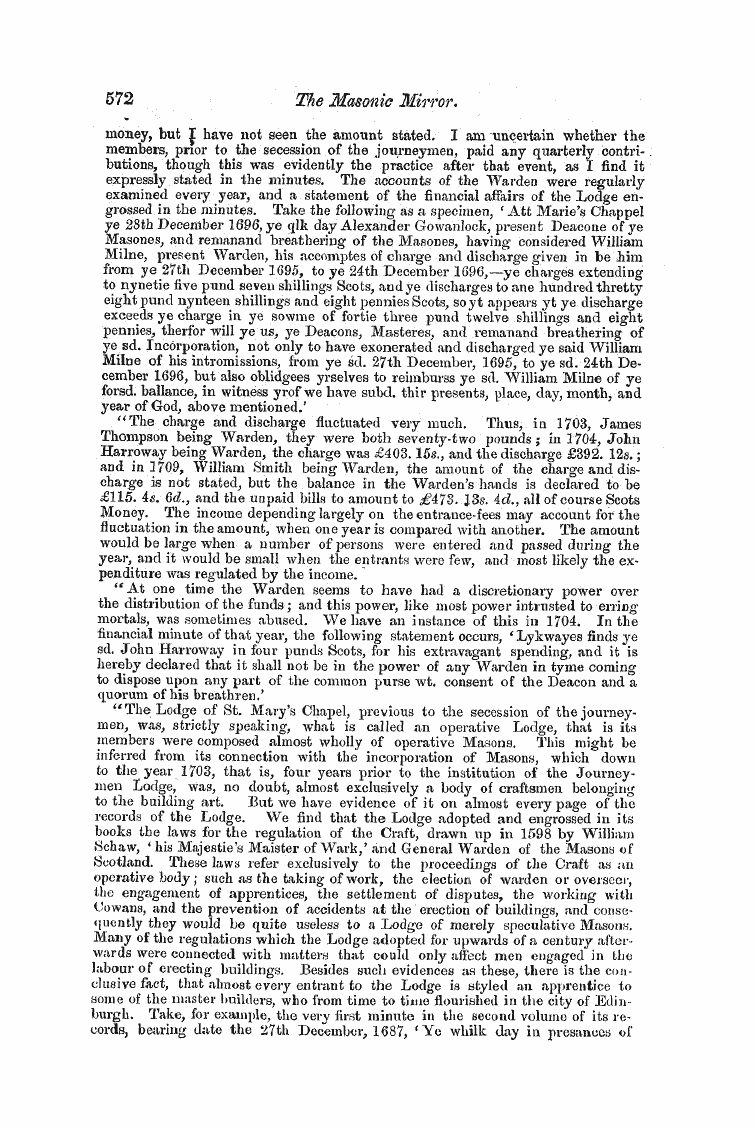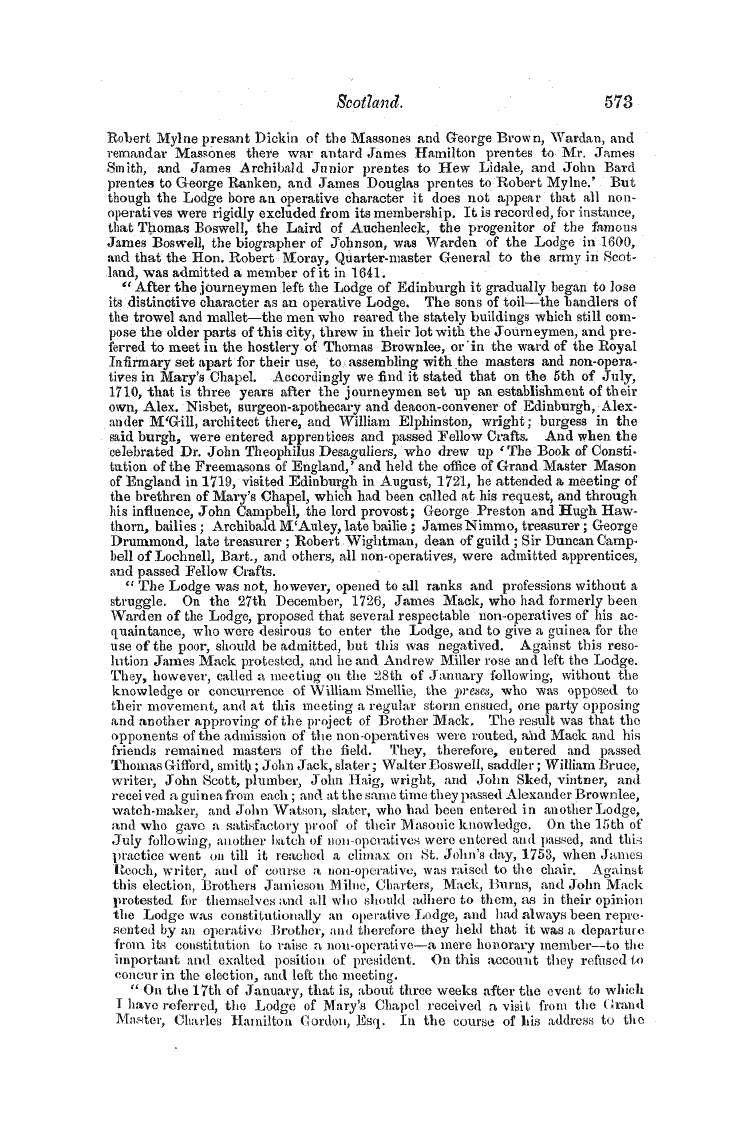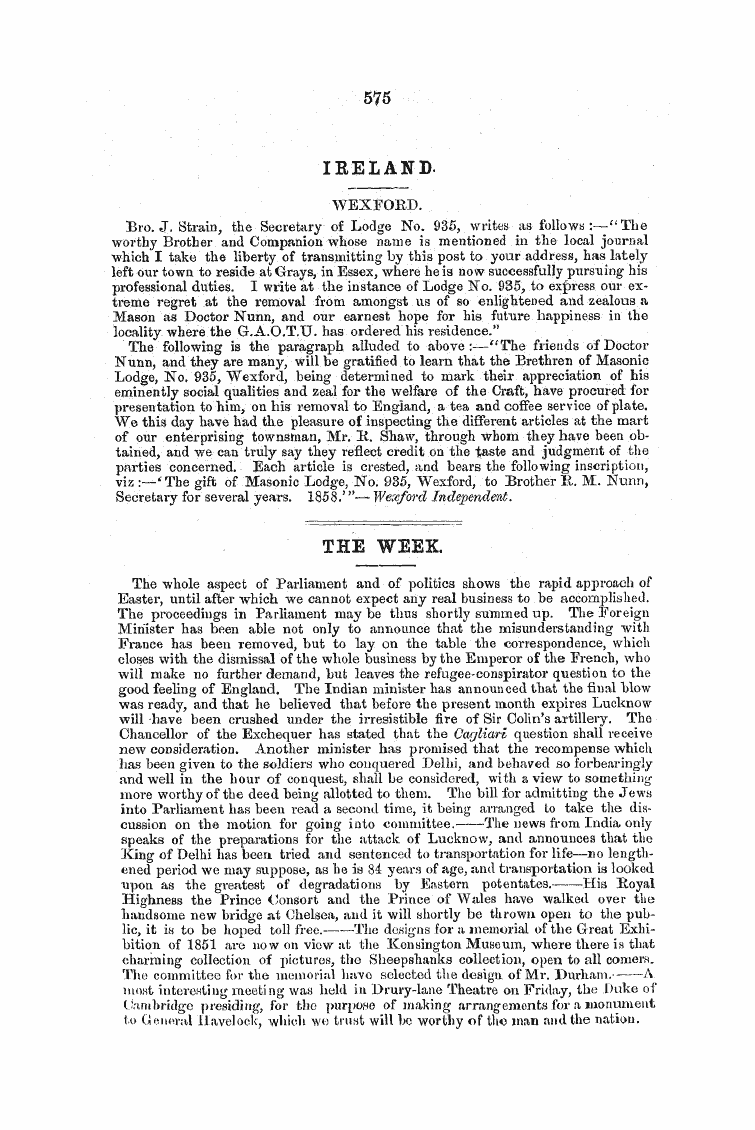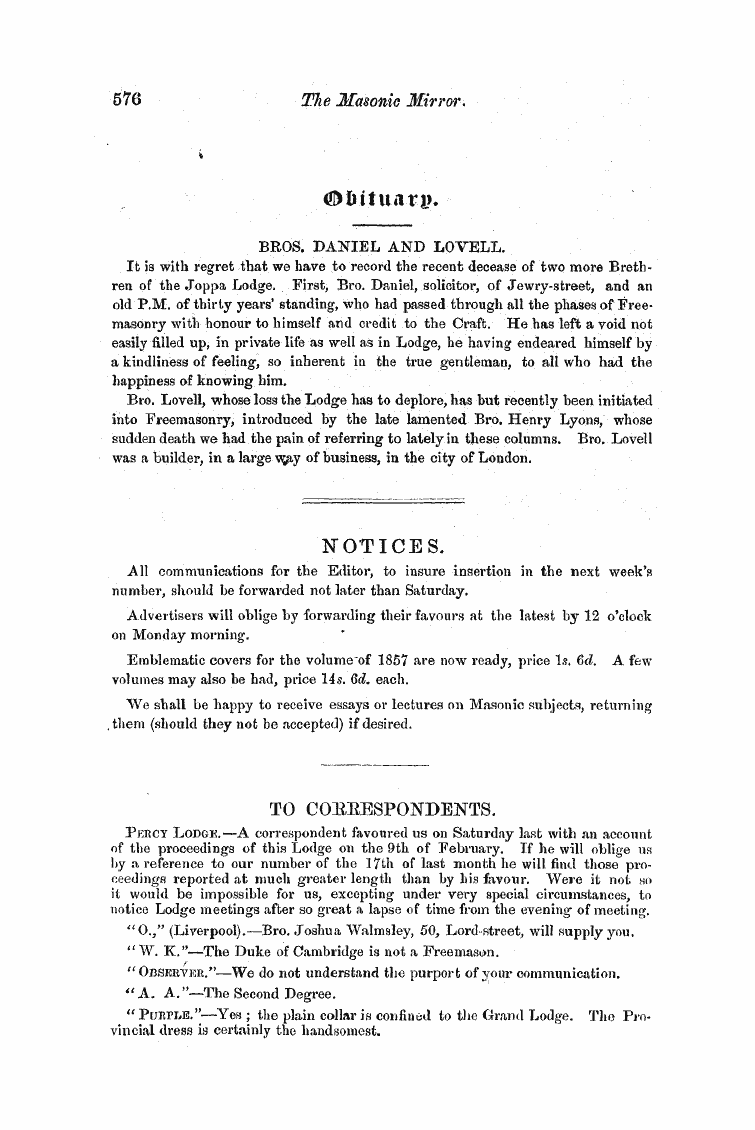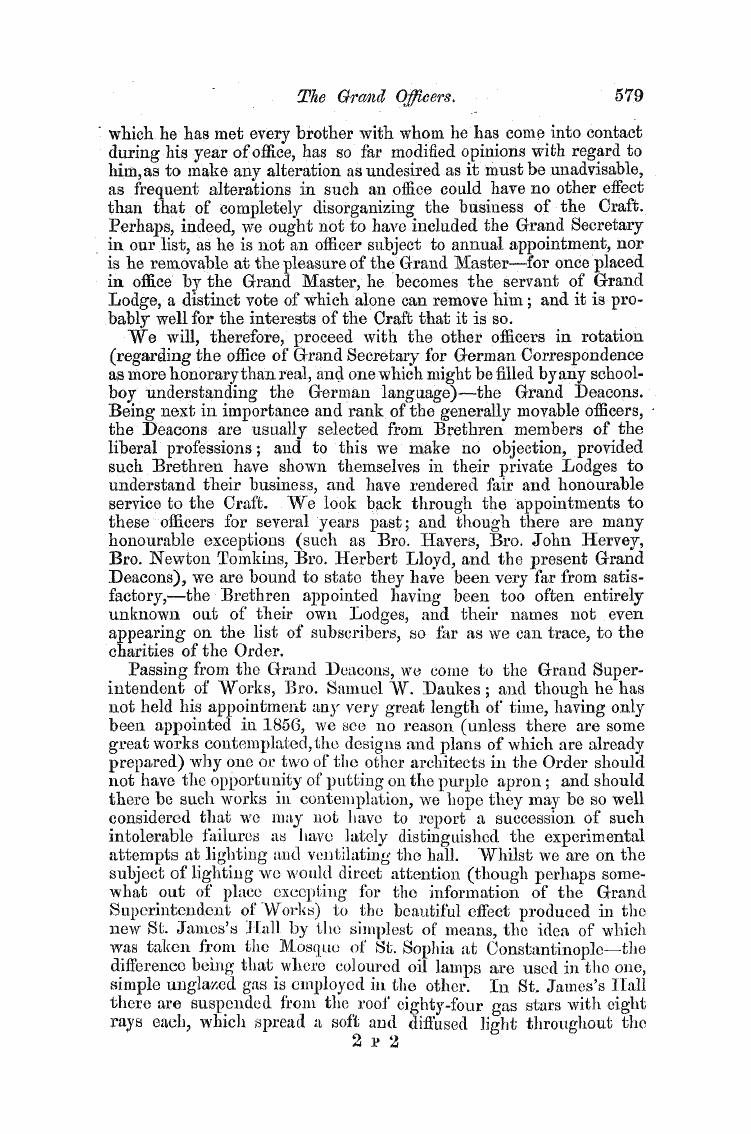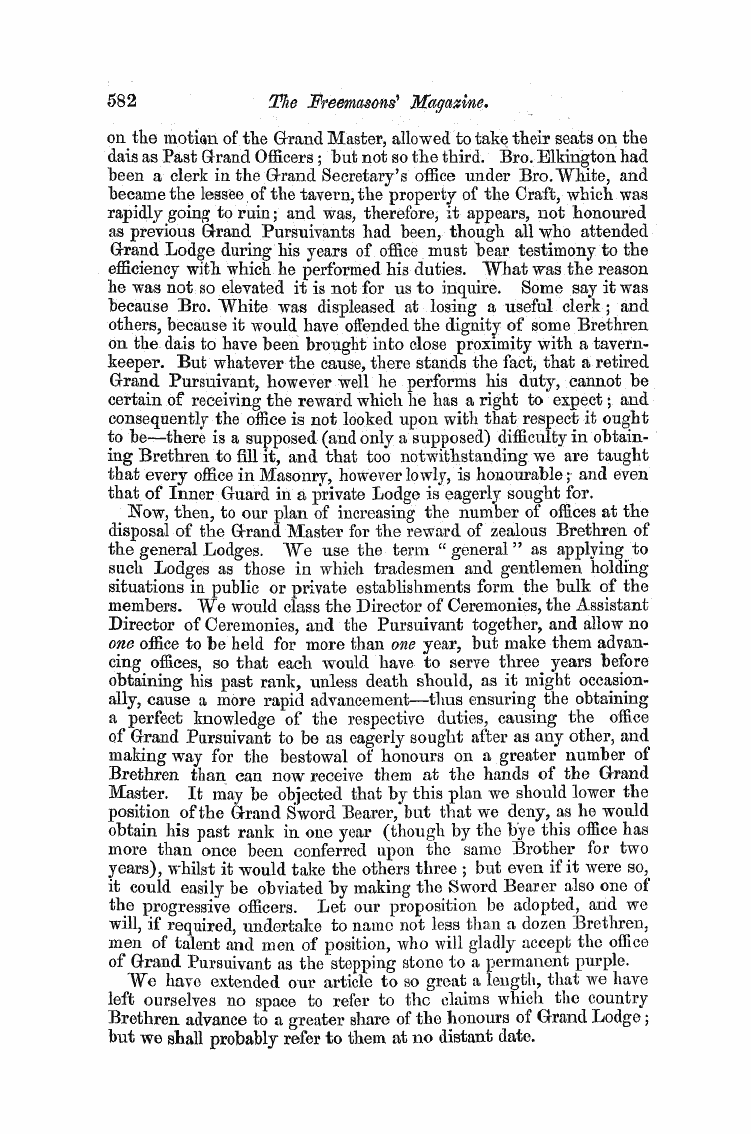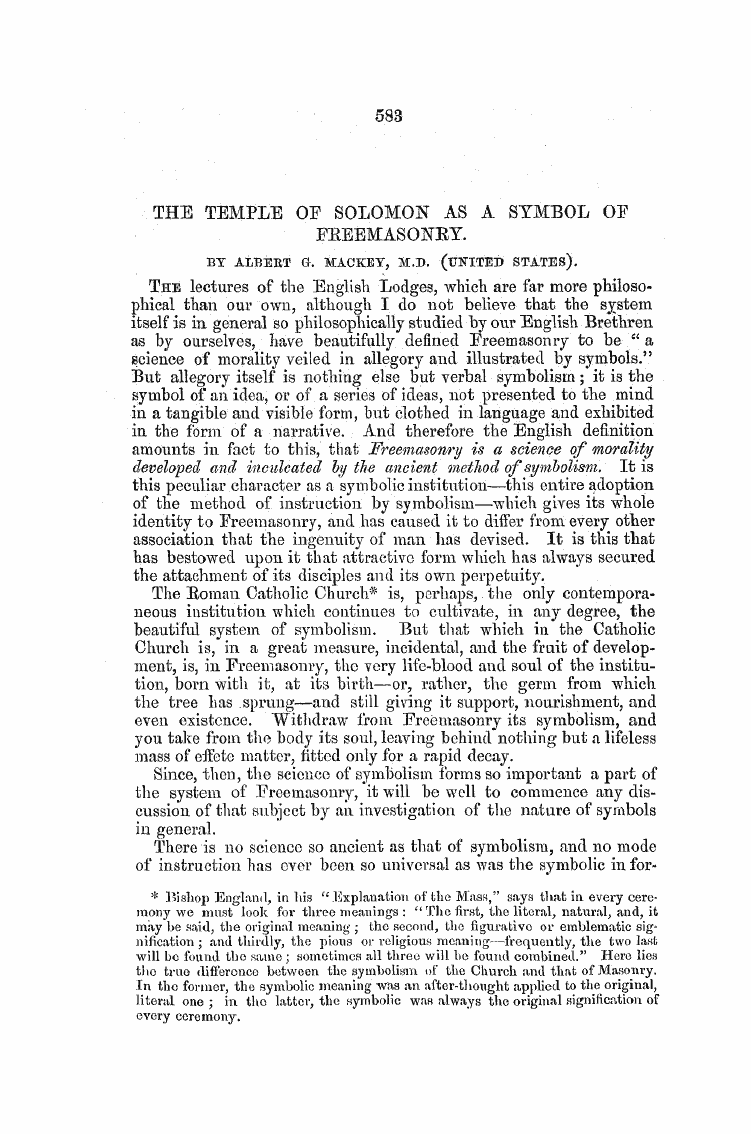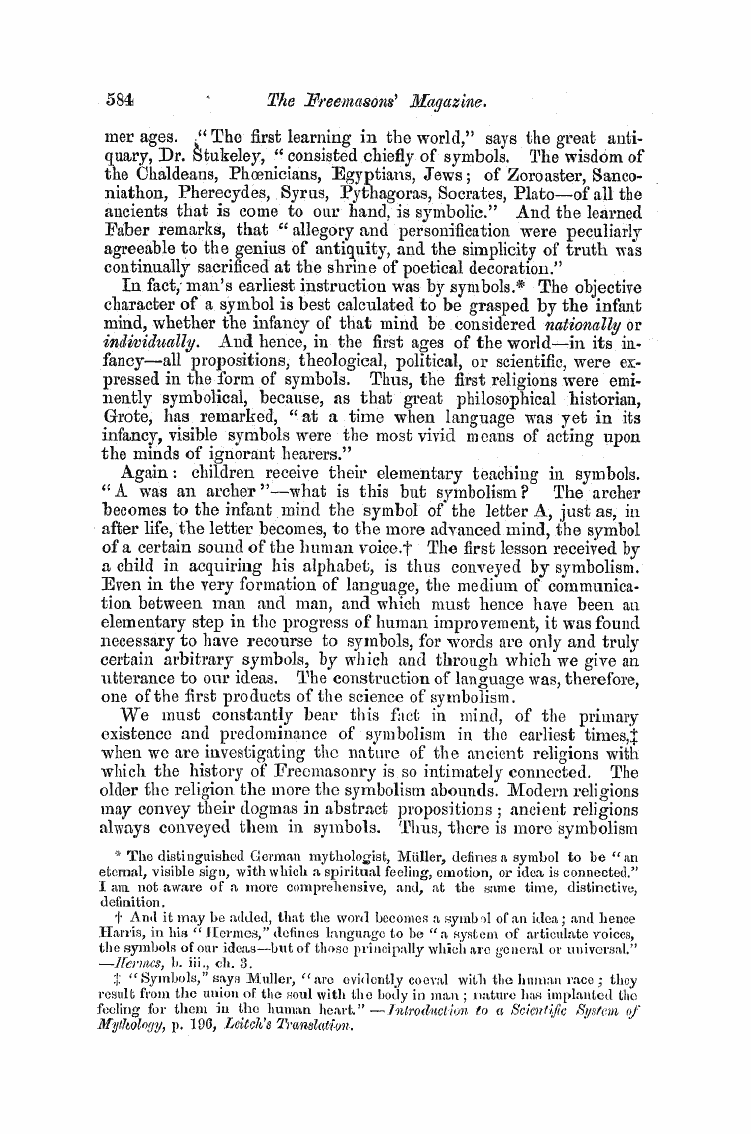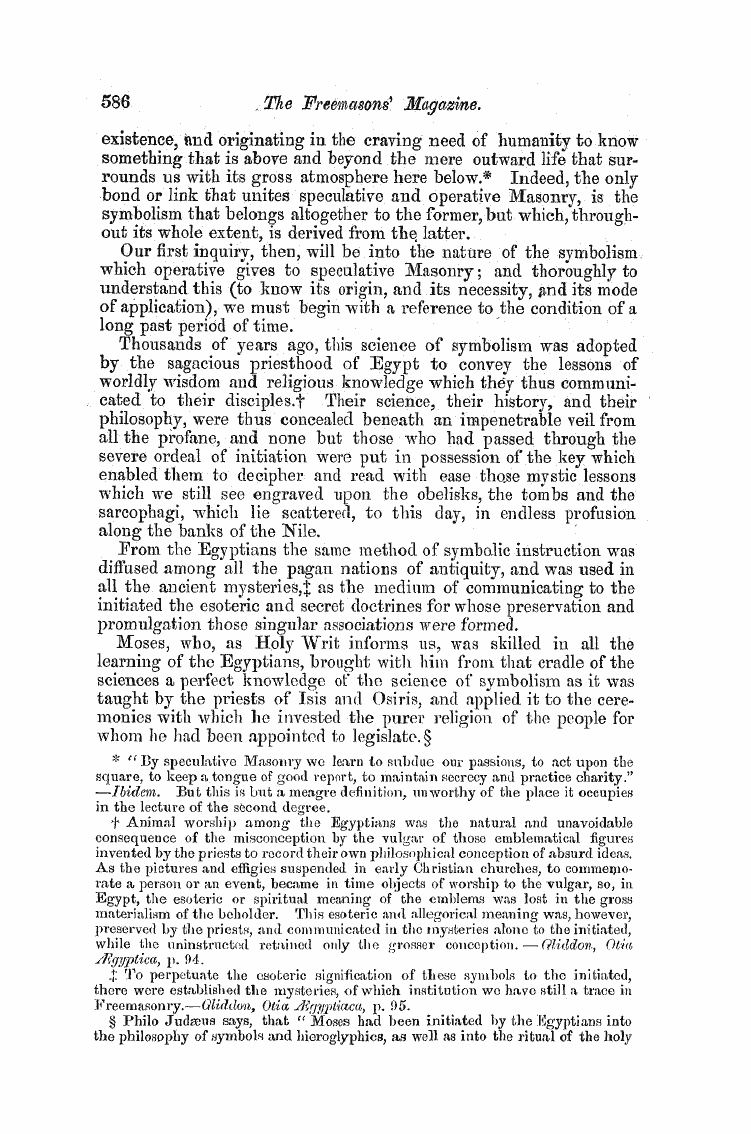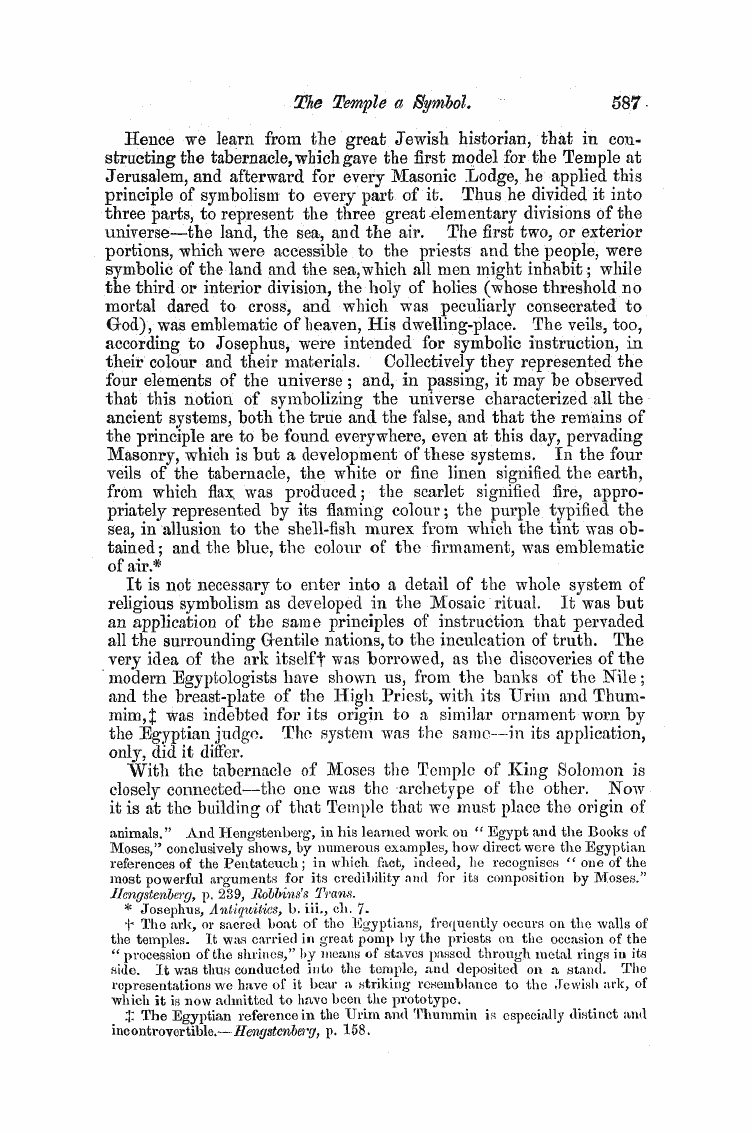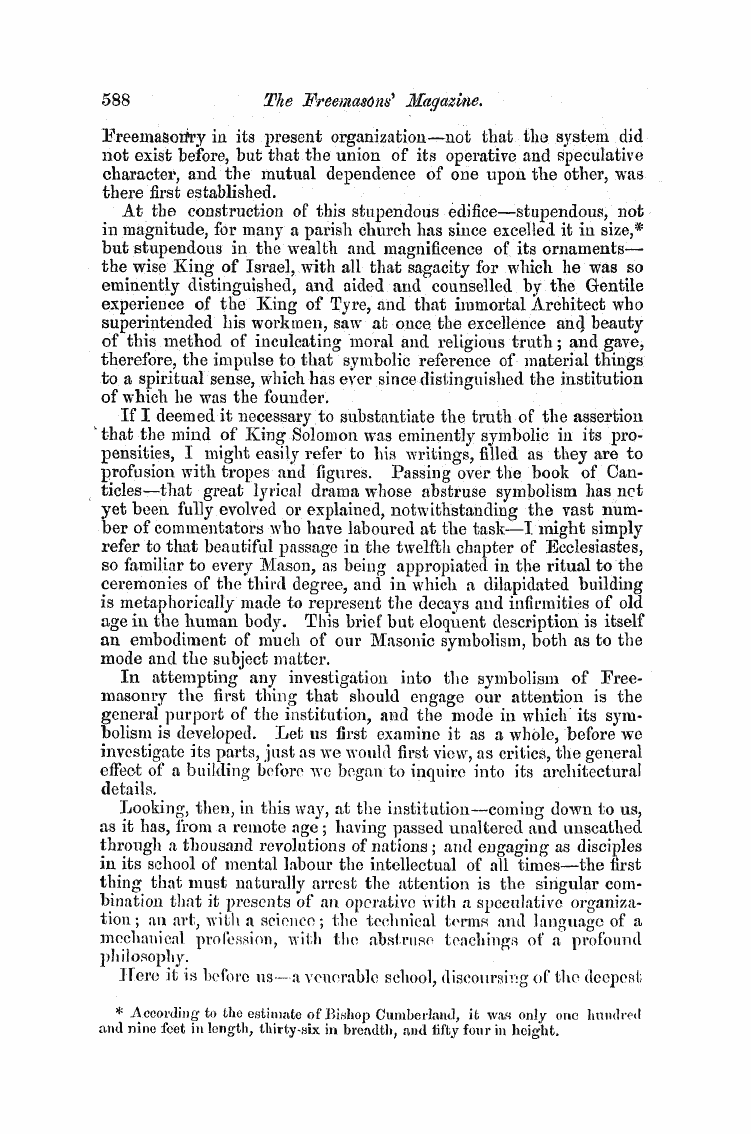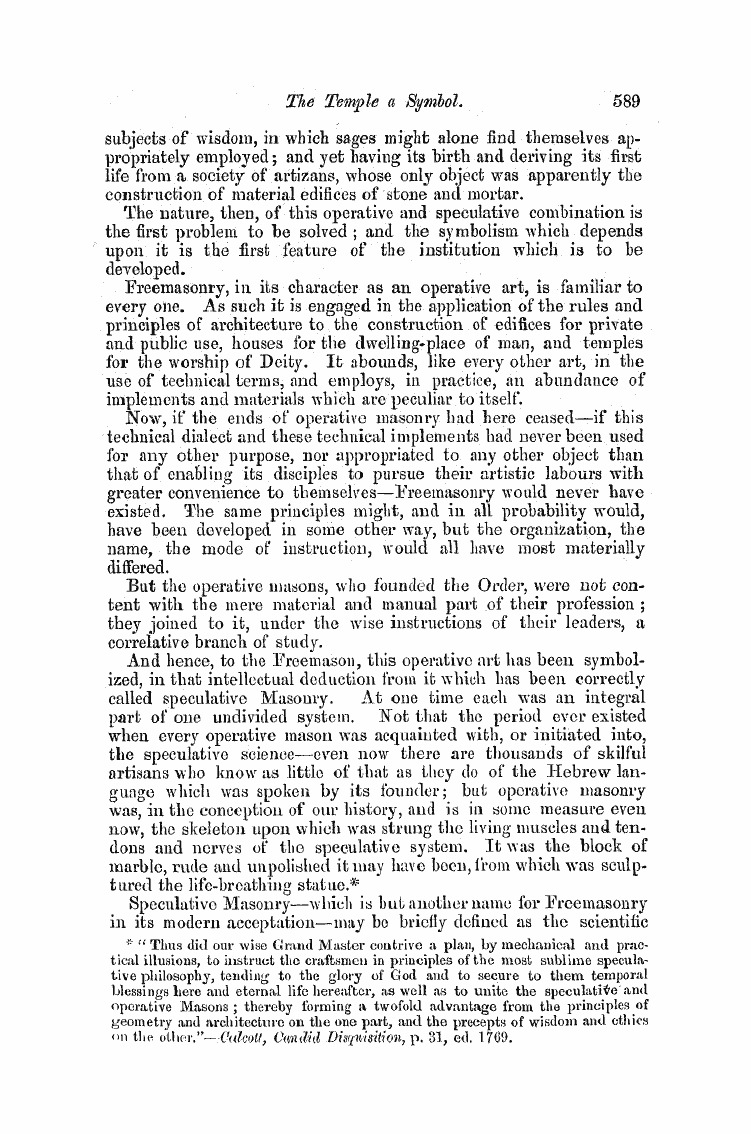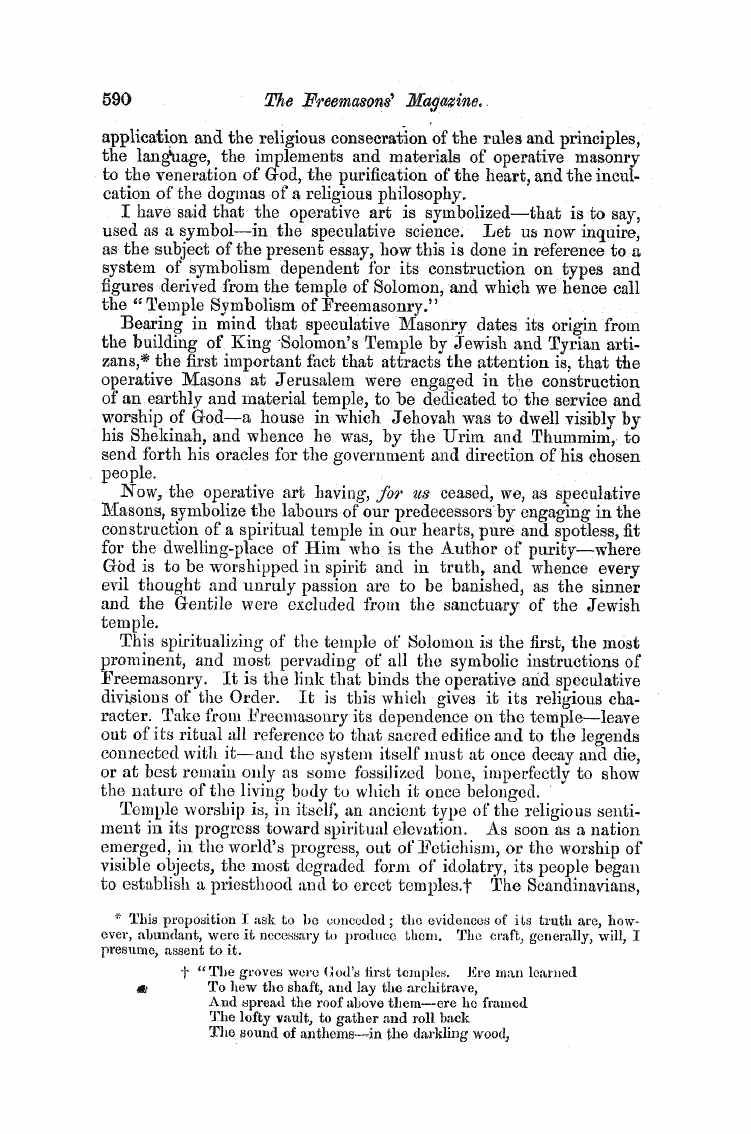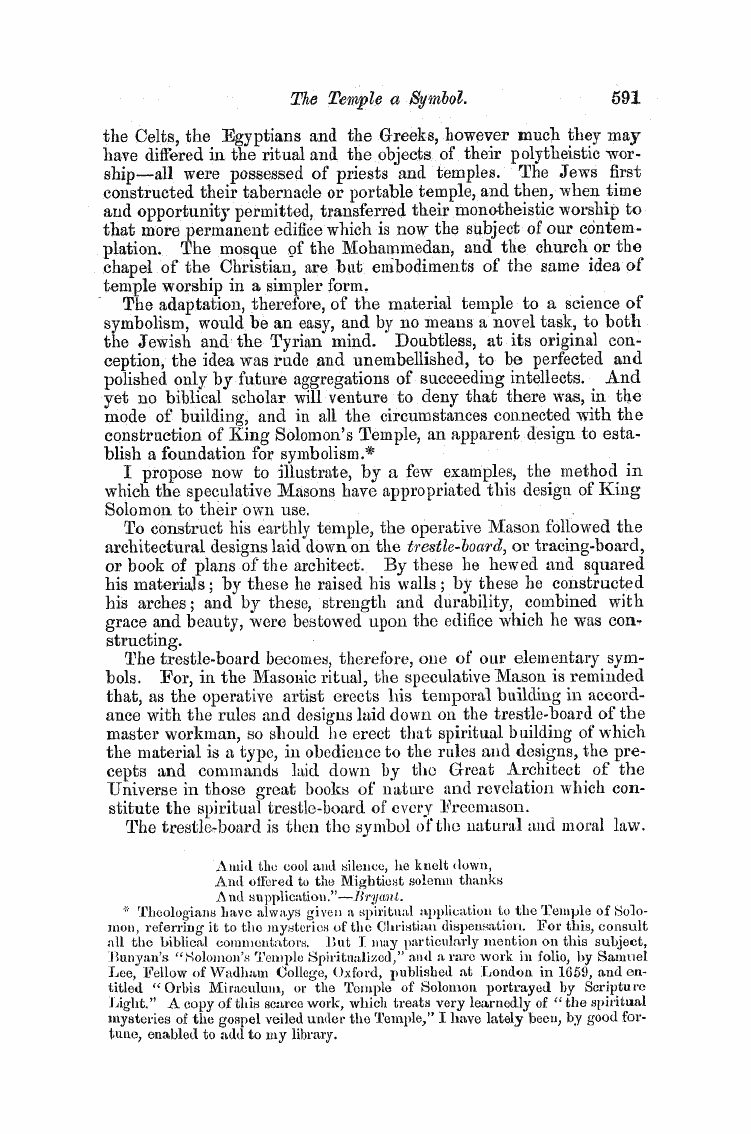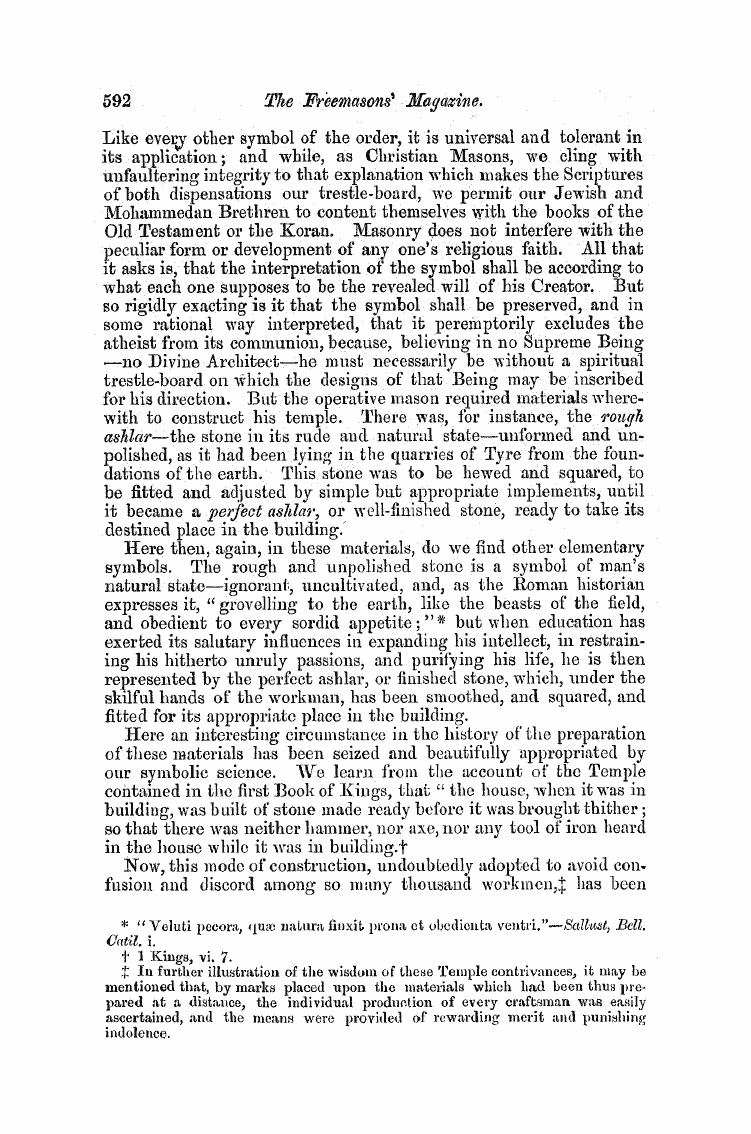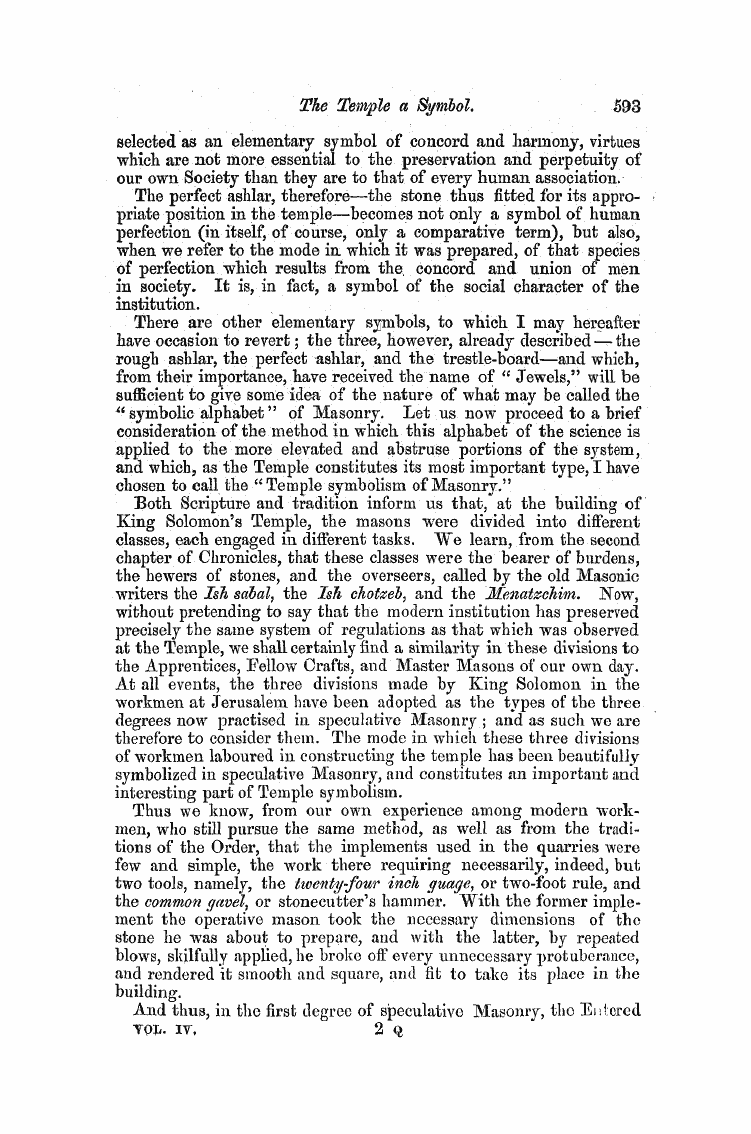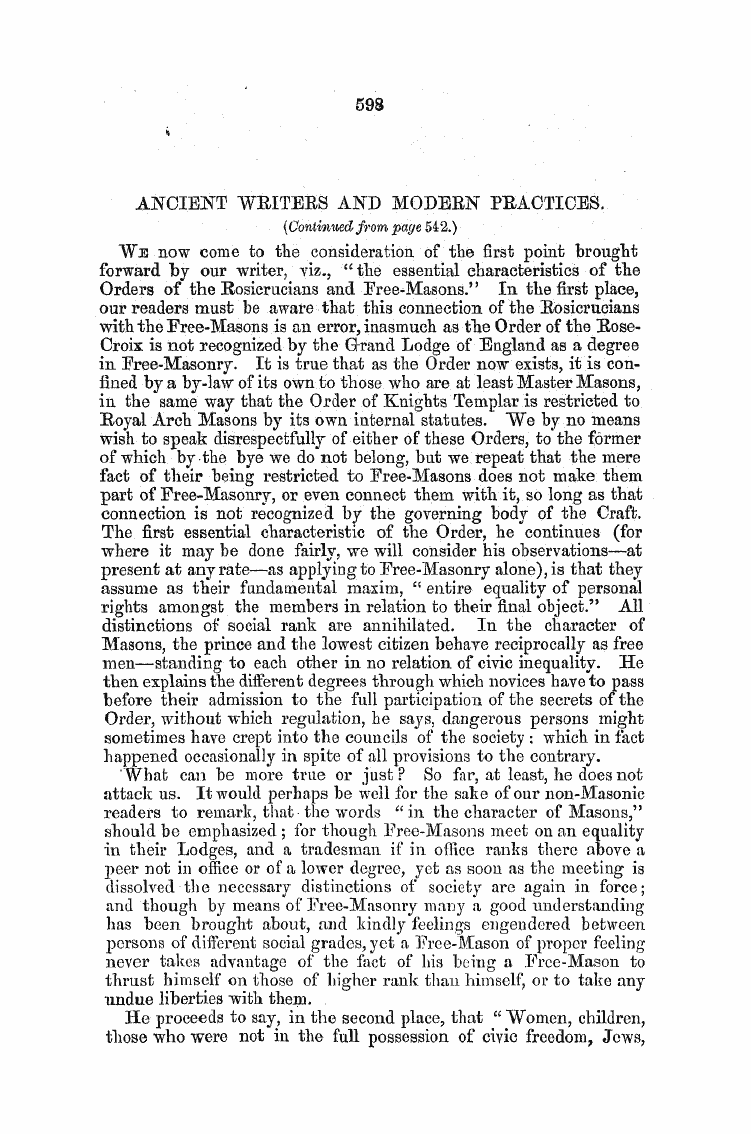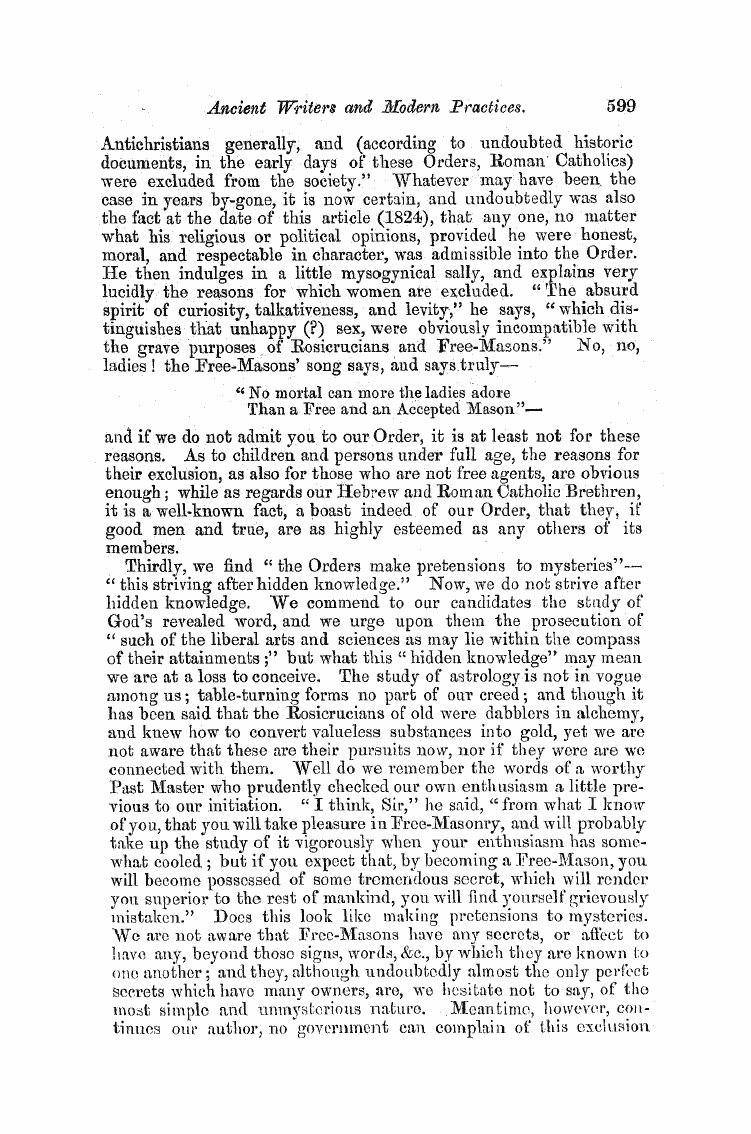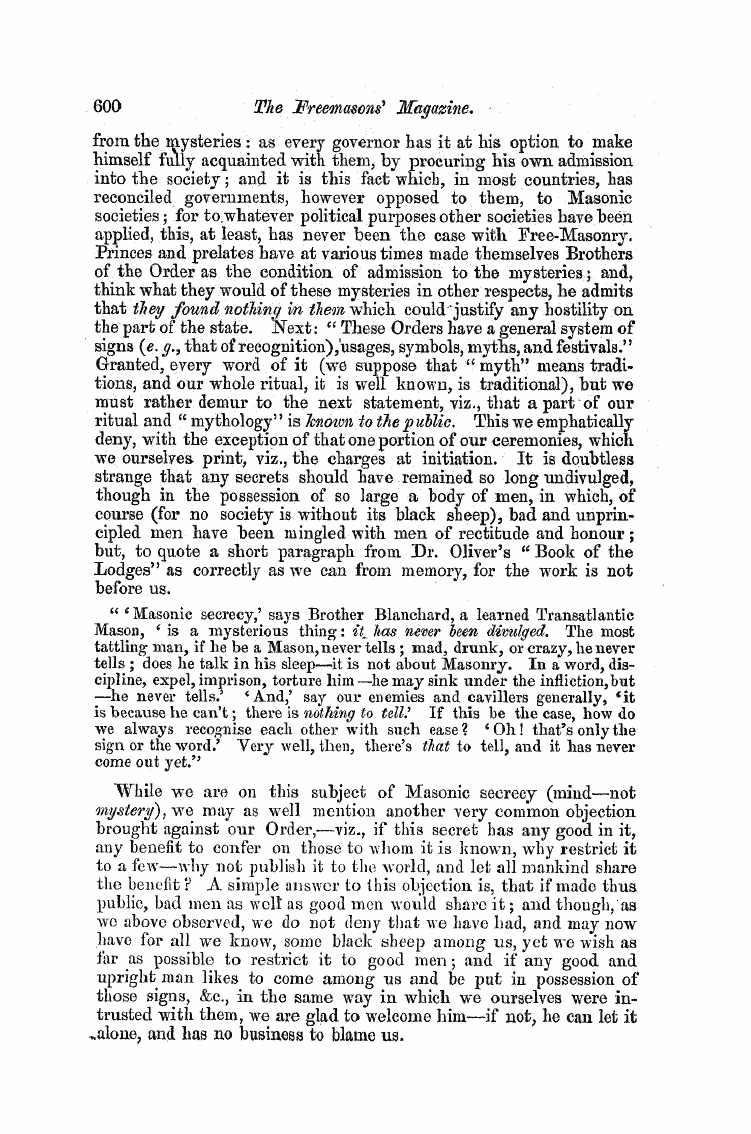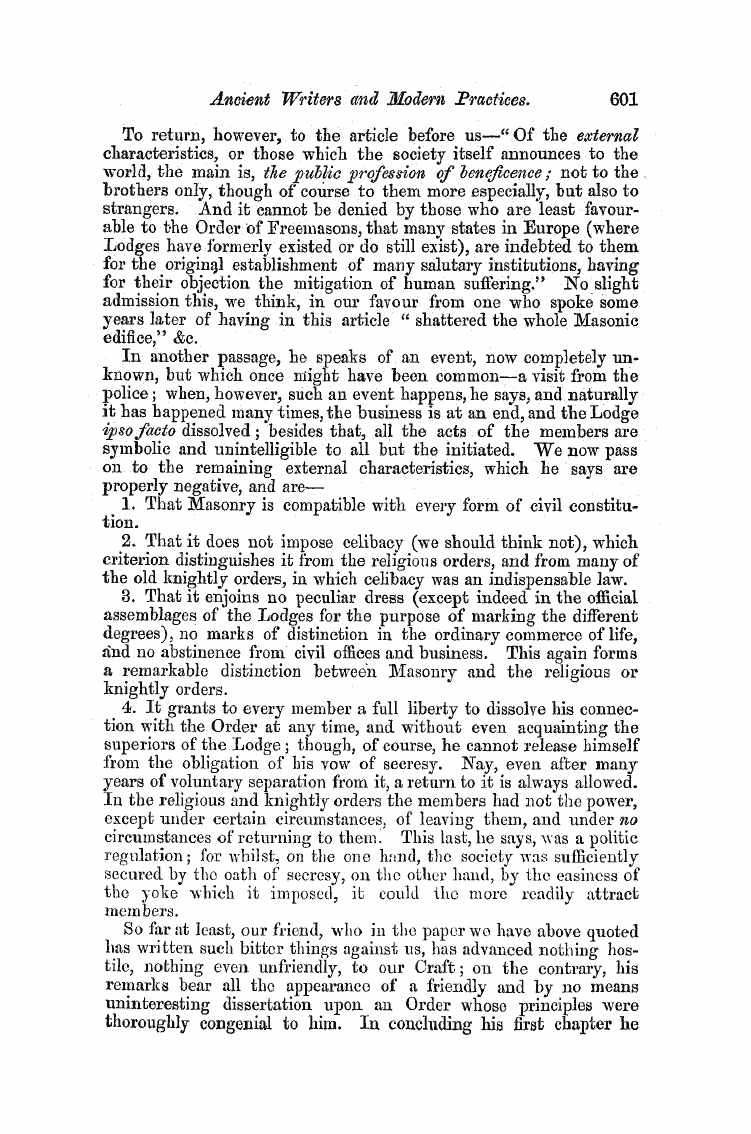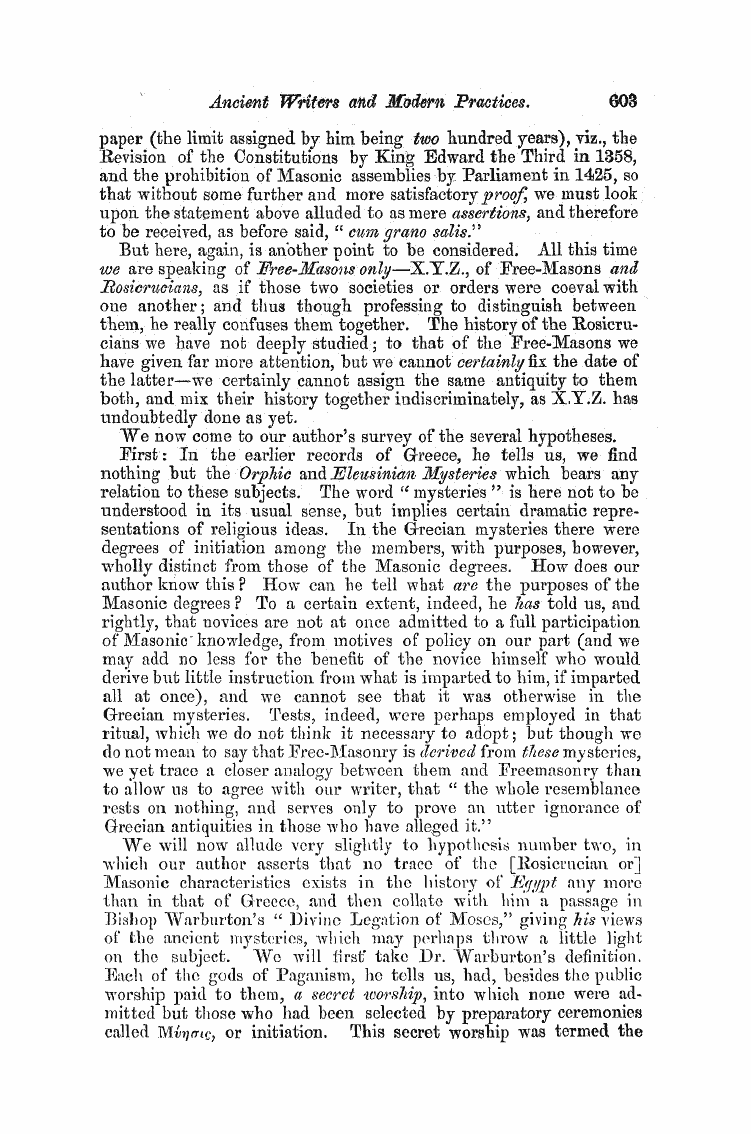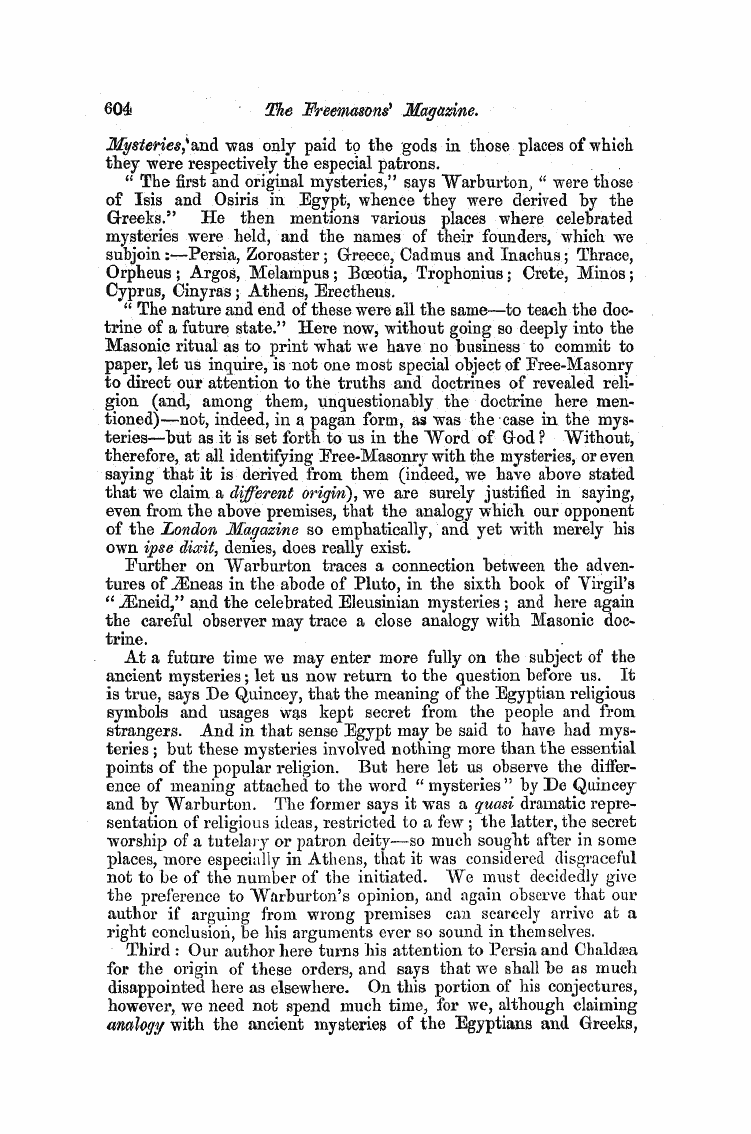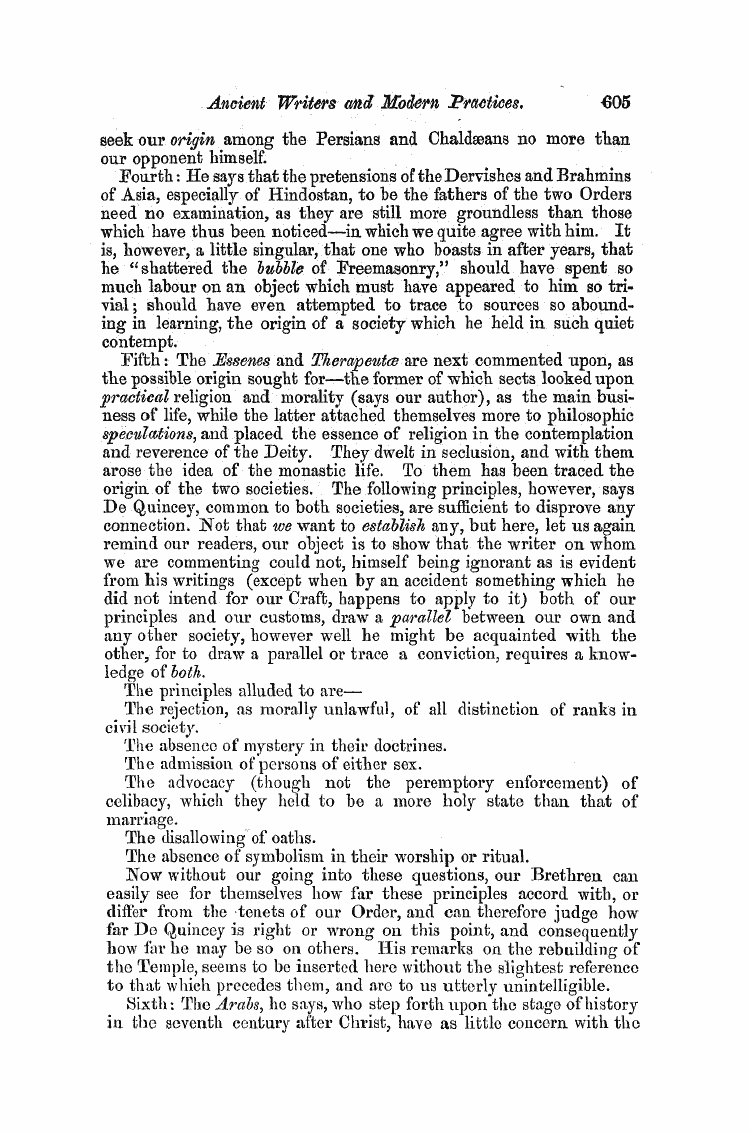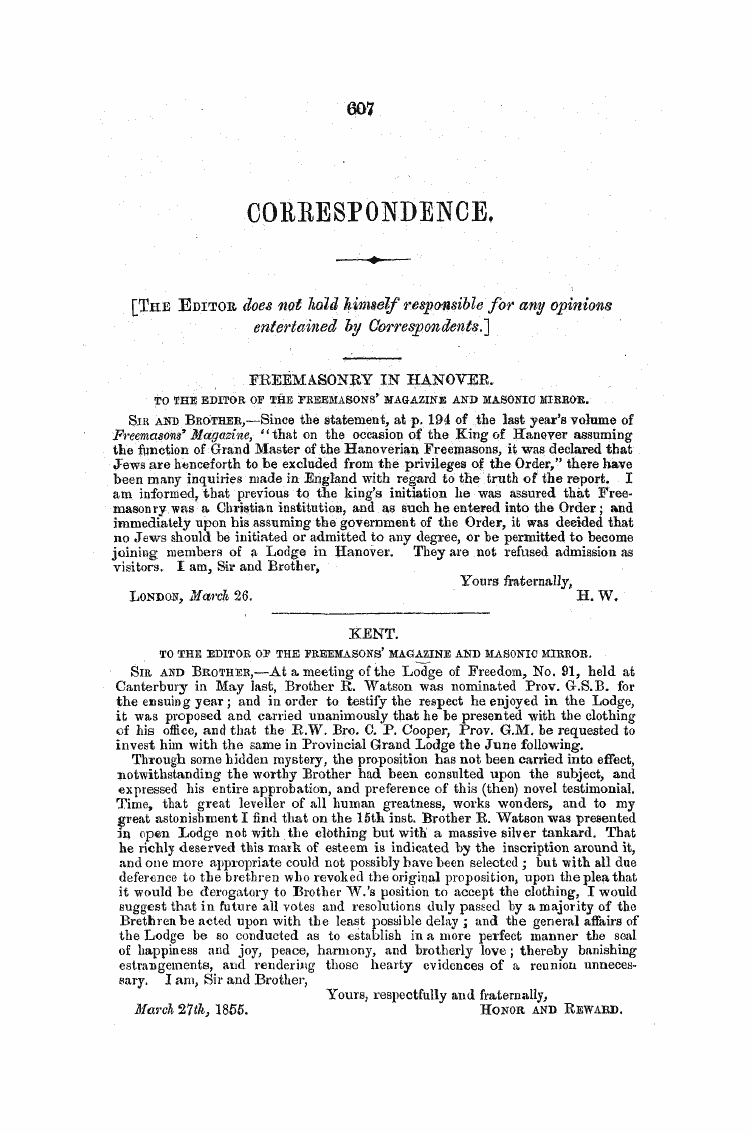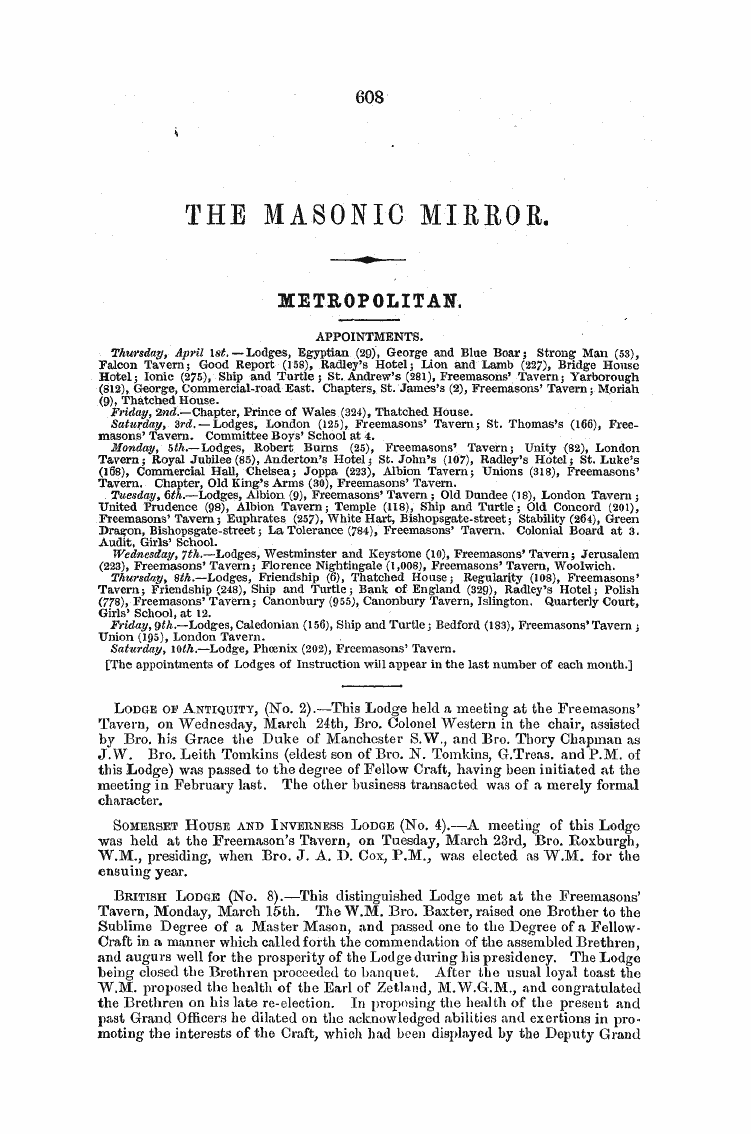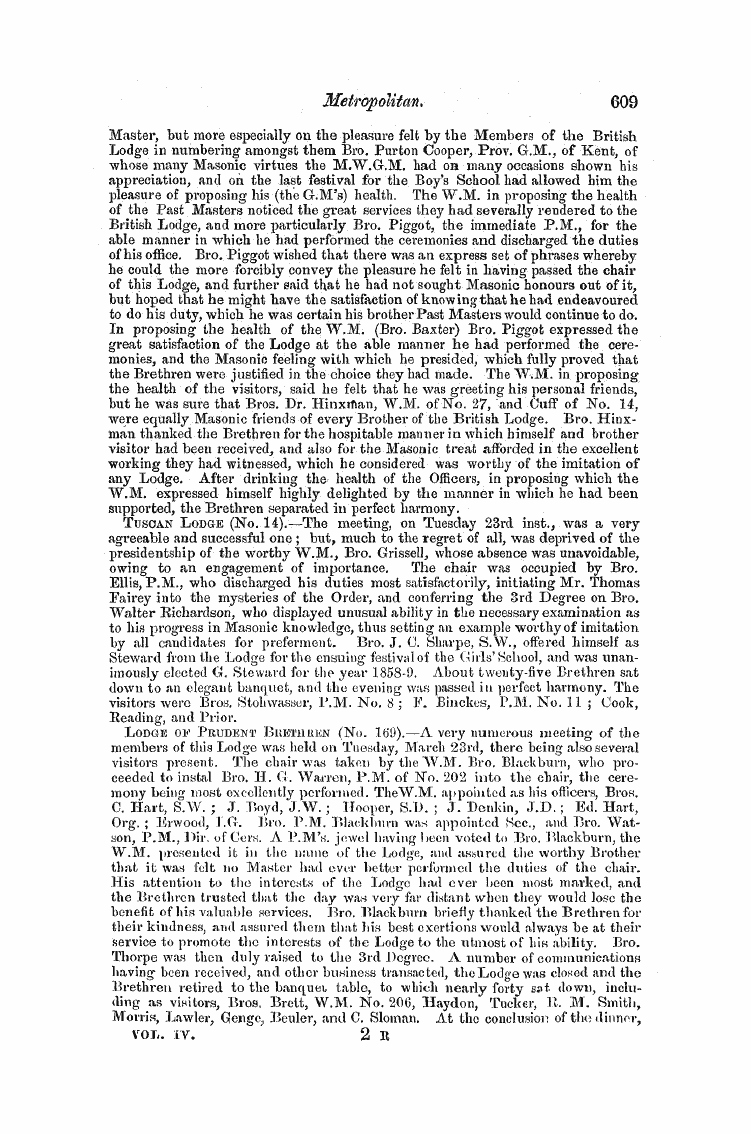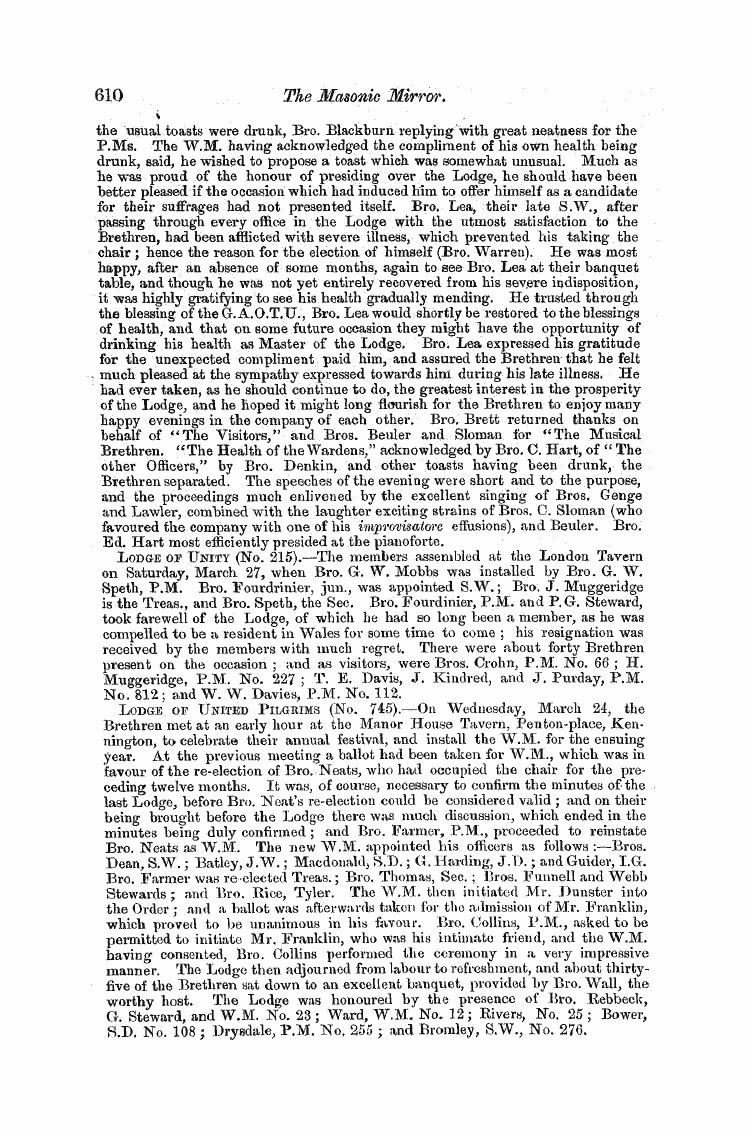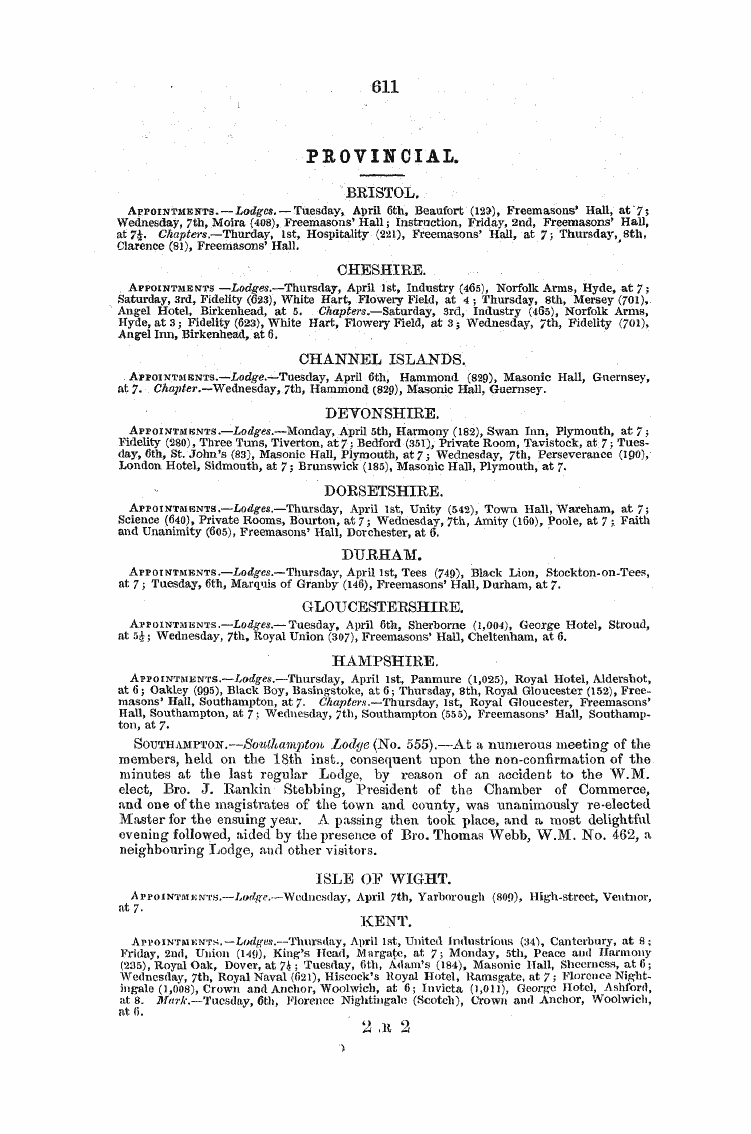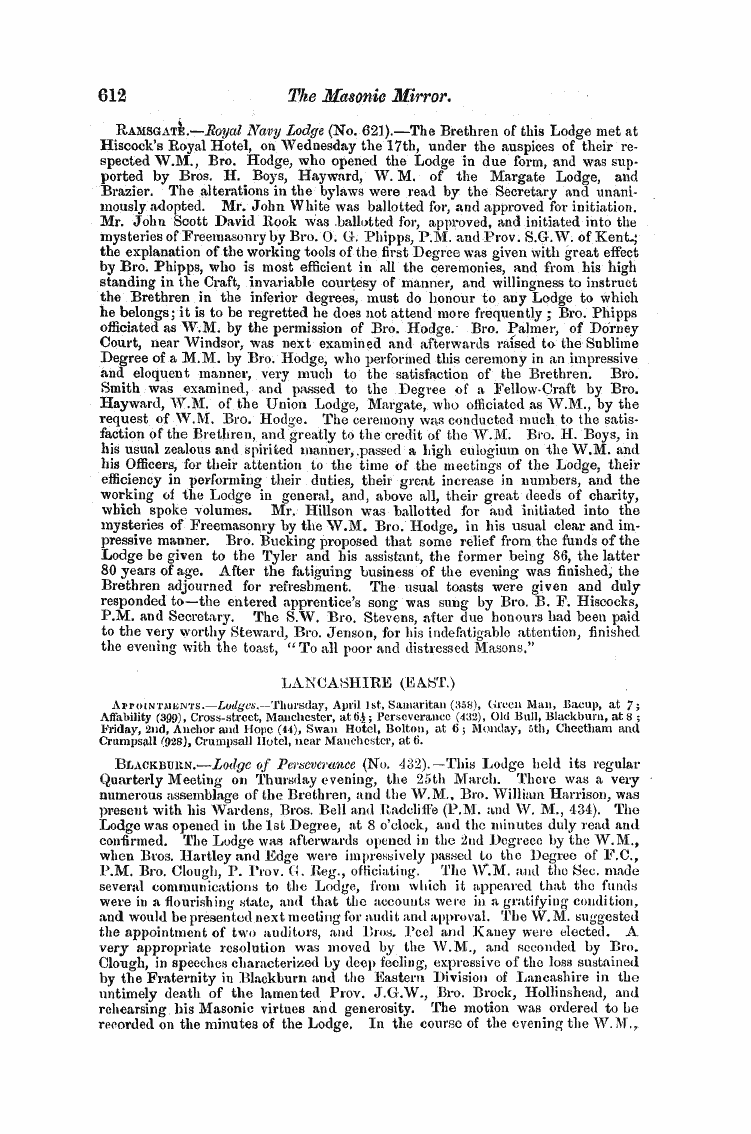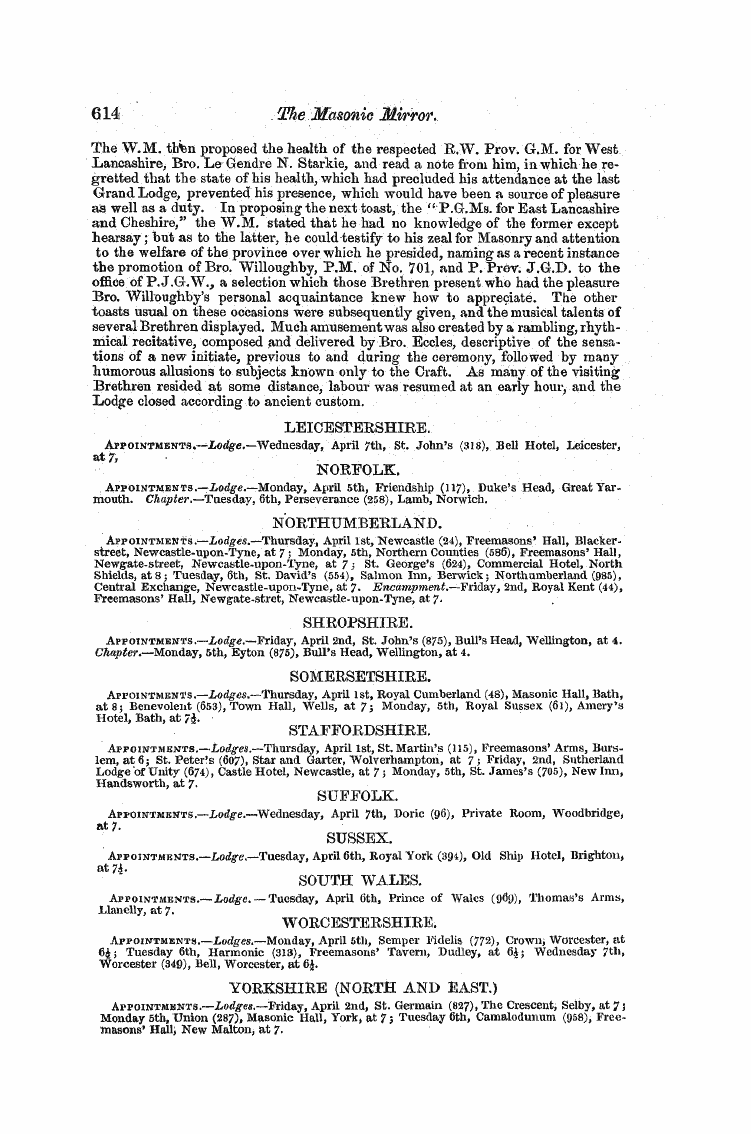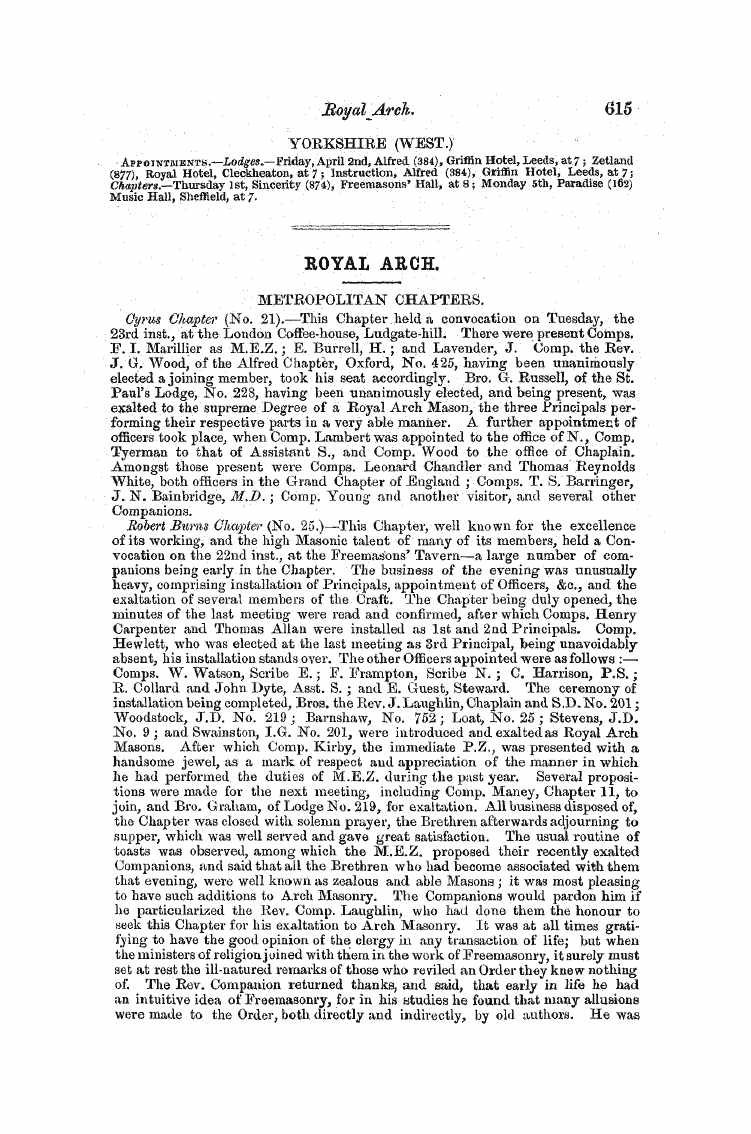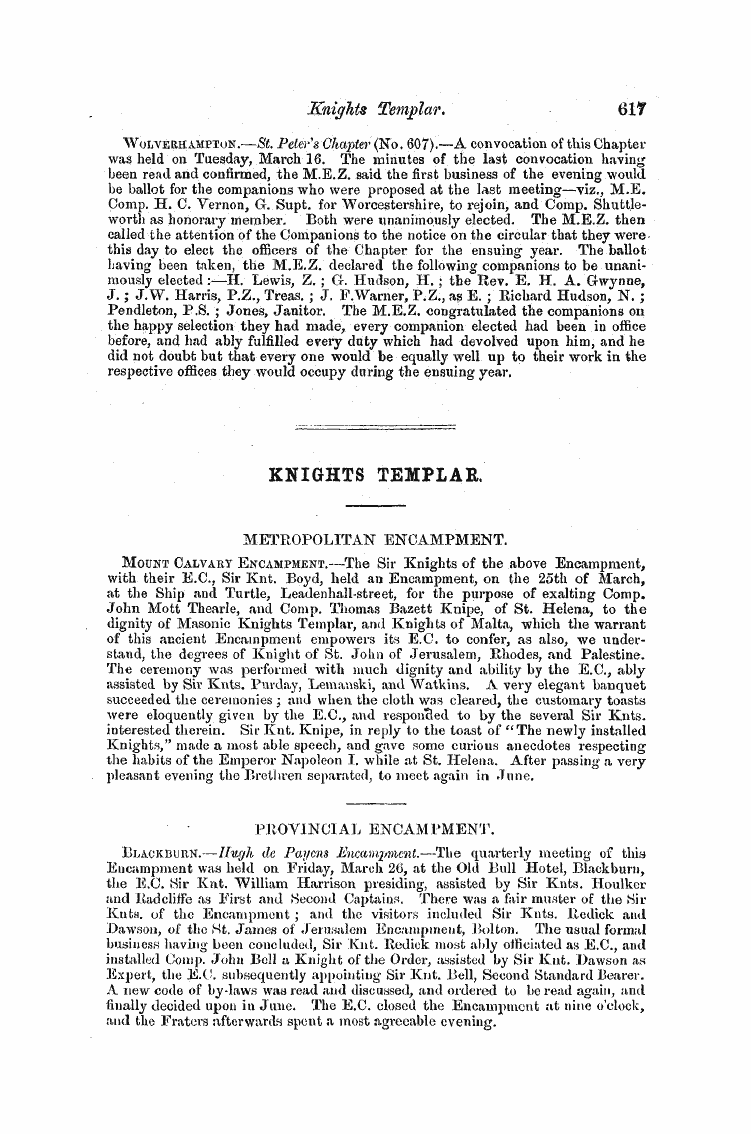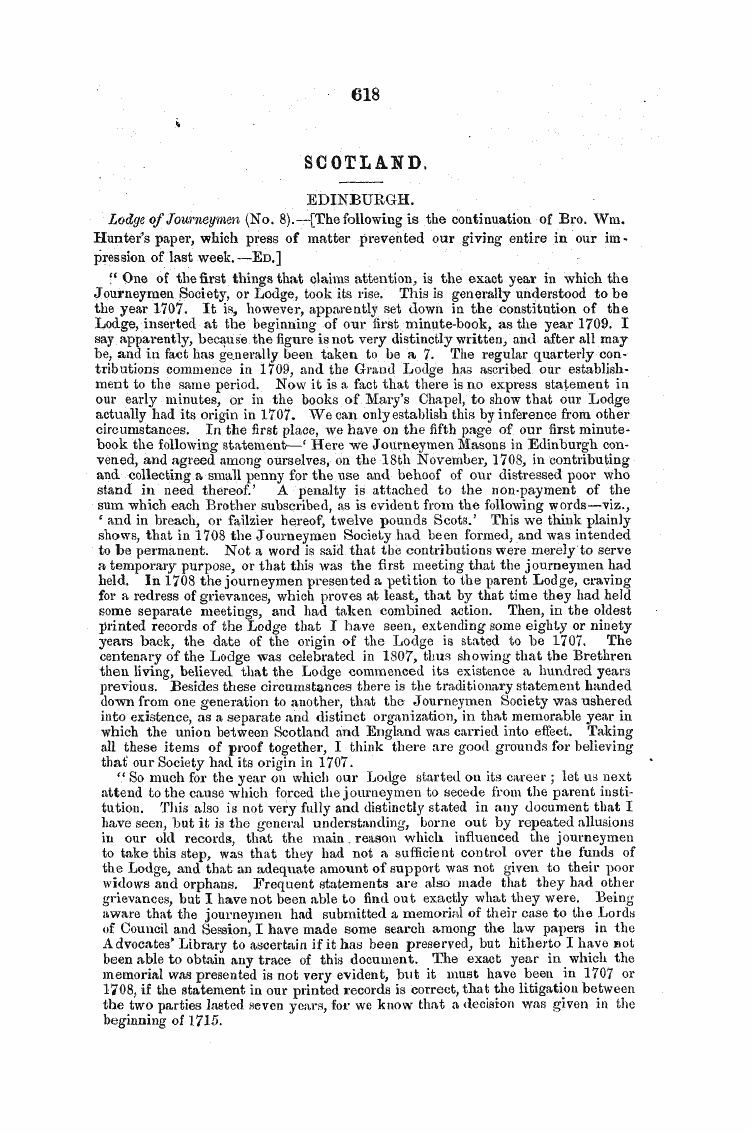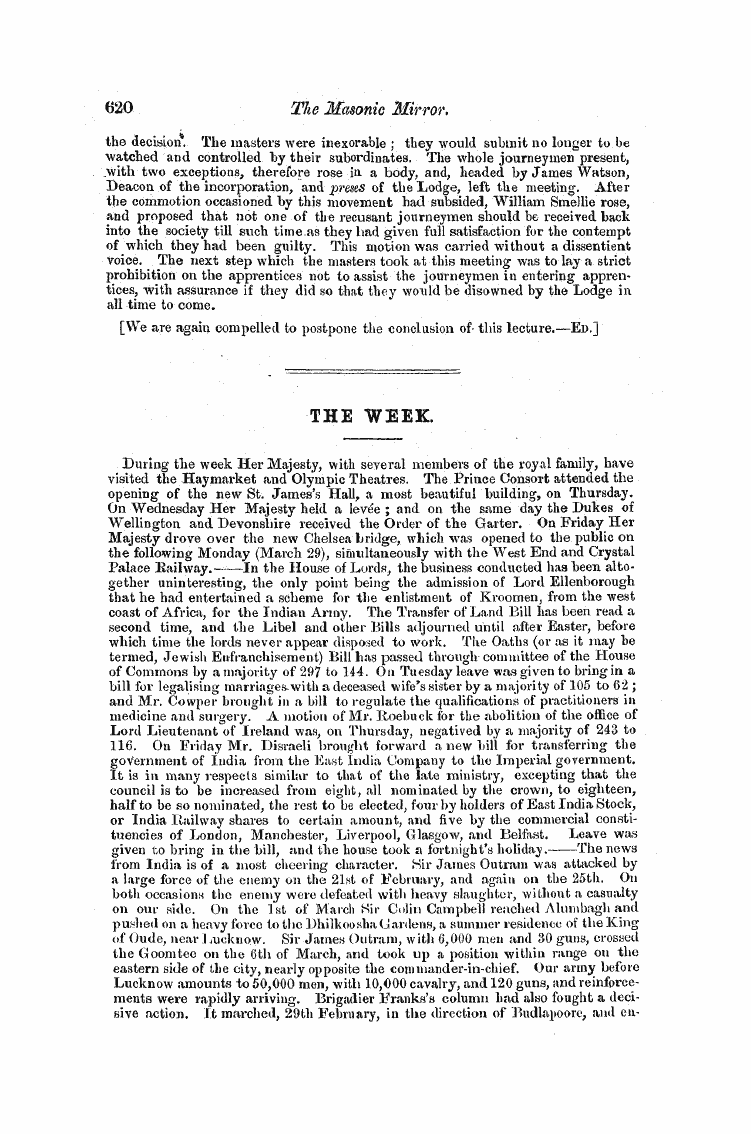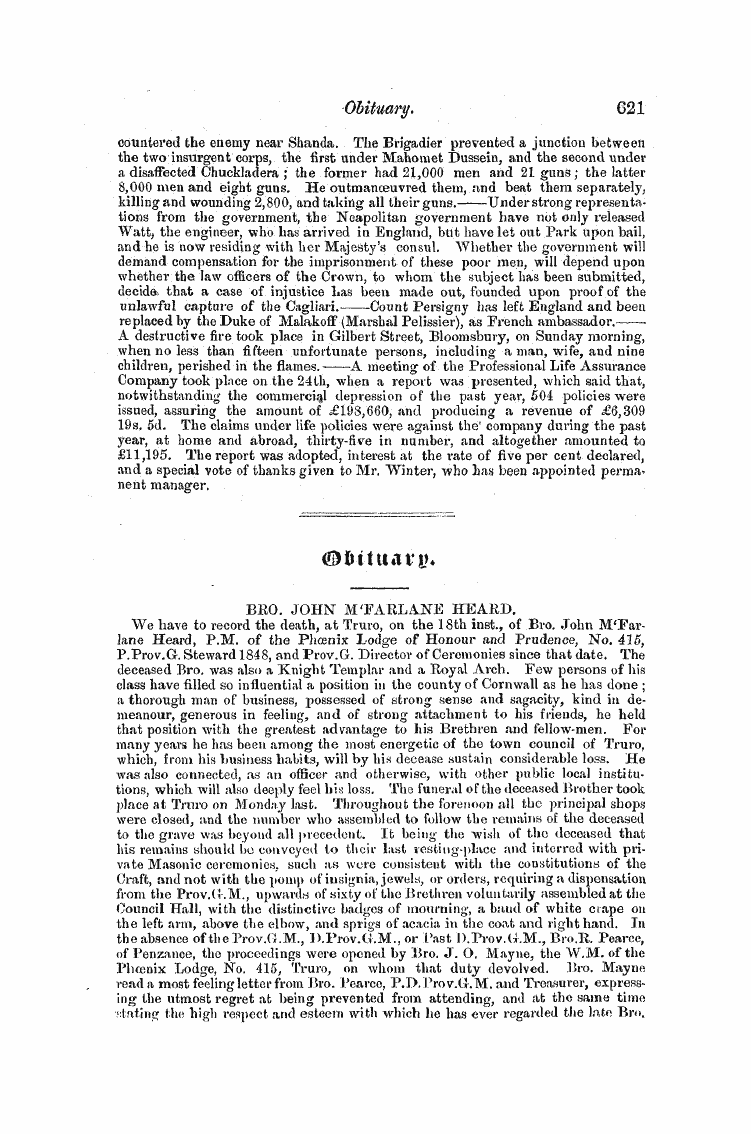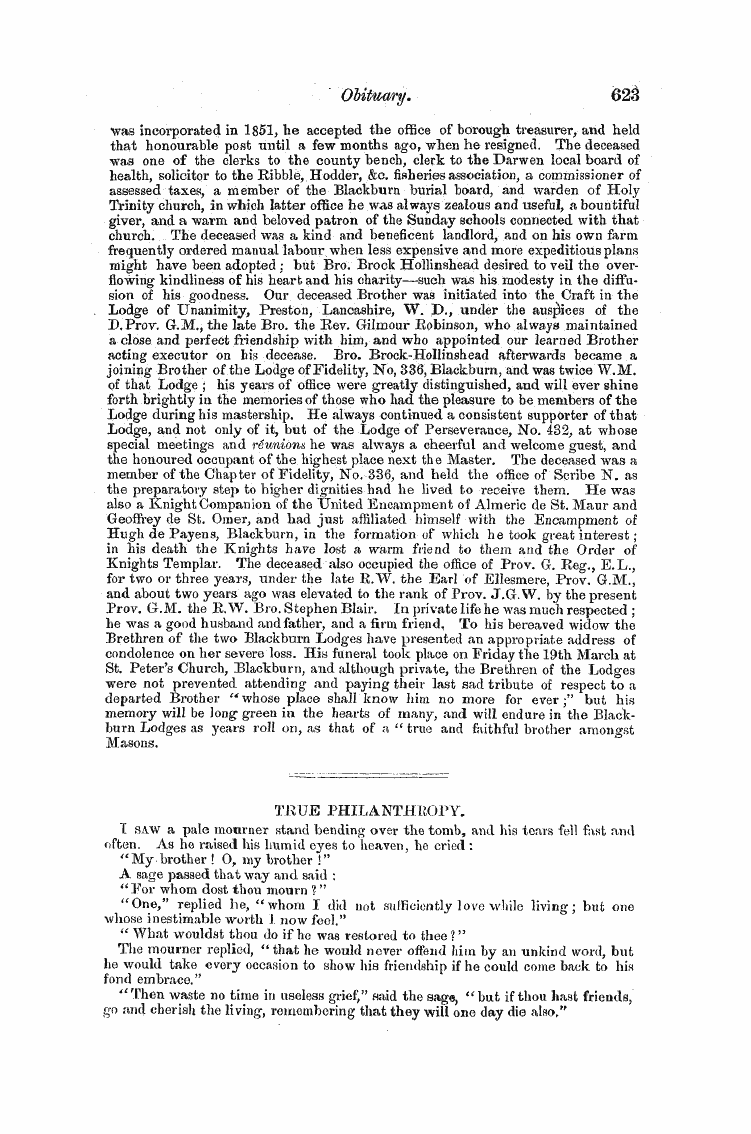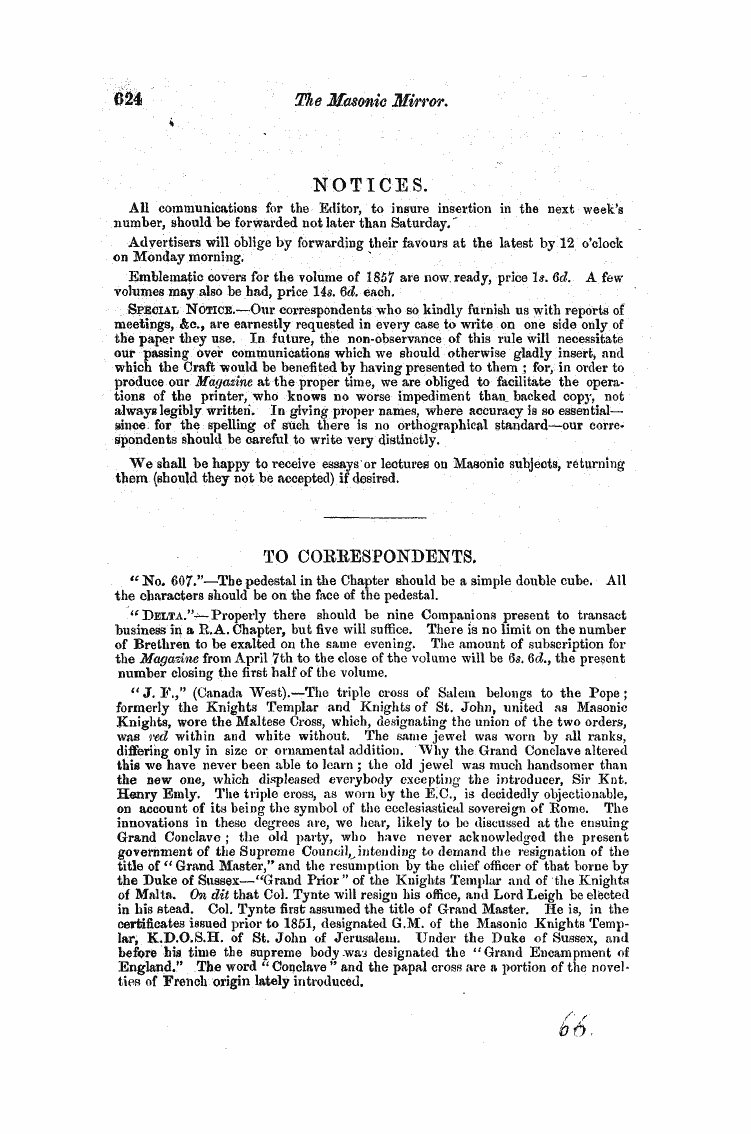-
Articles/Ads
Article THE TEMPLE OF SOLOMON AS A SYMBOL OF FKE... ← Page 10 of 15 →
Note: This text has been automatically extracted via Optical Character Recognition (OCR) software.
The Temple Of Solomon As A Symbol Of Fke...
Like every other symbol--. of the order , it is universal and tolerant in its application ; and while , as Christian Masons , we cling with unfaultering integrity to that explanation which makes the Scriptures of both dispensations our trestle-board , we permit our Jewish and Mohammedan Brethren to content themselves with the books of the
Old Testament or the Koran . Masonry does not interfere with the peculiar form or development of any one ' s religious faith . All that it asks is , that the interpretation of the symbol shall be according to what each one supposes to be the revealed will of his Creator . But so rigidly exacting is it that the symbol shall he preserved , and in some rational way interpreted , that it peremptorily excludes the
atheist from its communion , because , believing in no Supreme Being — -no Divine Architect—he must necessarily be without a spiritual trestle-board on which the designs of that Being may he inscribed for his direction . But the operative mason required materials wherewith to construct his temple . There was , for instance , the rough ashlar—the stone in its rude and natural state— -unformed and
unpolished , as it had been lying in" the quarries of Tyre from the foundations of the earth . This stone was to be hewed and squared , to be fitted and adjusted by simple but appropriate implements , until it became a / perfect ashlar , or well-finished stone , ready to take its destined place in the building . Here then , again , in these materials , do we find other elementary symbols . The rough and unpolished stone is a symbol of man ' s natural state—ignorant , uncultivated , and , as the Eoman historian
expresses it , " grovelling to the earth , like the beasts of the field , and obedient to every sordid appetite ;" but when education has exerted its salutary influences in expanding his intellect , in restraining his hitherto unruly passions , and purifying his life , he is then represented by the perfect ashlar , or finished stone , which , under the skilful hands of the w orkman , has been smoothed , and squared , and fitted for its appropriate place in the building .
Here an interesting circumstance in the history of the preparation of these materials has been seized and beautifully appropriated by our symbolic science . We learn from the account of the Temple contained in the first Book of Kings , that " the house , when it w as in building , was built of stone made ready before it was brought thither ; so that there was neither hammer , nor axe , nor any tool of iron heard
in the house while it was m buildmg . f Now , this mode of construction , undoubtedly adopted to avoid con « fusion and discord among so many thousand workmen ^ lias been * " Veluti pecora , quae natura finxit prona ct obedicnta ventri , "—Sallust , Bell . Catil . i . t 1 Kings , vi . 7 .
J In further illustration of the wisdom of these Temple contrivances , it may be mentioned that , by marks placed upon the materials which had been thus prepared at a distance , the individual production of every craftsman was easily ascertained , and the means were provided of rewarding merit and punishing indolence .
Note: This text has been automatically extracted via Optical Character Recognition (OCR) software.
The Temple Of Solomon As A Symbol Of Fke...
Like every other symbol--. of the order , it is universal and tolerant in its application ; and while , as Christian Masons , we cling with unfaultering integrity to that explanation which makes the Scriptures of both dispensations our trestle-board , we permit our Jewish and Mohammedan Brethren to content themselves with the books of the
Old Testament or the Koran . Masonry does not interfere with the peculiar form or development of any one ' s religious faith . All that it asks is , that the interpretation of the symbol shall be according to what each one supposes to be the revealed will of his Creator . But so rigidly exacting is it that the symbol shall he preserved , and in some rational way interpreted , that it peremptorily excludes the
atheist from its communion , because , believing in no Supreme Being — -no Divine Architect—he must necessarily be without a spiritual trestle-board on which the designs of that Being may he inscribed for his direction . But the operative mason required materials wherewith to construct his temple . There was , for instance , the rough ashlar—the stone in its rude and natural state— -unformed and
unpolished , as it had been lying in" the quarries of Tyre from the foundations of the earth . This stone was to be hewed and squared , to be fitted and adjusted by simple but appropriate implements , until it became a / perfect ashlar , or well-finished stone , ready to take its destined place in the building . Here then , again , in these materials , do we find other elementary symbols . The rough and unpolished stone is a symbol of man ' s natural state—ignorant , uncultivated , and , as the Eoman historian
expresses it , " grovelling to the earth , like the beasts of the field , and obedient to every sordid appetite ;" but when education has exerted its salutary influences in expanding his intellect , in restraining his hitherto unruly passions , and purifying his life , he is then represented by the perfect ashlar , or finished stone , which , under the skilful hands of the w orkman , has been smoothed , and squared , and fitted for its appropriate place in the building .
Here an interesting circumstance in the history of the preparation of these materials has been seized and beautifully appropriated by our symbolic science . We learn from the account of the Temple contained in the first Book of Kings , that " the house , when it w as in building , was built of stone made ready before it was brought thither ; so that there was neither hammer , nor axe , nor any tool of iron heard
in the house while it was m buildmg . f Now , this mode of construction , undoubtedly adopted to avoid con « fusion and discord among so many thousand workmen ^ lias been * " Veluti pecora , quae natura finxit prona ct obedicnta ventri , "—Sallust , Bell . Catil . i . t 1 Kings , vi . 7 .
J In further illustration of the wisdom of these Temple contrivances , it may be mentioned that , by marks placed upon the materials which had been thus prepared at a distance , the individual production of every craftsman was easily ascertained , and the means were provided of rewarding merit and punishing indolence .




























































